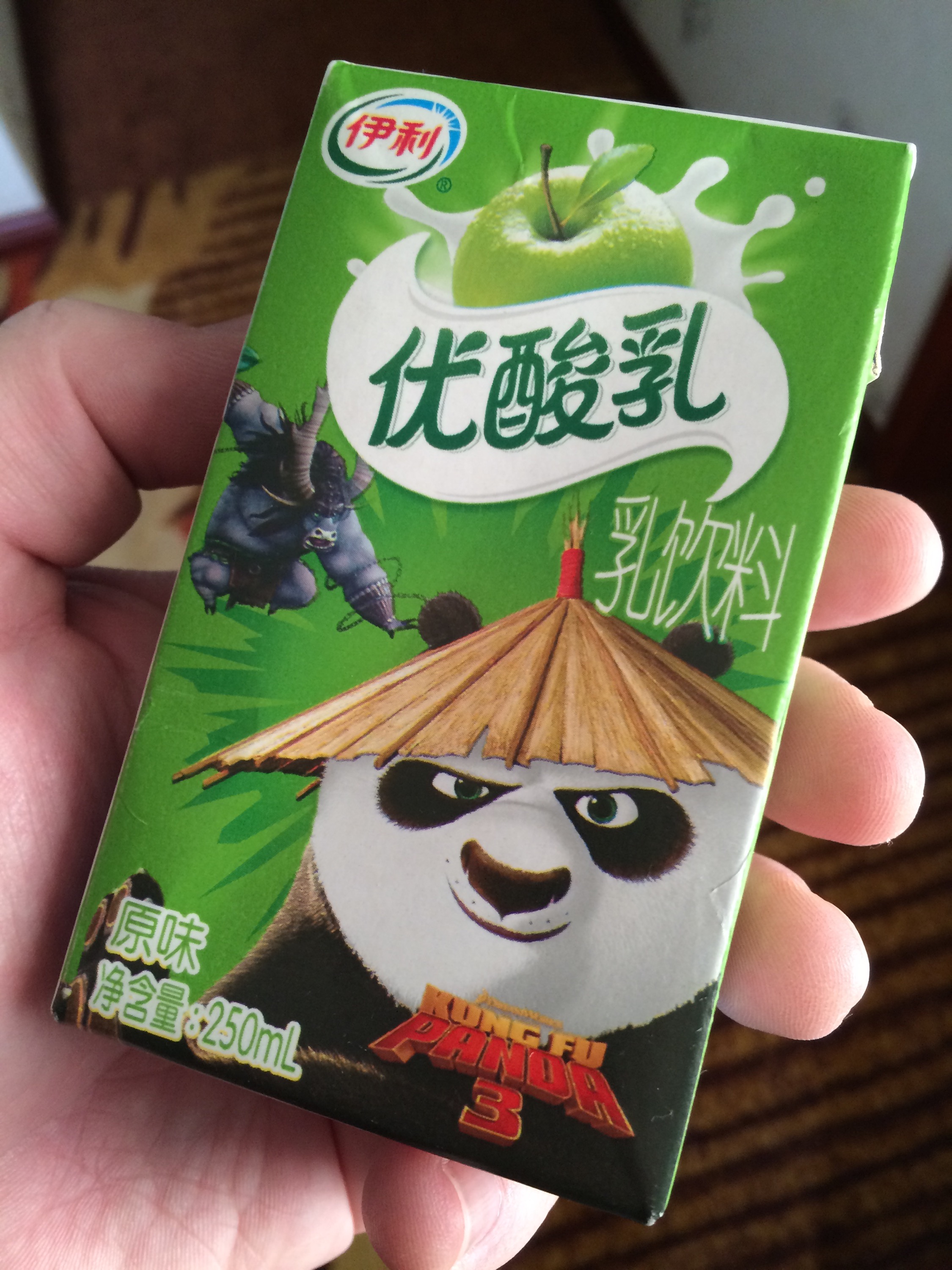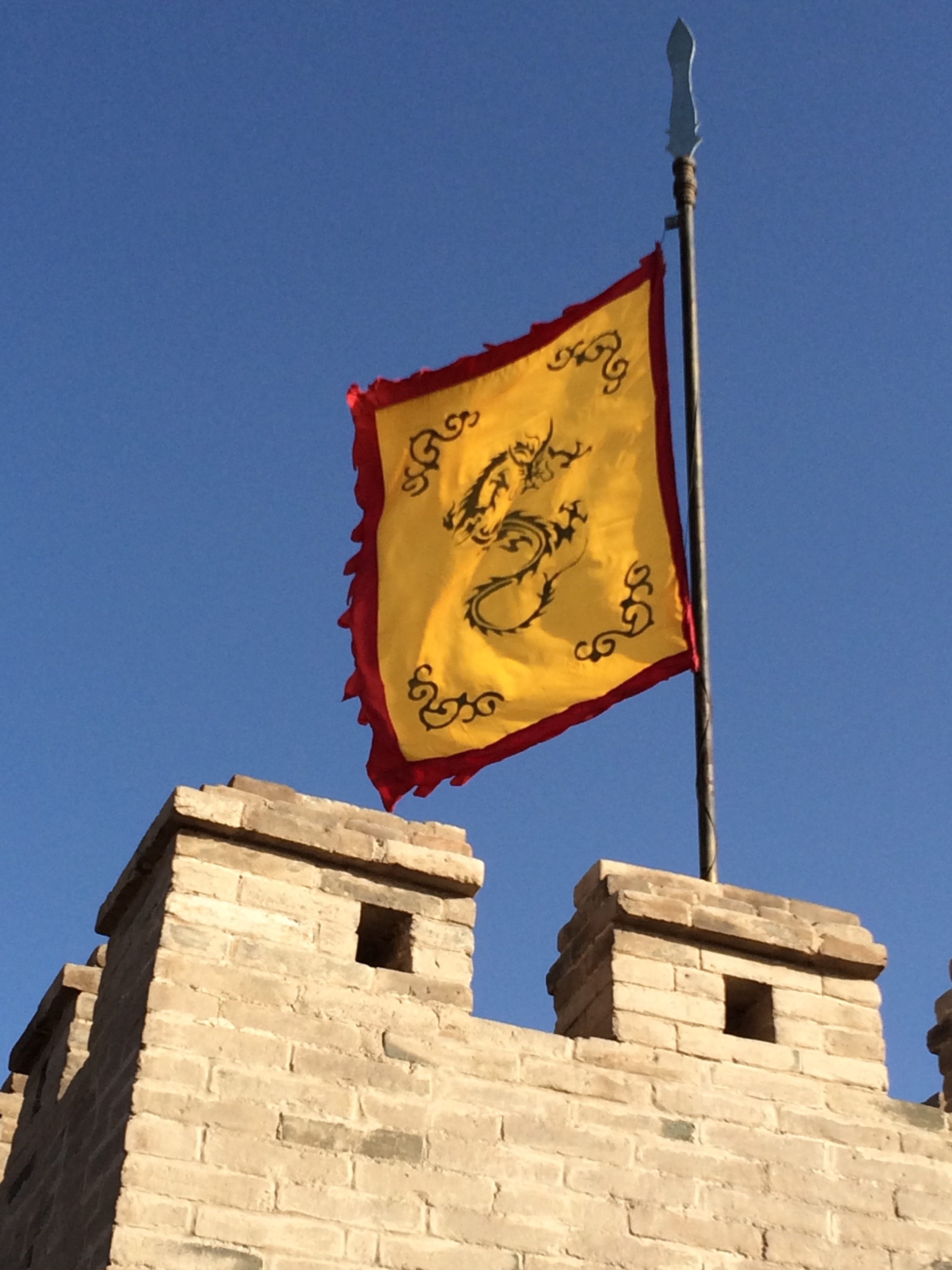 I had come to faraway Gansu province to complete a journey I had started months ago when I visited the Old Dragon’s Head in Shandong where the Great Wall of China dead-ends into the sea. Now I’m here at the Western edge of Ancient China to see the other end of the Great Wall, the fort at Jiayu Pass.
I had come to faraway Gansu province to complete a journey I had started months ago when I visited the Old Dragon’s Head in Shandong where the Great Wall of China dead-ends into the sea. Now I’m here at the Western edge of Ancient China to see the other end of the Great Wall, the fort at Jiayu Pass.
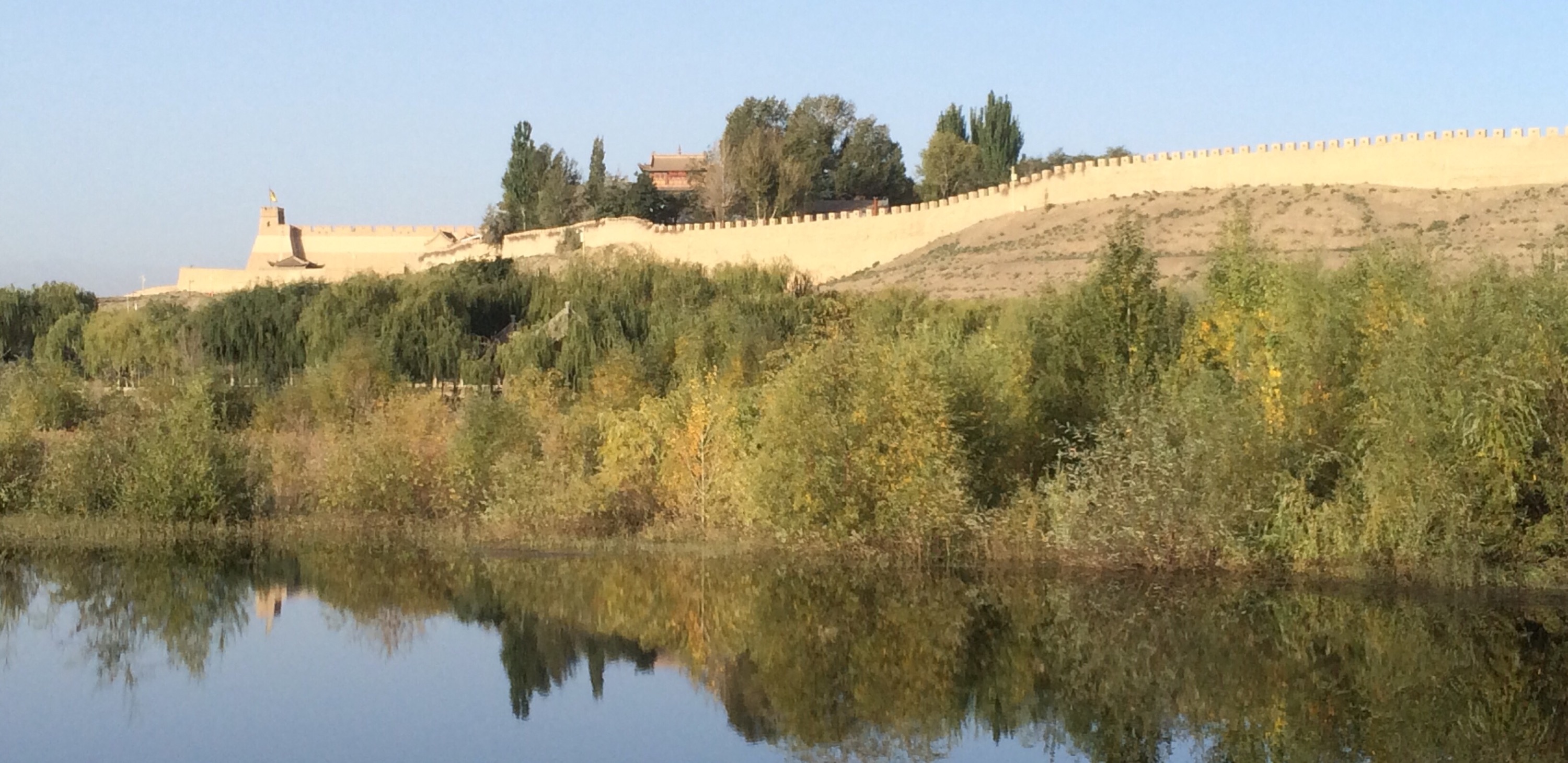 It was built by the Ming dynasty around 1372 at the narrowest part of the Hexi corridor, a string of oases along the northern rim of the Tibetan Plateau. The pass sits between the Qilian Mountains to the south and the Hei Shan Mountains to the north.
It was built by the Ming dynasty around 1372 at the narrowest part of the Hexi corridor, a string of oases along the northern rim of the Tibetan Plateau. The pass sits between the Qilian Mountains to the south and the Hei Shan Mountains to the north.
This was the western edge of Chinese civilization. Beyond this fort was all wilderness until the Northern Silk Road finally brought you to the West.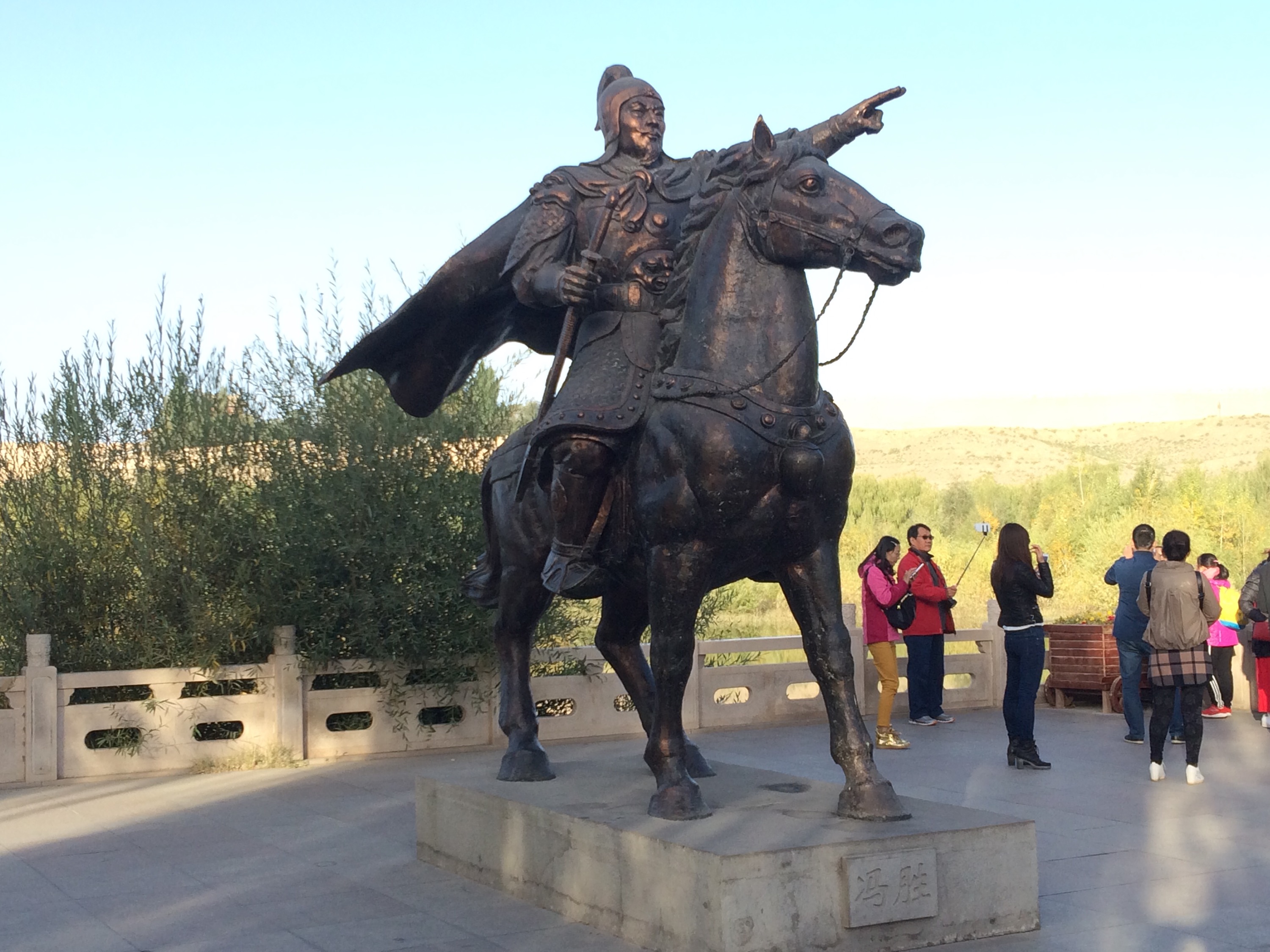
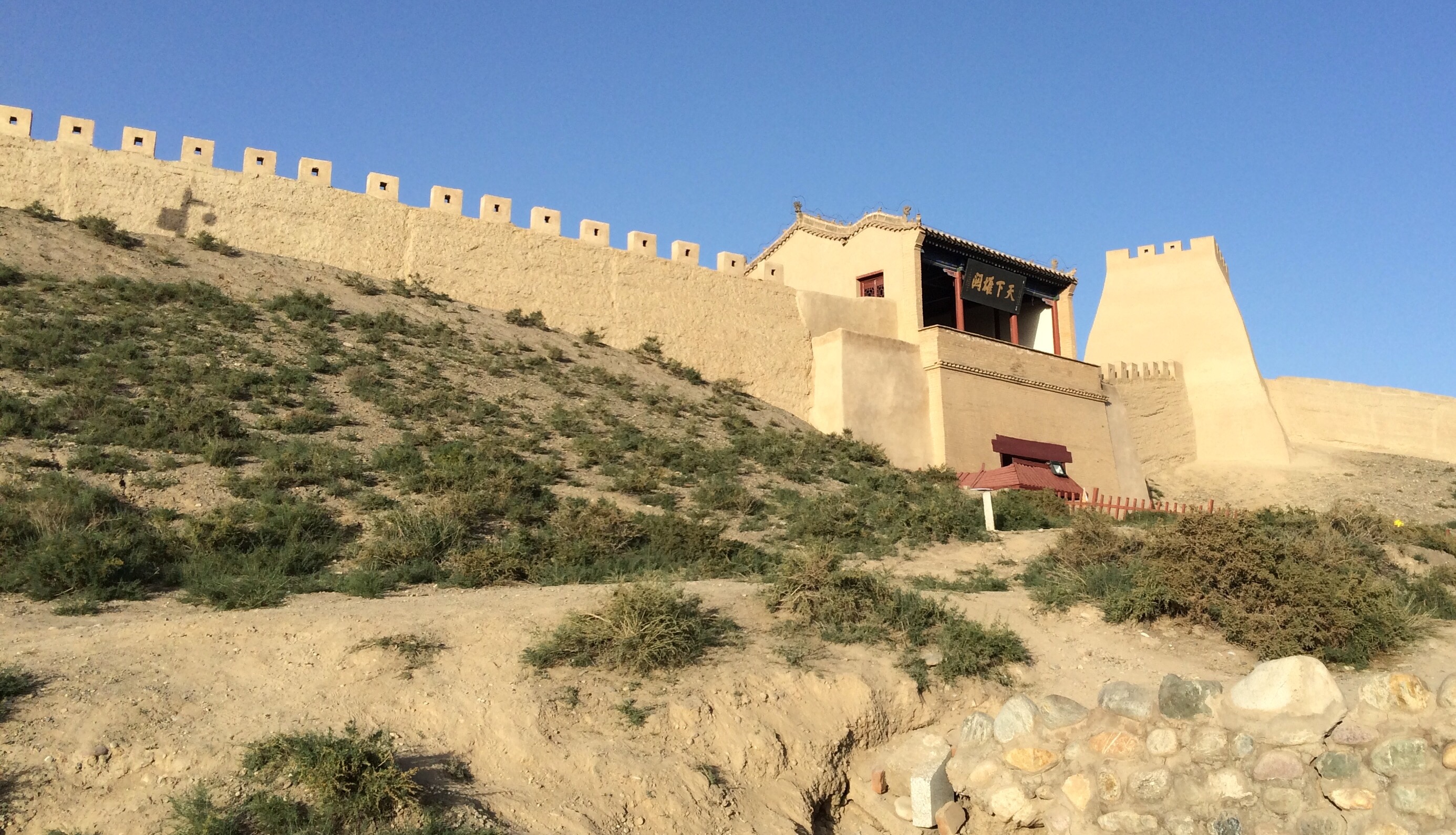
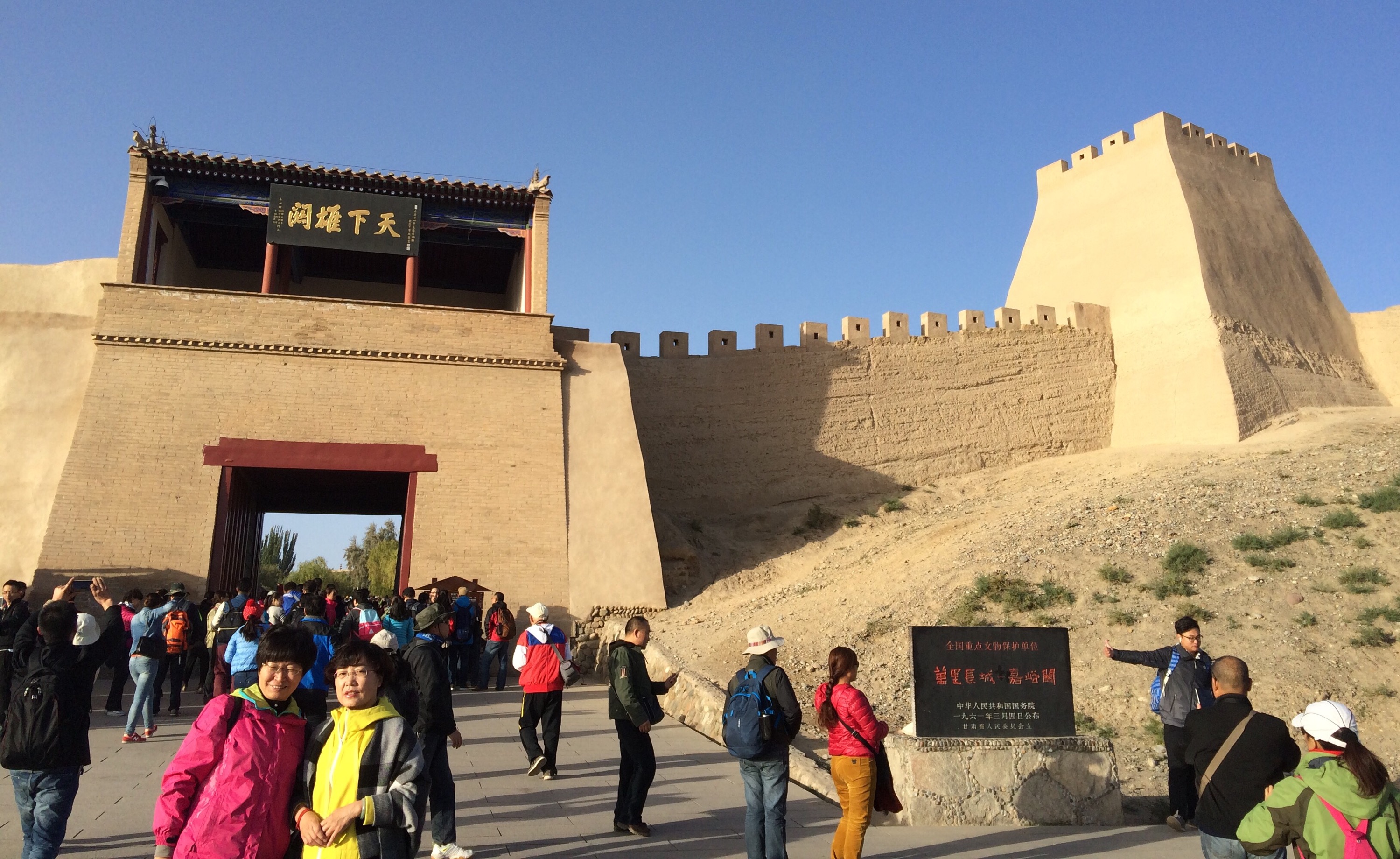 It is said that master craftsman named Yi Kaizhan calculated the design and materials of the fort so accurately that when construction was completed was just a single brick left over.
It is said that master craftsman named Yi Kaizhan calculated the design and materials of the fort so accurately that when construction was completed was just a single brick left over. 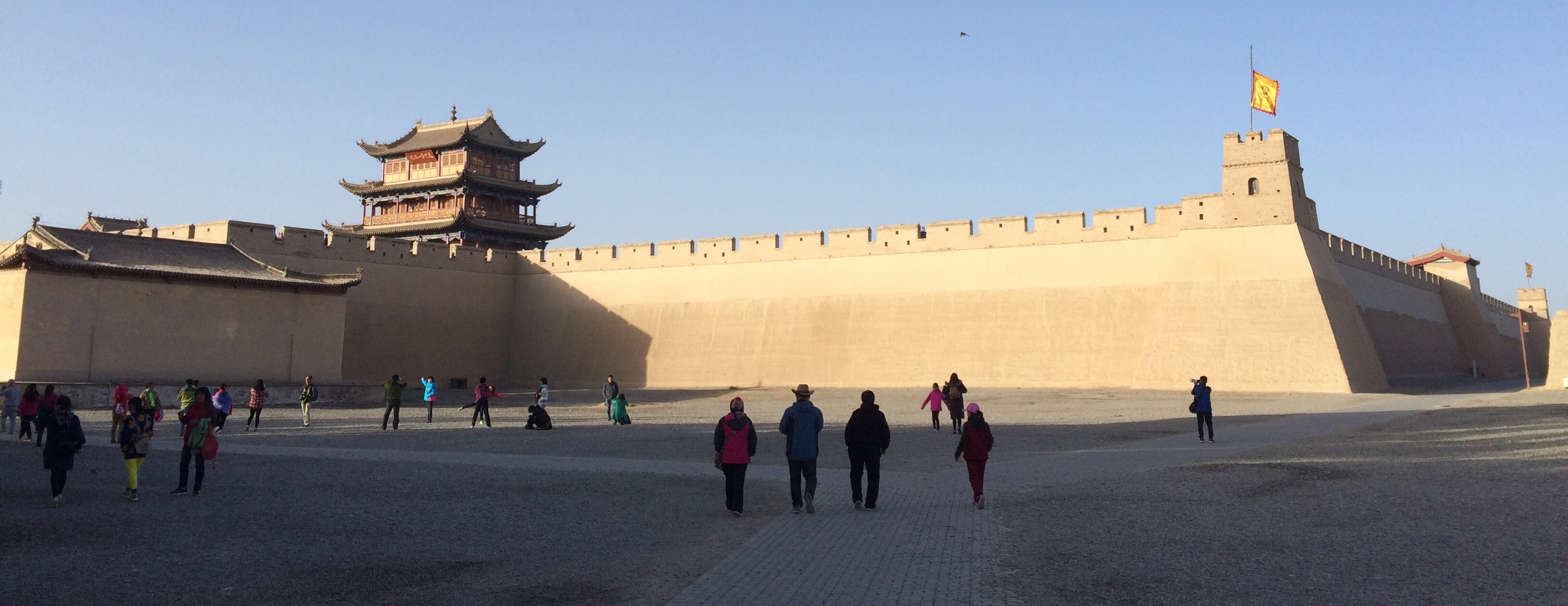 Architectural, it looks like a lot of other structures throughout China. But everything was notably different. Like the Wenchang Hall here, everything was covered in dust.
Architectural, it looks like a lot of other structures throughout China. But everything was notably different. Like the Wenchang Hall here, everything was covered in dust.
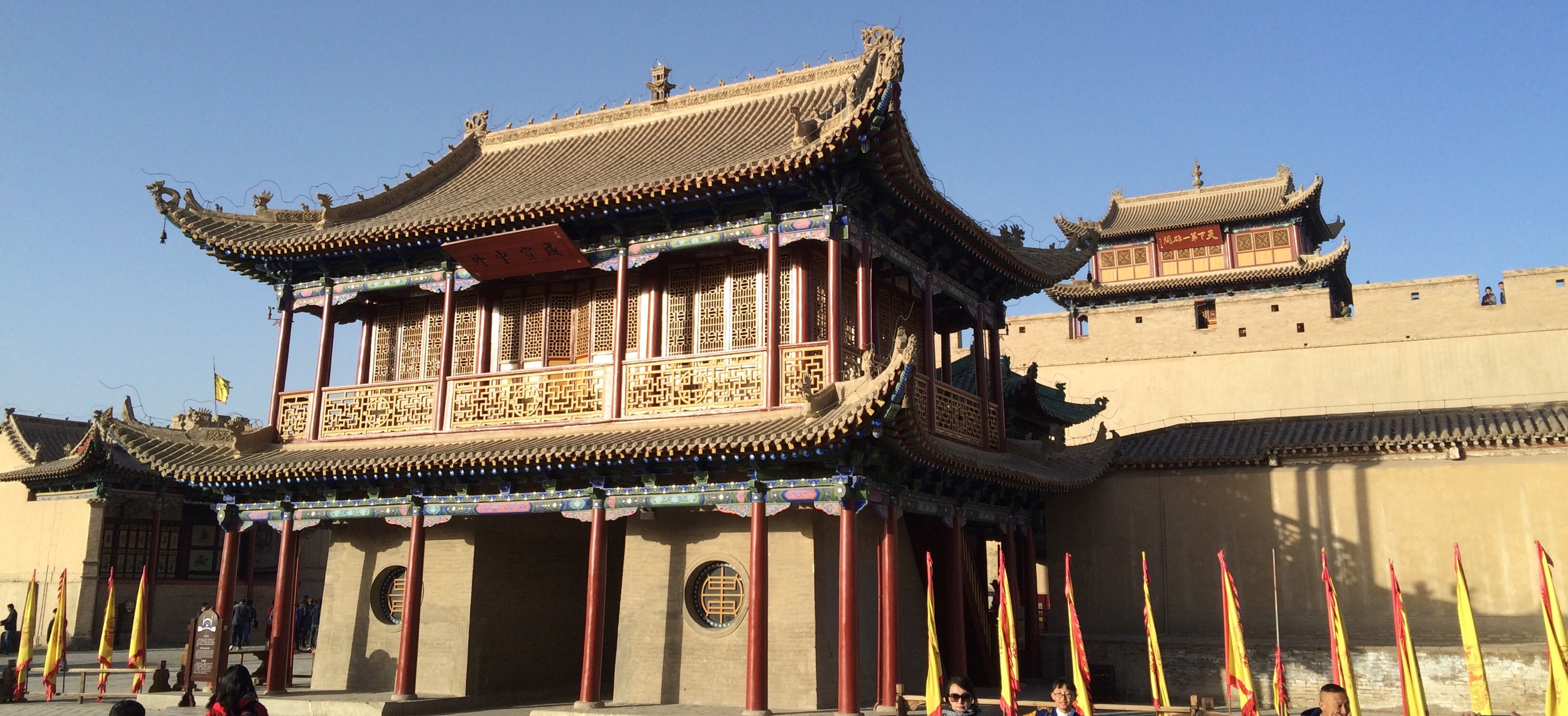 This is the Guandi Temple built in 1506 during the reign of the Ming emperor Zhengde. At the time, it was the largest and most popular temple in the Hexi area.
This is the Guandi Temple built in 1506 during the reign of the Ming emperor Zhengde. At the time, it was the largest and most popular temple in the Hexi area.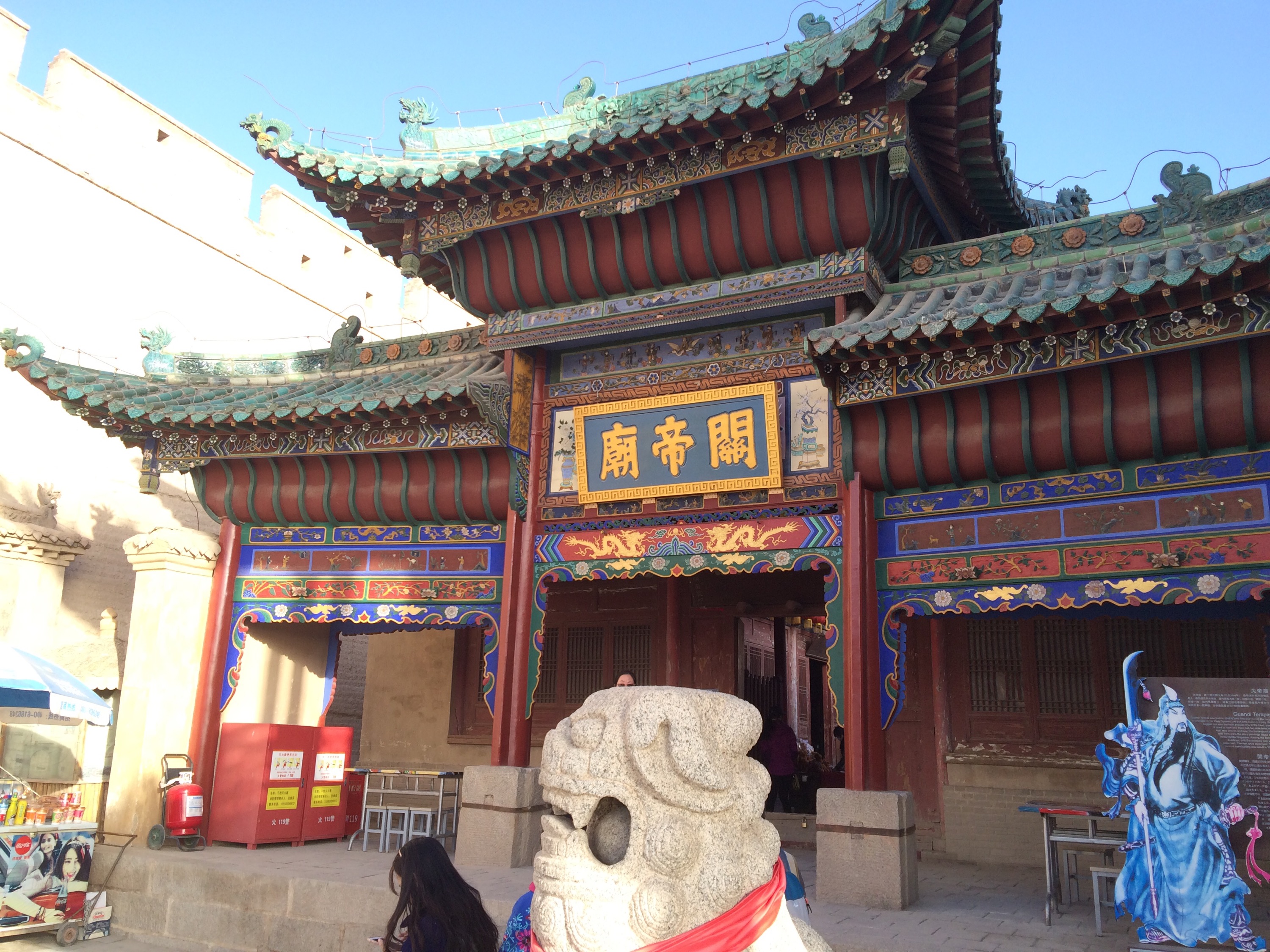 This stage was built in 1792 during the reign of Qianlong of the Qing dynasty. On the screens in the back are depictions of the Eight Immortals. There is an inscription on both sides of the stage which translates to “The performances not only show the stories of sadness, goodness, separation, and happy gatherings but also describe different types of people including the wise, the loyal, the foolish and the traitorous whom can be judged by their facial makeup in operas.”
This stage was built in 1792 during the reign of Qianlong of the Qing dynasty. On the screens in the back are depictions of the Eight Immortals. There is an inscription on both sides of the stage which translates to “The performances not only show the stories of sadness, goodness, separation, and happy gatherings but also describe different types of people including the wise, the loyal, the foolish and the traitorous whom can be judged by their facial makeup in operas.”
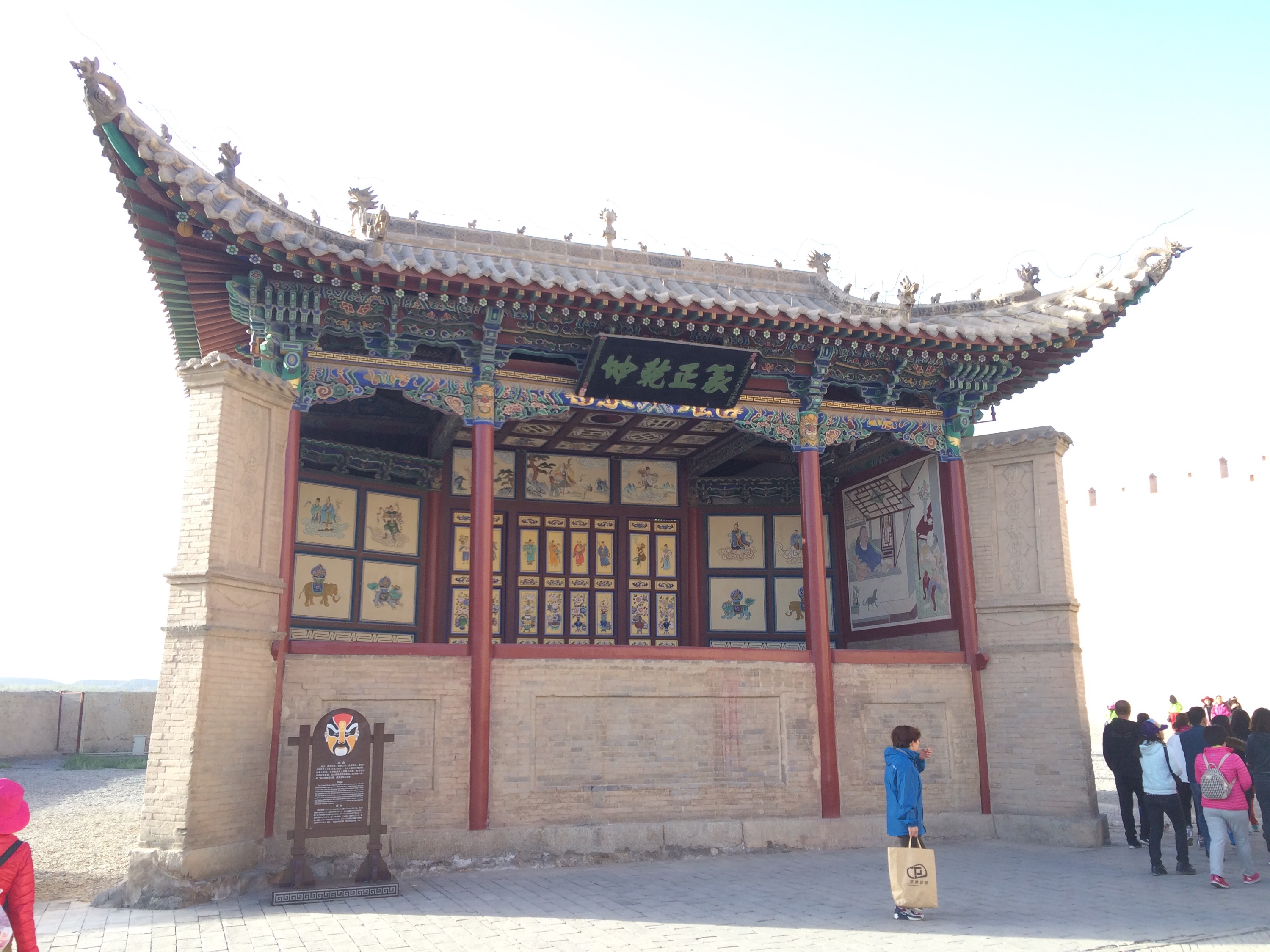 This is the fort’s South Gate. It is a testament to how catchy jingles can be that I instantly caught myself singing, “Pete Ellis Dodge, Long Beach Freeway, Firestone exit, South Gate.”
This is the fort’s South Gate. It is a testament to how catchy jingles can be that I instantly caught myself singing, “Pete Ellis Dodge, Long Beach Freeway, Firestone exit, South Gate.”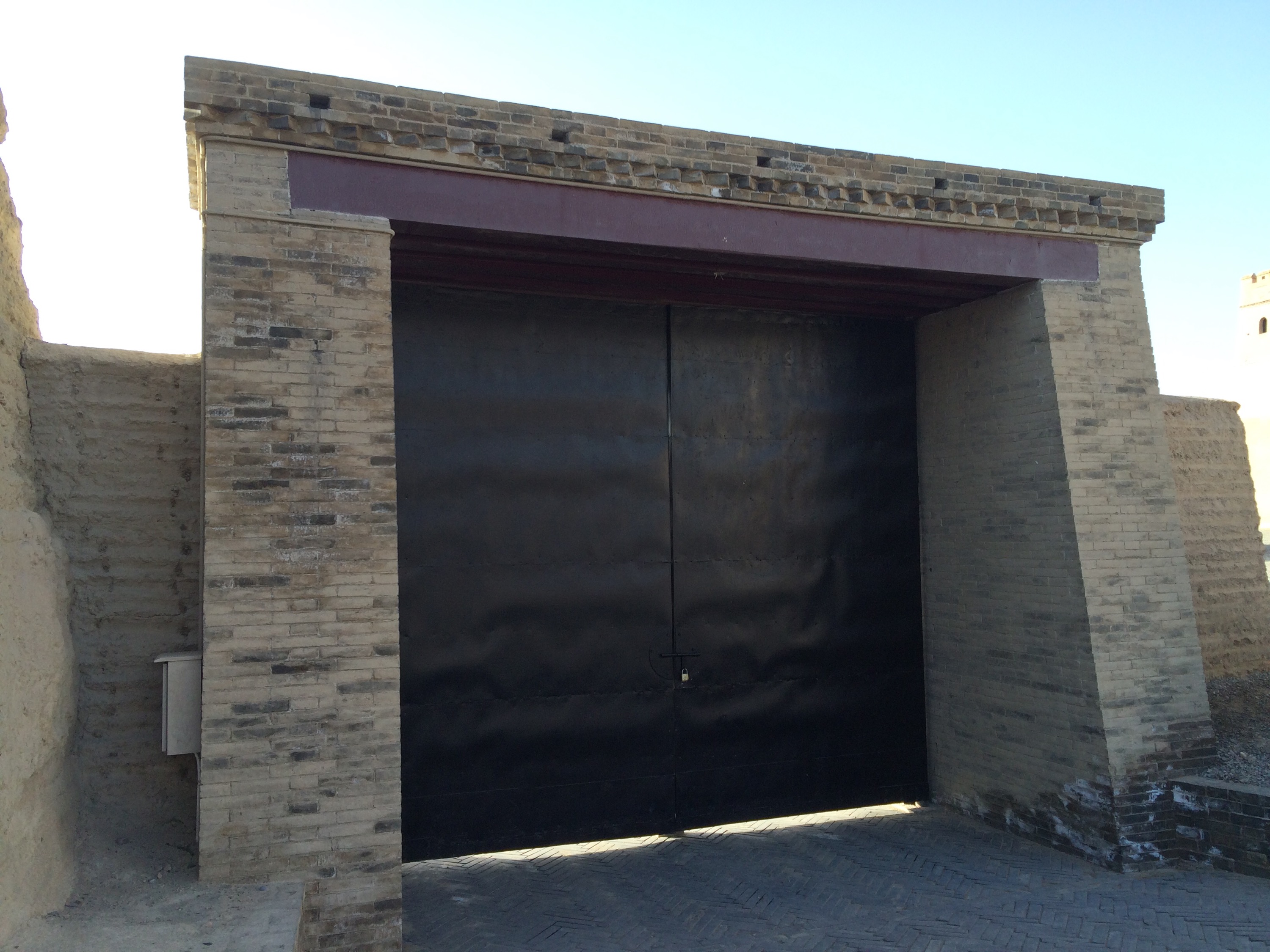 The fort comprises an outer moat, an outer city, and an inner city. The Chaozong Door leads from the outer city into the inner city.
The fort comprises an outer moat, an outer city, and an inner city. The Chaozong Door leads from the outer city into the inner city. 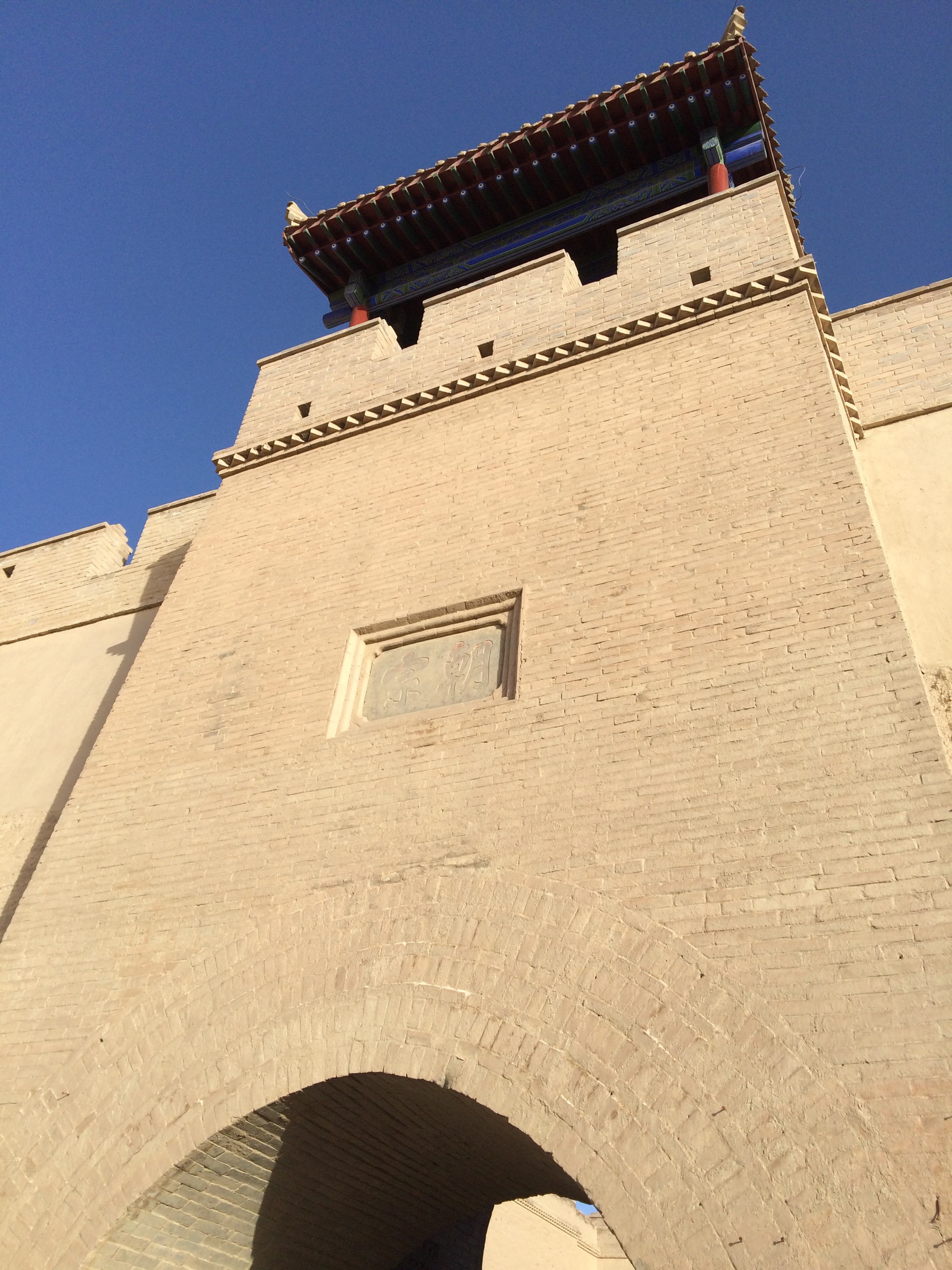 This is the inner city’s Guanghua Gate.
This is the inner city’s Guanghua Gate.
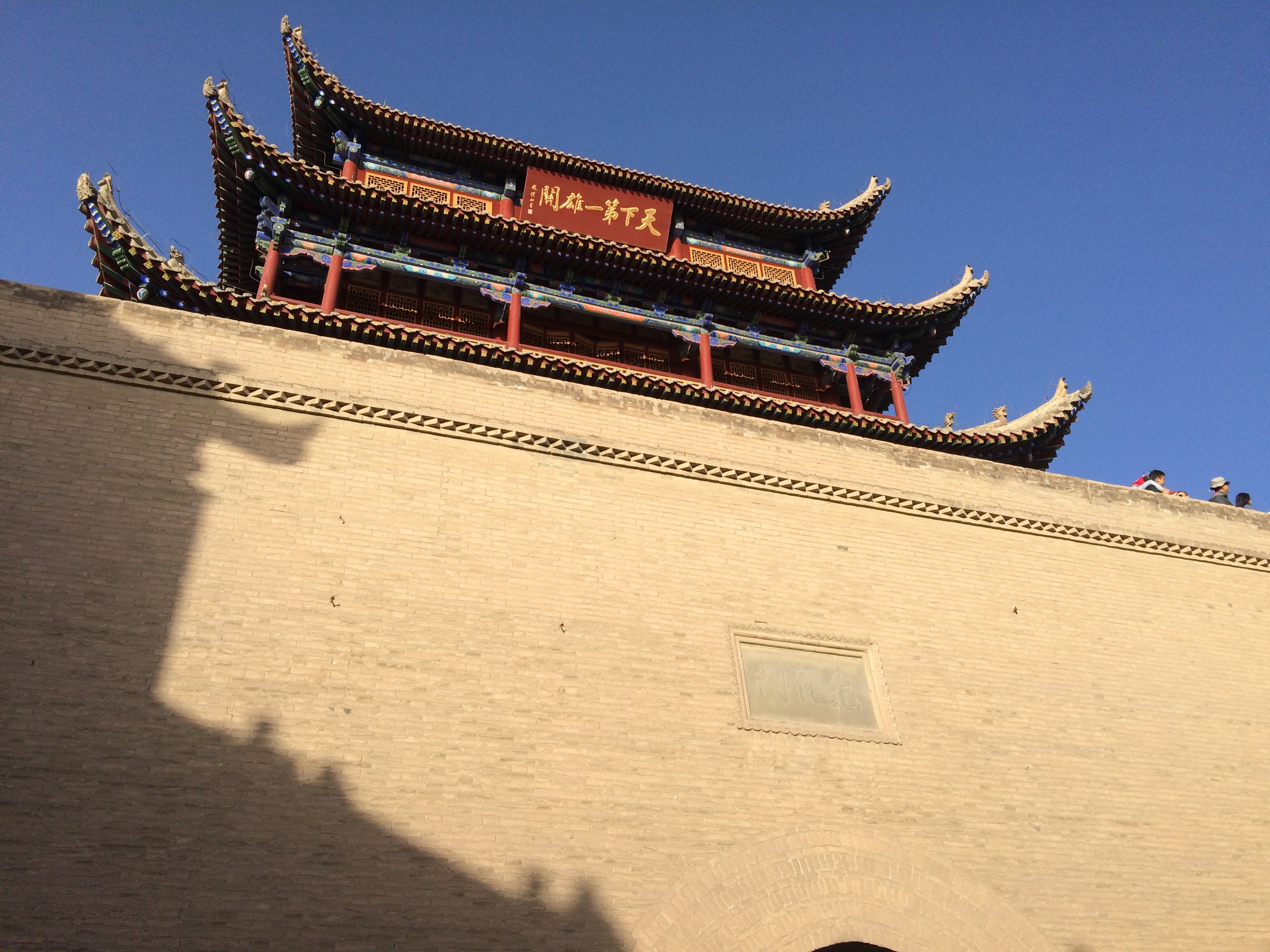 A view into the city, teeming with tourists and vendors hawking their wares.
A view into the city, teeming with tourists and vendors hawking their wares. 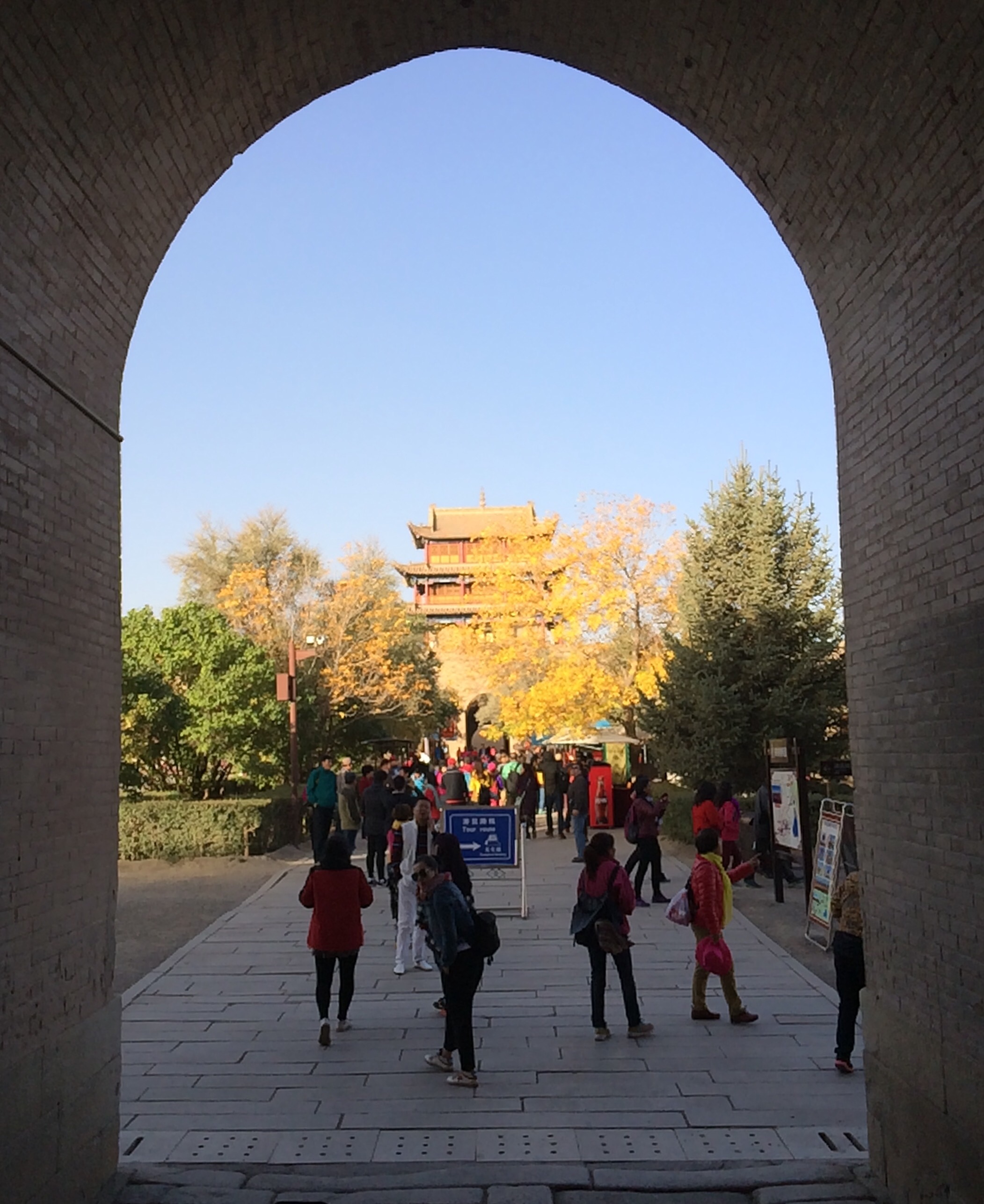 My initial “moneylenders in the temple” pique passed when I realized that this was not a holy place but merely an artifact of an ancient military-industrial complex.
My initial “moneylenders in the temple” pique passed when I realized that this was not a holy place but merely an artifact of an ancient military-industrial complex.
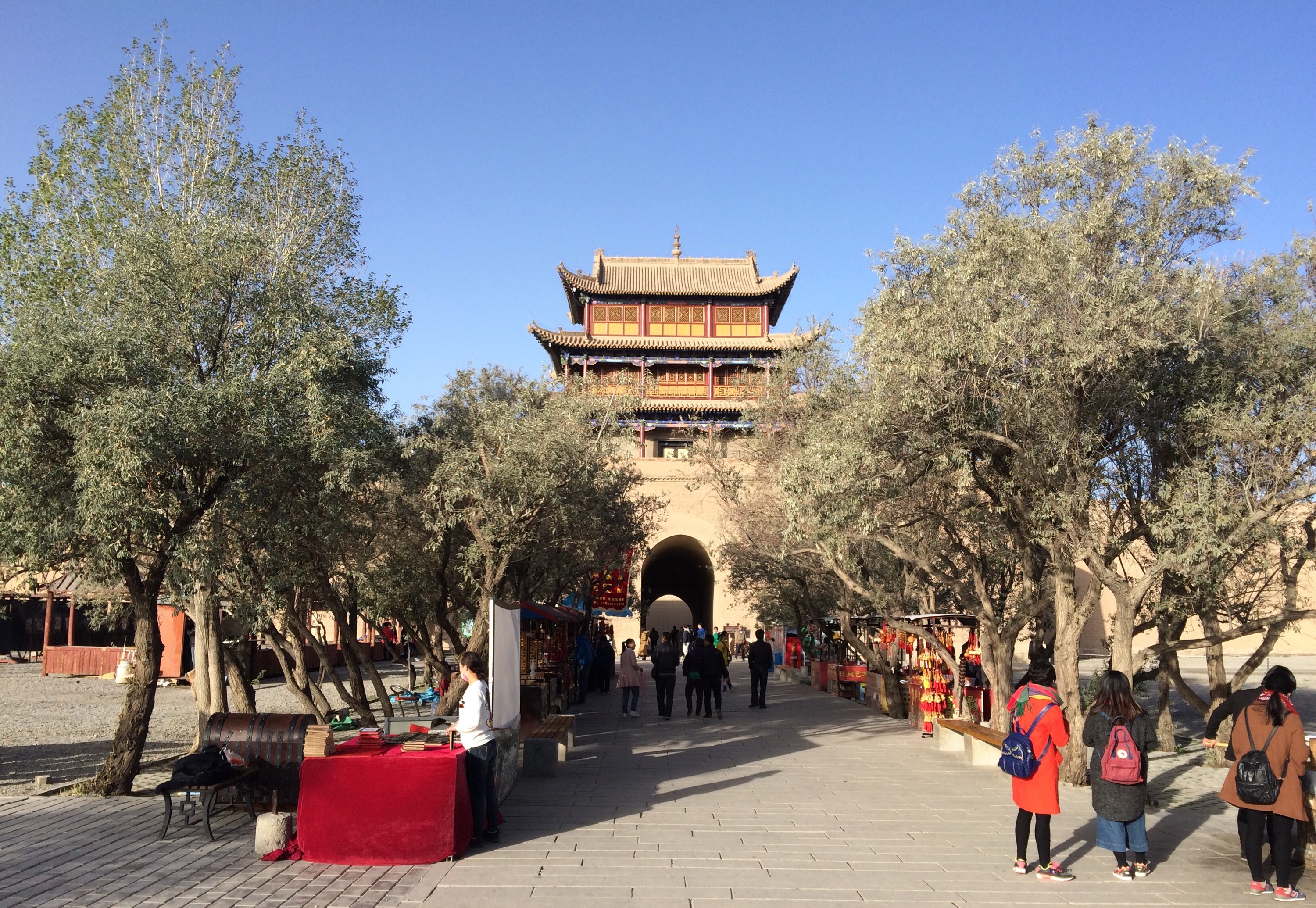
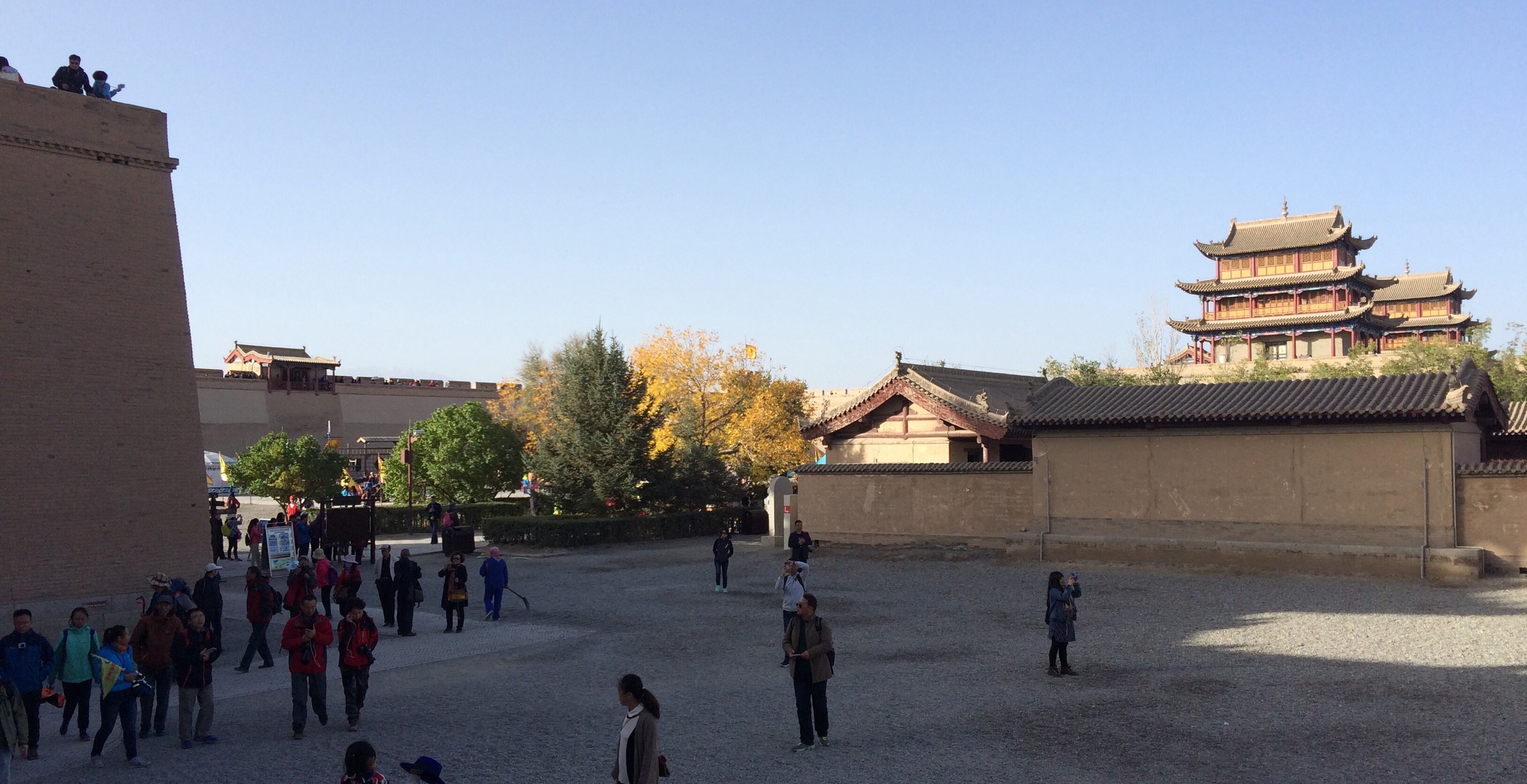 Looking up at the Jiayuguan Pass Tower upon the outer city wall. It was built in 1495, but in 1873 Zuo Zongtang — who American know by the name General Tso — inscribed the words “First and Greatest Pass Under Heaven” on it. (Not to be confused with “First Pass Under Heaven” which is the name of the Shanhai Pass at the other end of the wall.)
Looking up at the Jiayuguan Pass Tower upon the outer city wall. It was built in 1495, but in 1873 Zuo Zongtang — who American know by the name General Tso — inscribed the words “First and Greatest Pass Under Heaven” on it. (Not to be confused with “First Pass Under Heaven” which is the name of the Shanhai Pass at the other end of the wall.)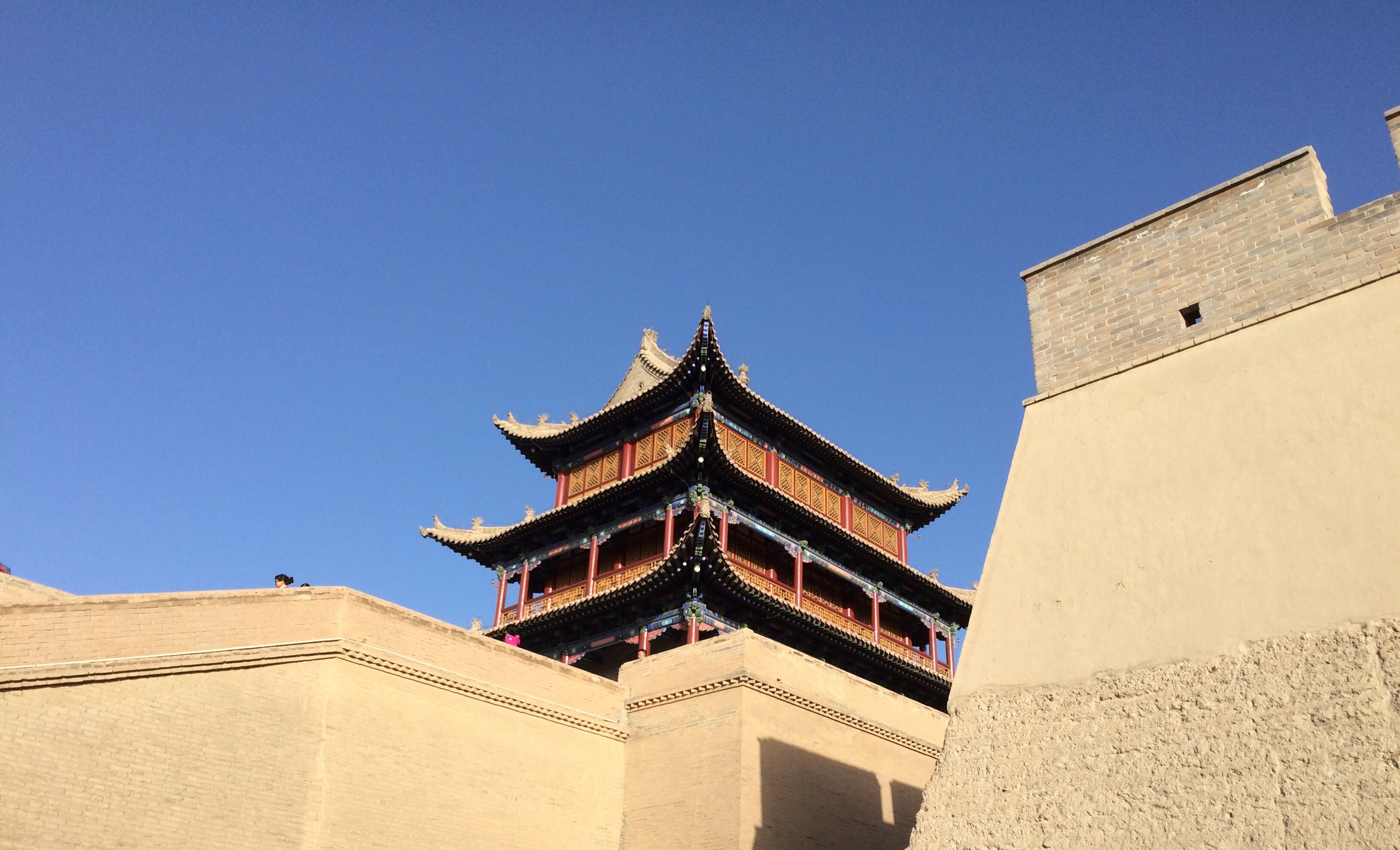 This riding track, built at a 23°, allowed horses to run up to the outer city wall.
This riding track, built at a 23°, allowed horses to run up to the outer city wall.
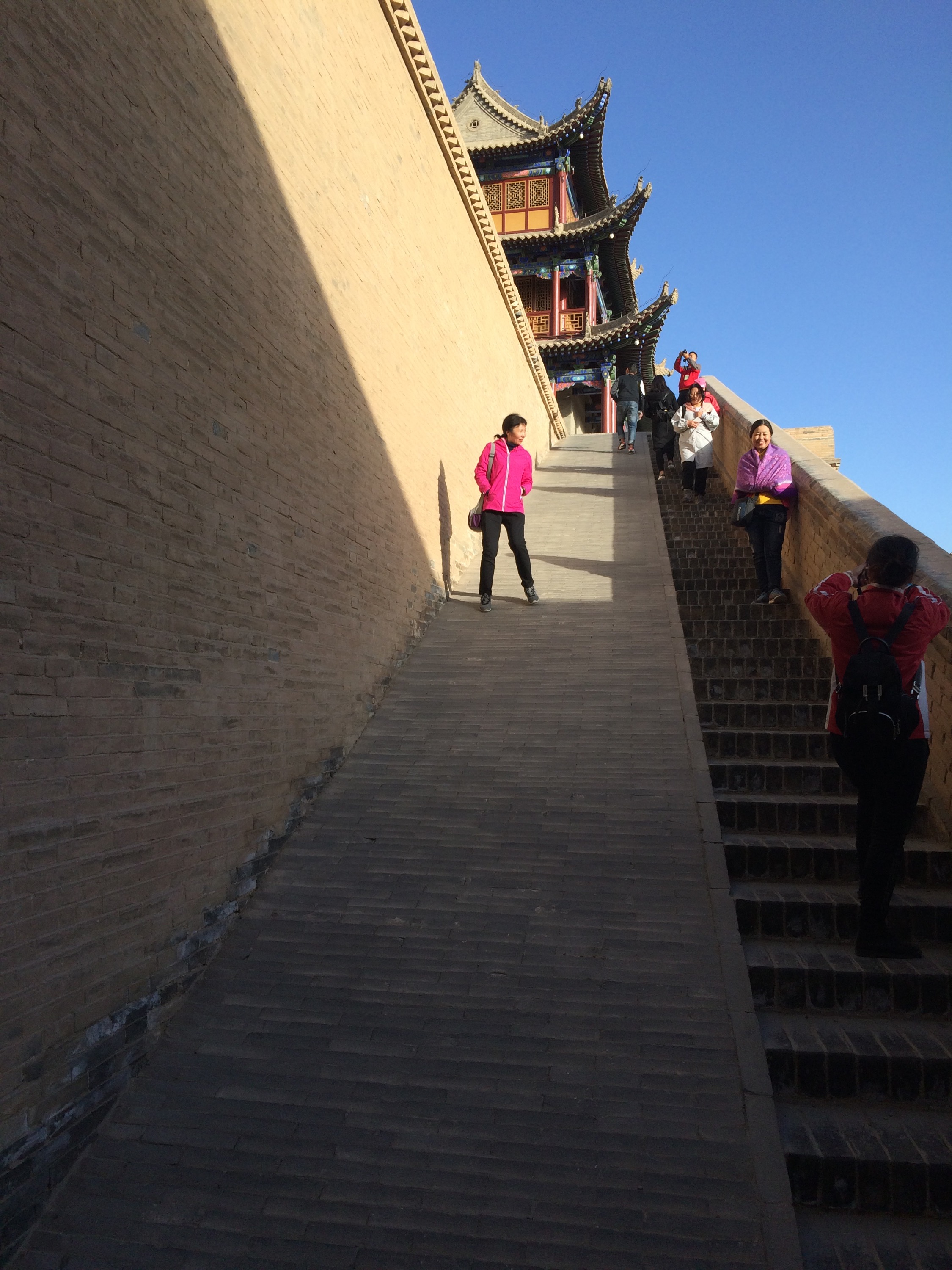 In the nearby Great Wall Museum, a quote from one of the exhibits resonated with me. “With the fire weapon developed, the was were crueler.”
In the nearby Great Wall Museum, a quote from one of the exhibits resonated with me. “With the fire weapon developed, the was were crueler.” 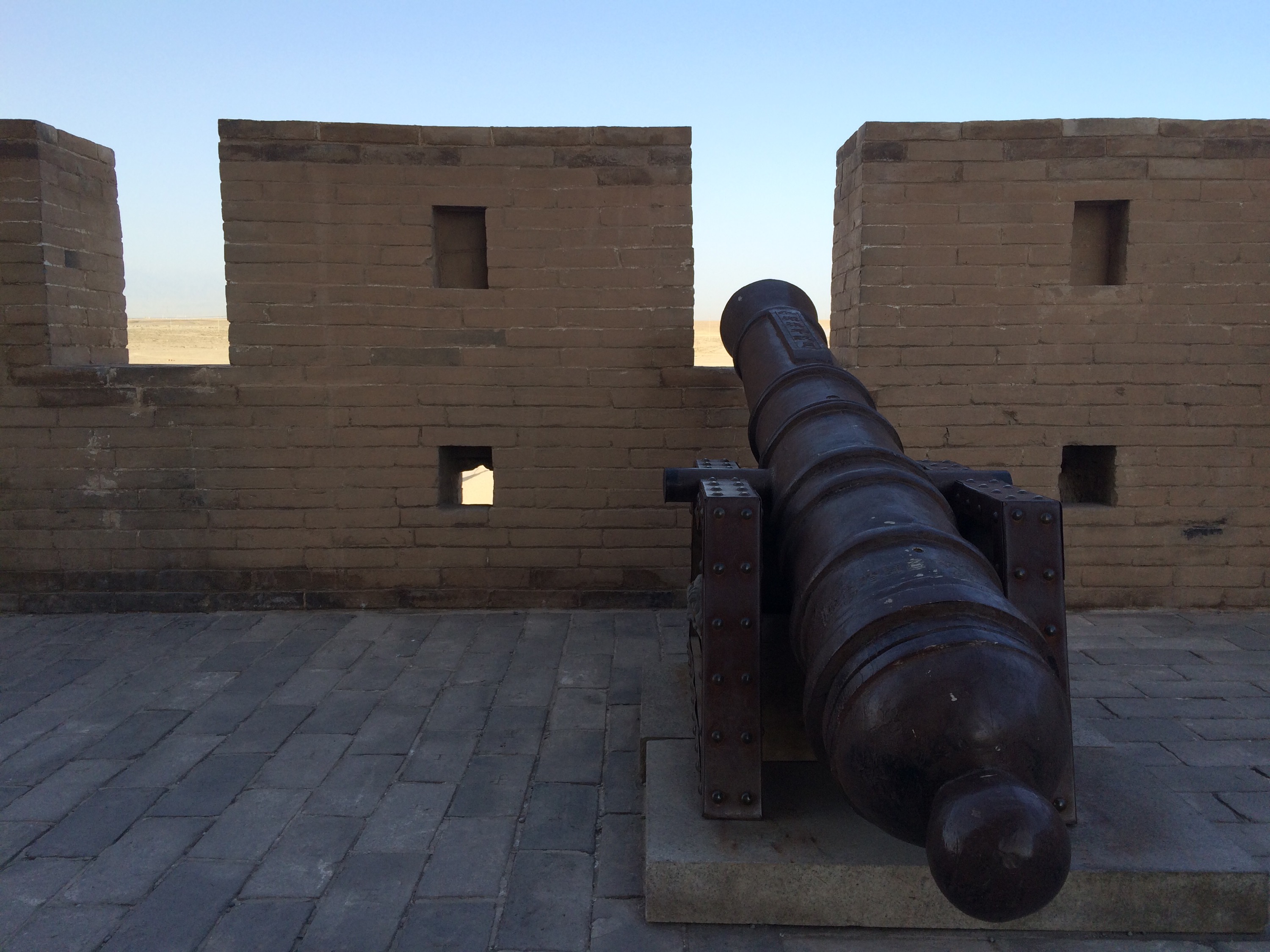
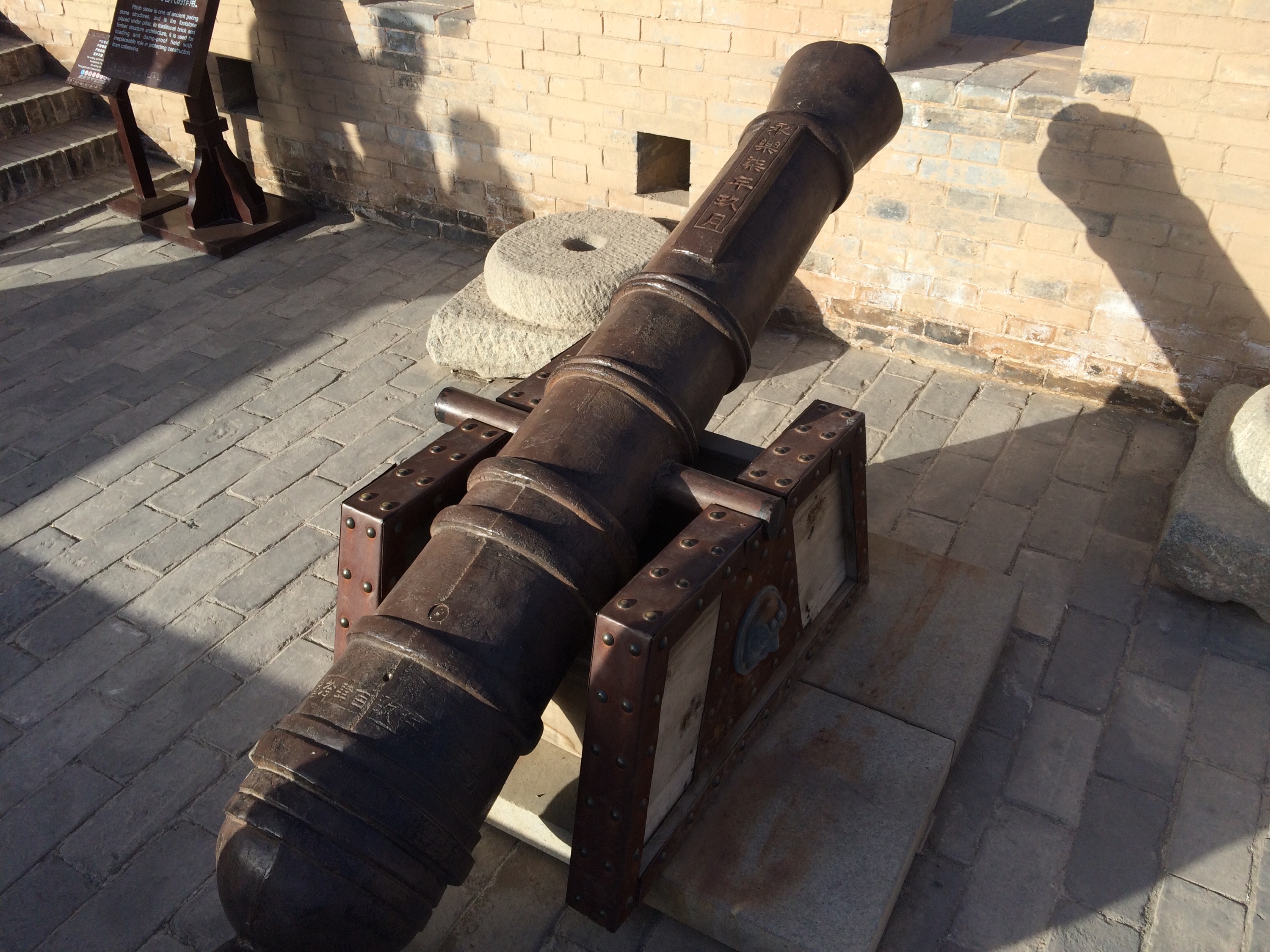 Looking out west, out into the wilderness. In the distance are the Qilian Mountains. In the foreground, you can see the carnivalesque atmosphere with camel and ATV rides to entertain the tourists.
Looking out west, out into the wilderness. In the distance are the Qilian Mountains. In the foreground, you can see the carnivalesque atmosphere with camel and ATV rides to entertain the tourists.
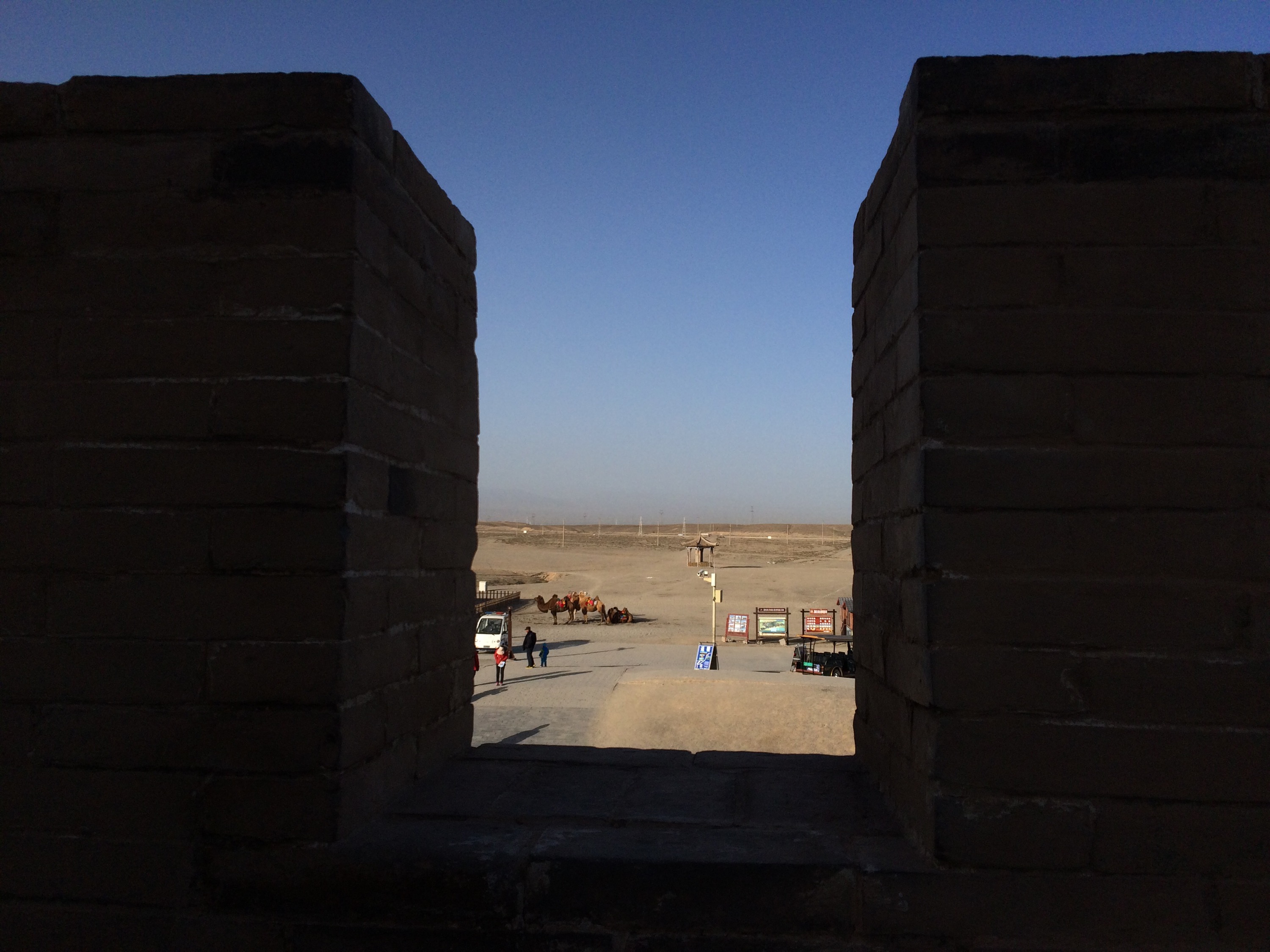 A shot looking straight down the edge of the Great Wall, into the dirt and gravel.
A shot looking straight down the edge of the Great Wall, into the dirt and gravel. 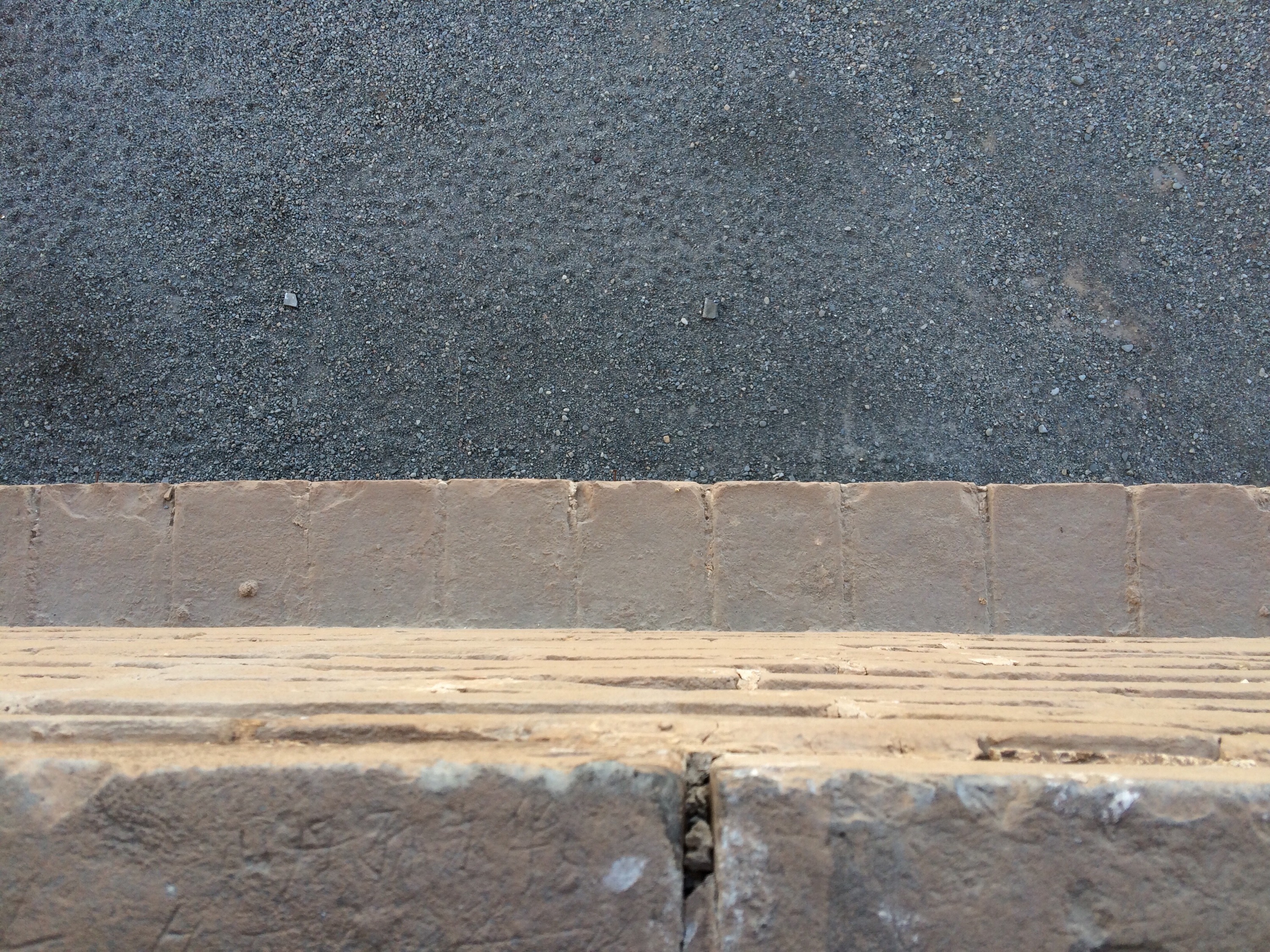
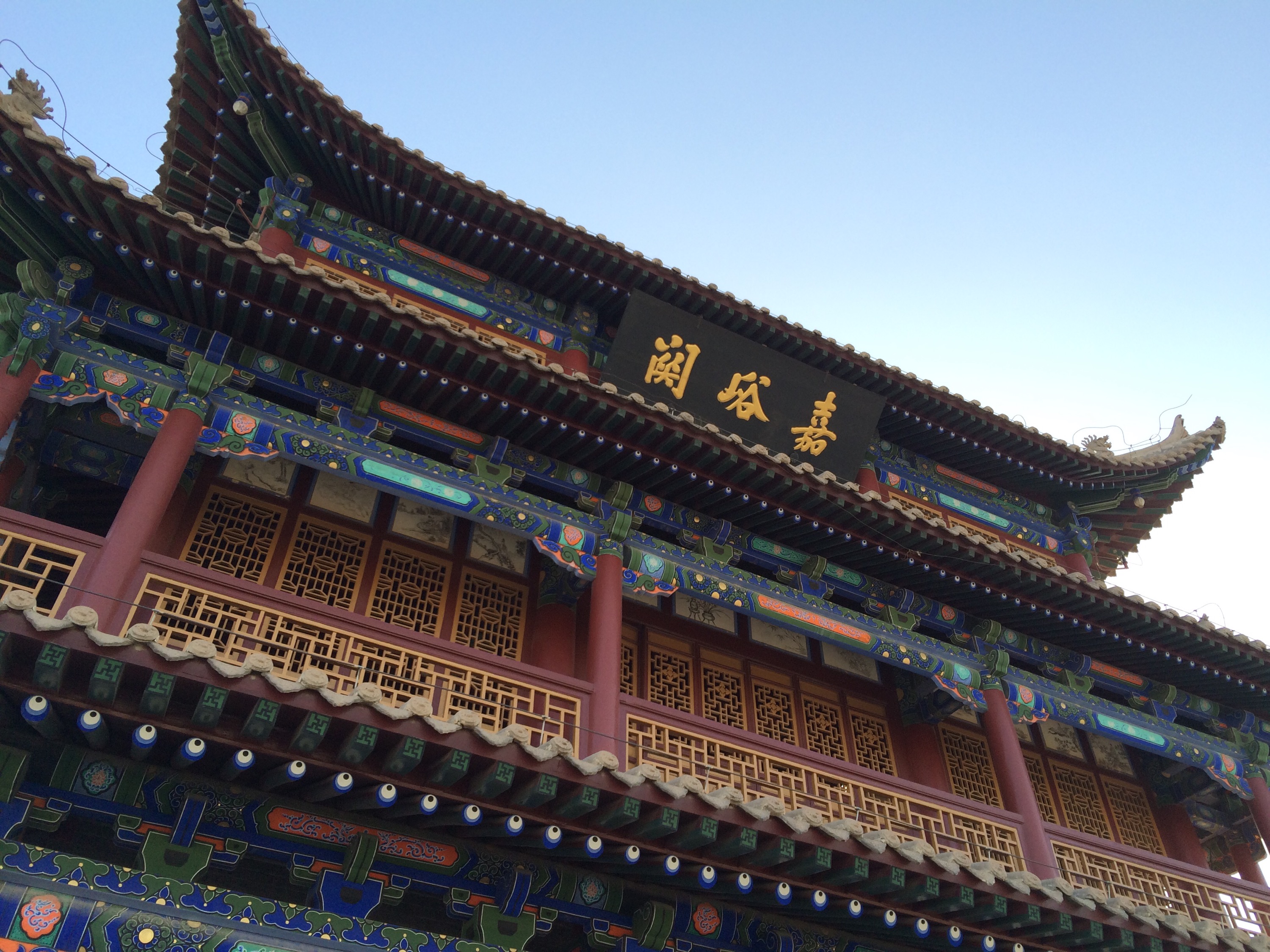 In the distance to the northeast of the fort, you can see yet another nuclear power plant.
In the distance to the northeast of the fort, you can see yet another nuclear power plant. 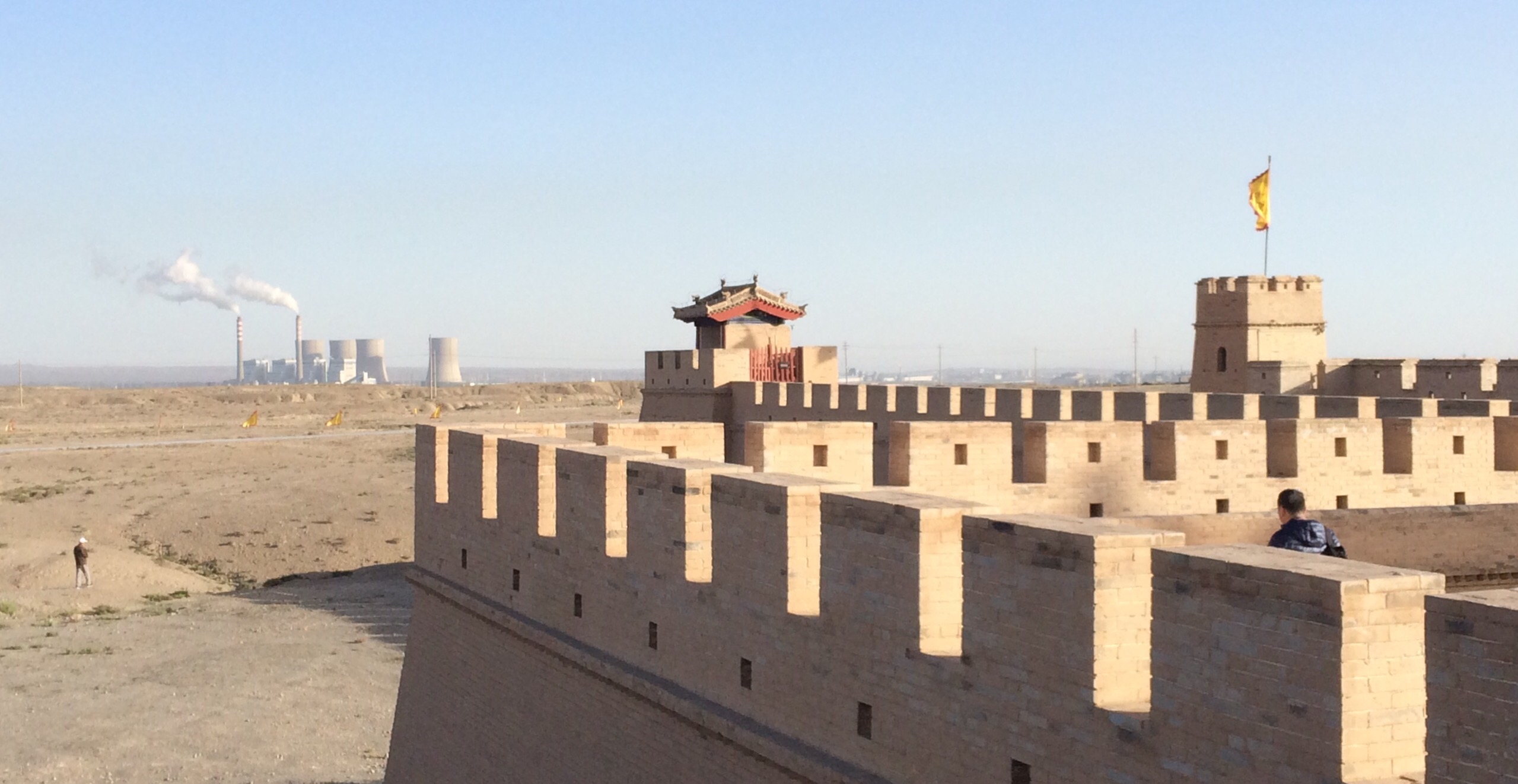 Looking in to the inner city from the outer city wall.
Looking in to the inner city from the outer city wall.
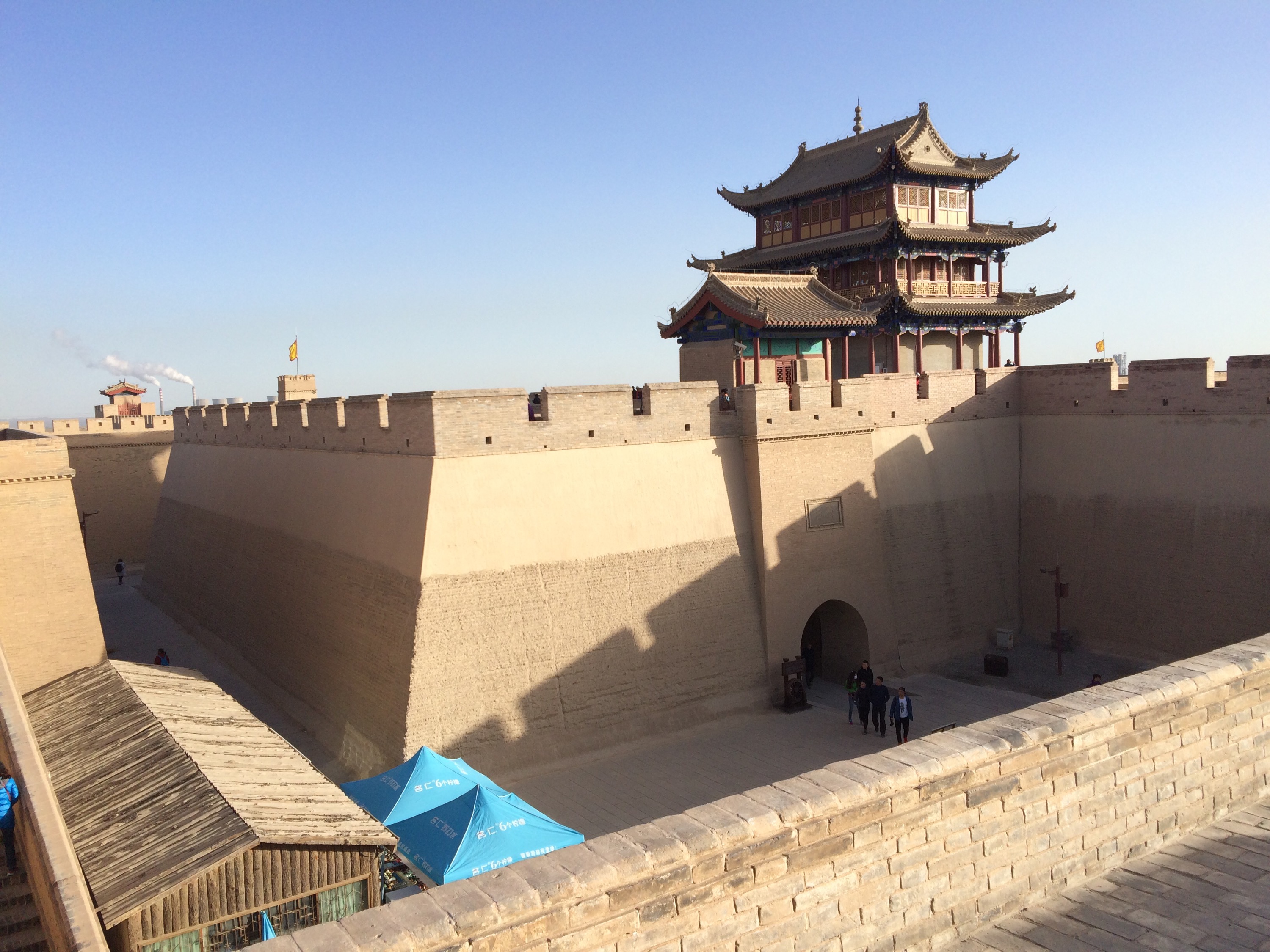
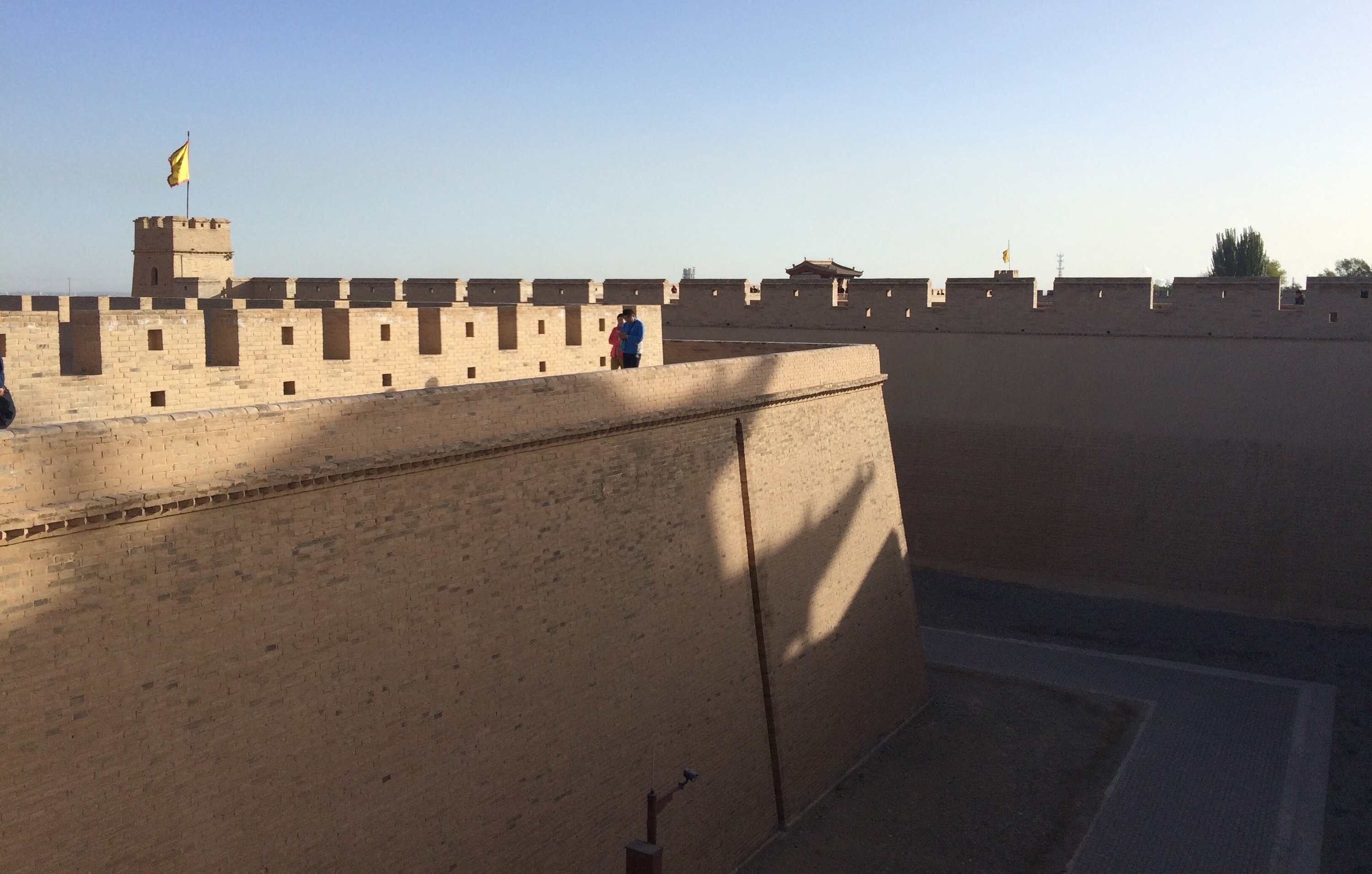
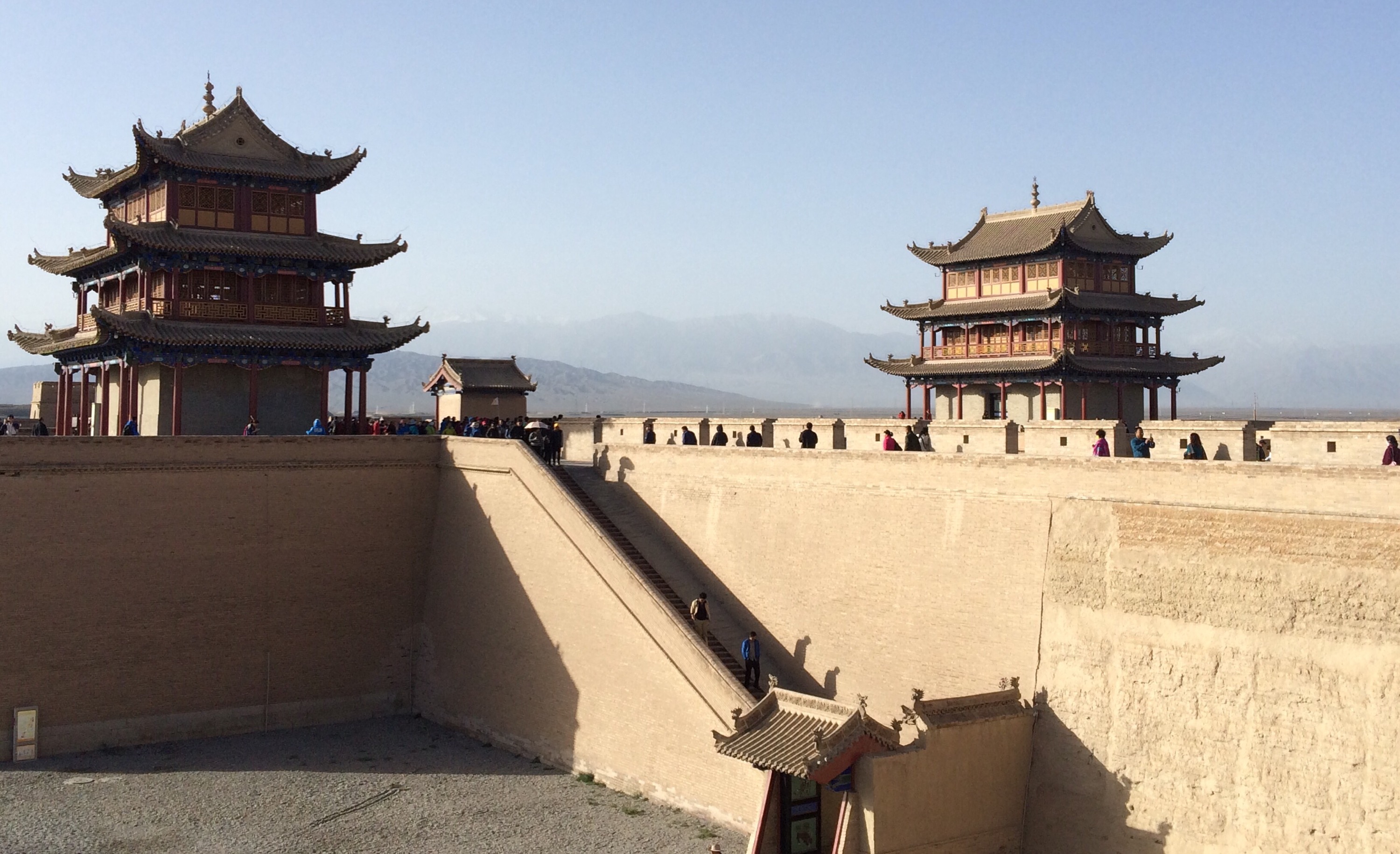
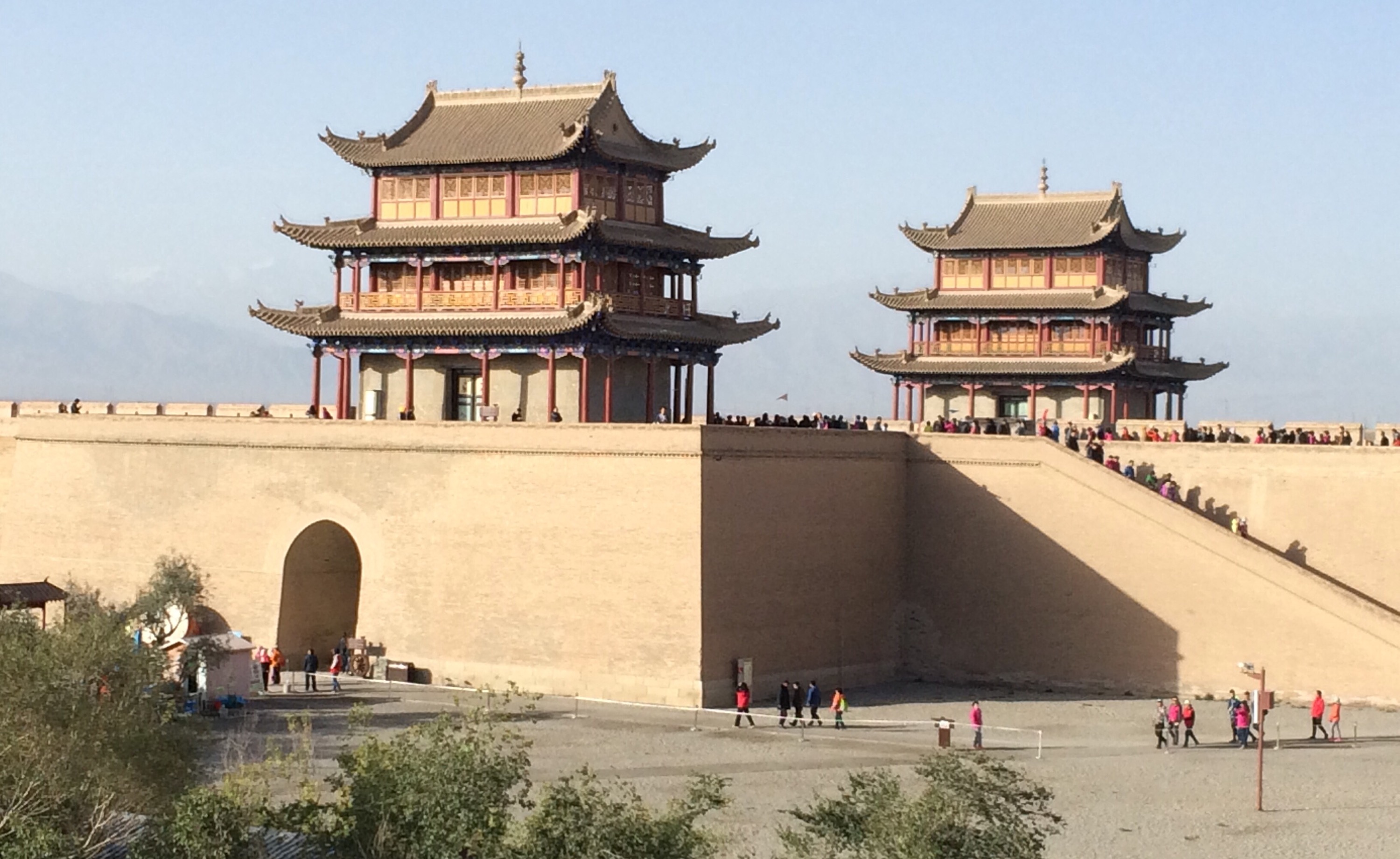
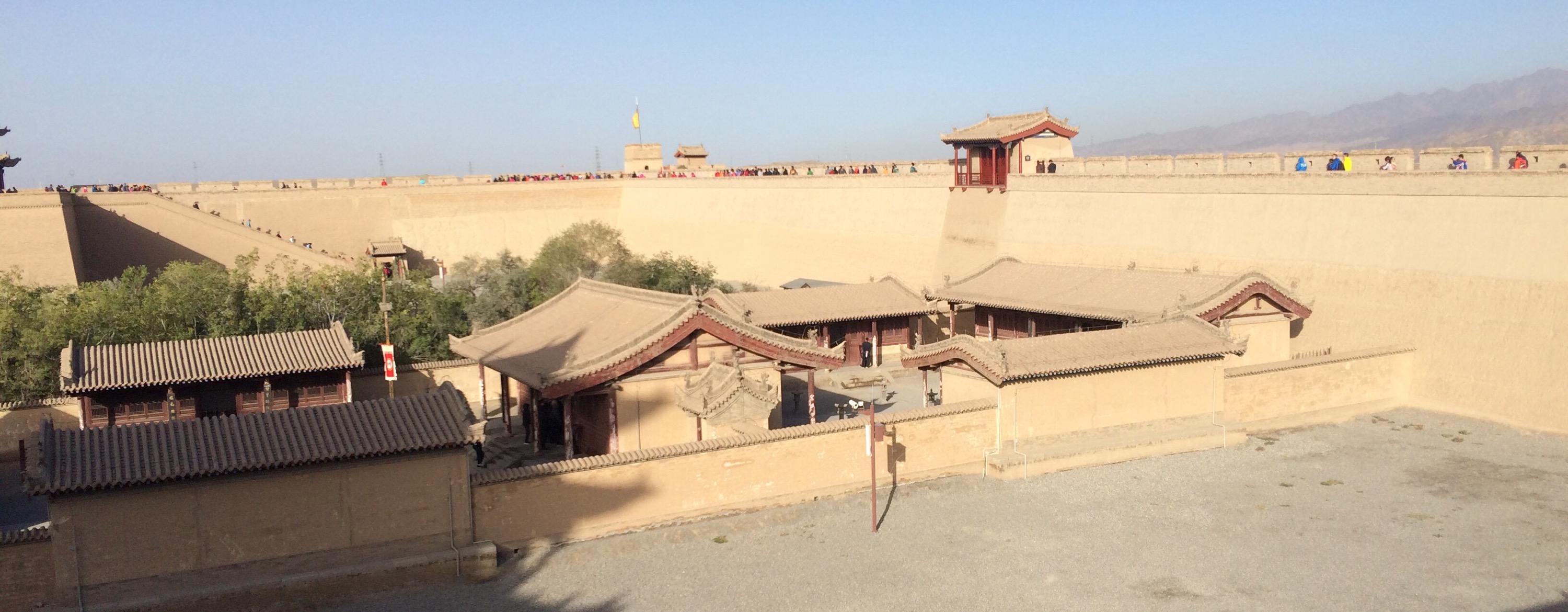 Views from the atop the inner city.
Views from the atop the inner city.
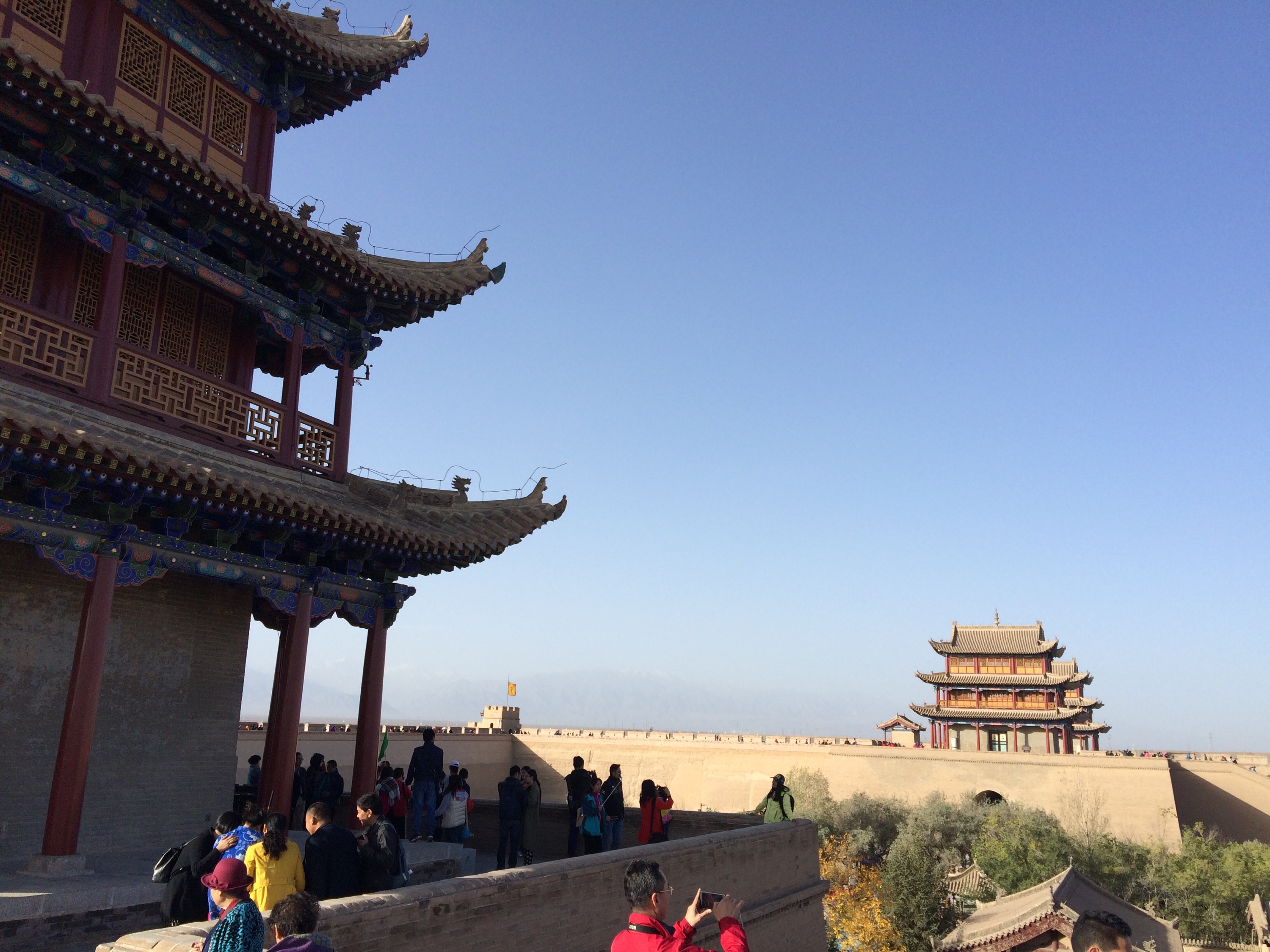
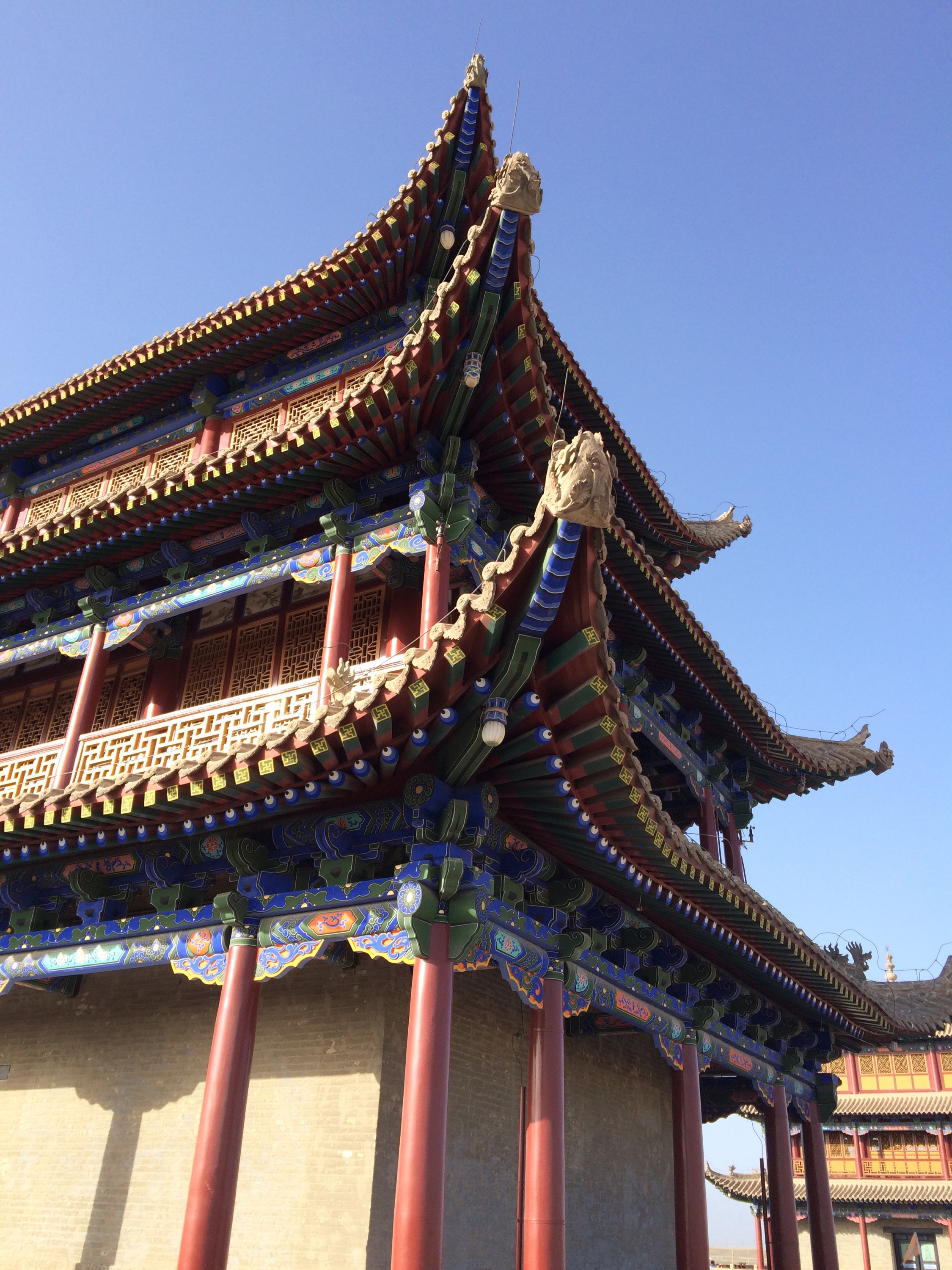
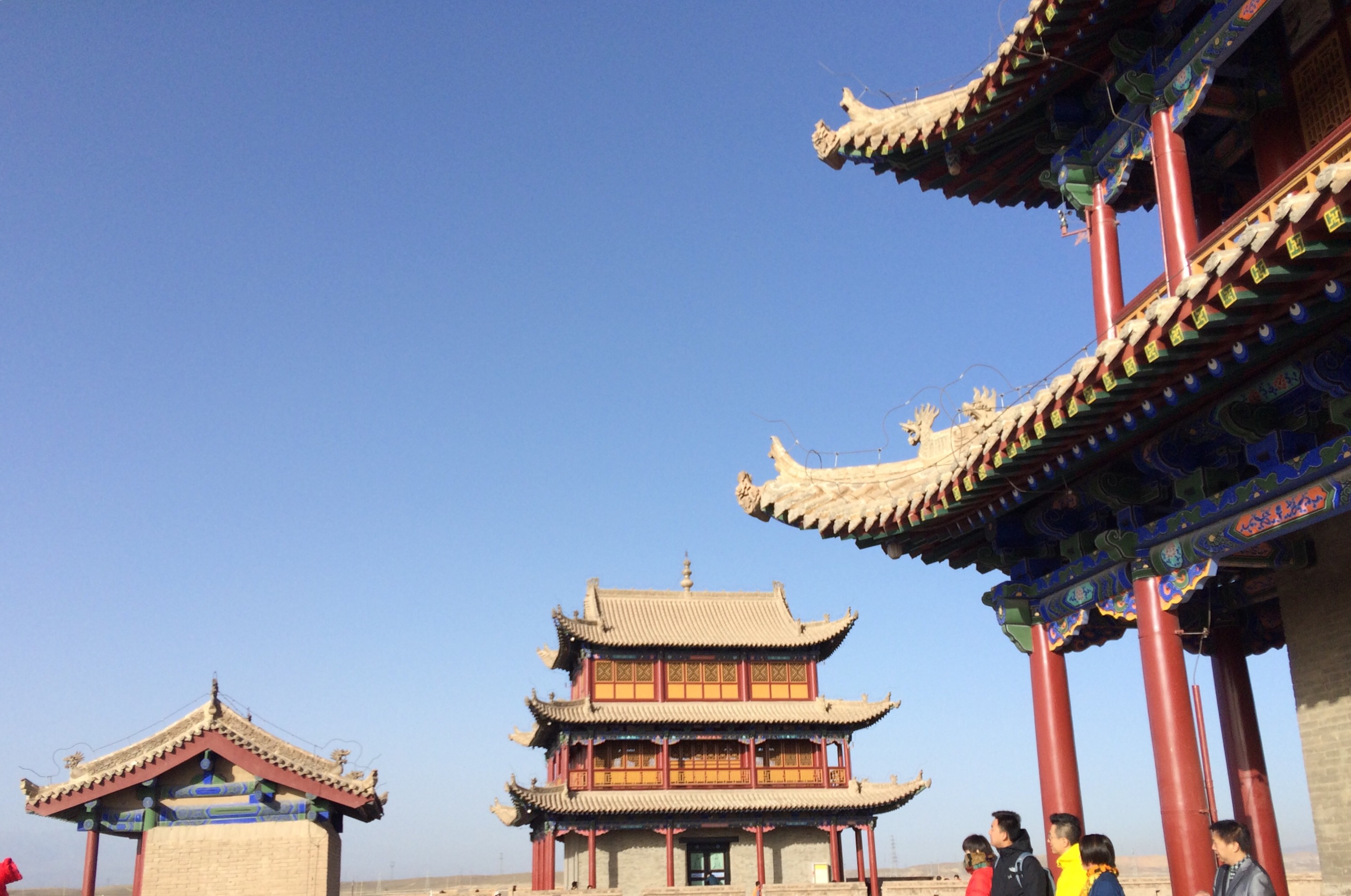 I’d like to point out that these walls were hip-level for me and juuust below my center of gravity.
I’d like to point out that these walls were hip-level for me and juuust below my center of gravity.
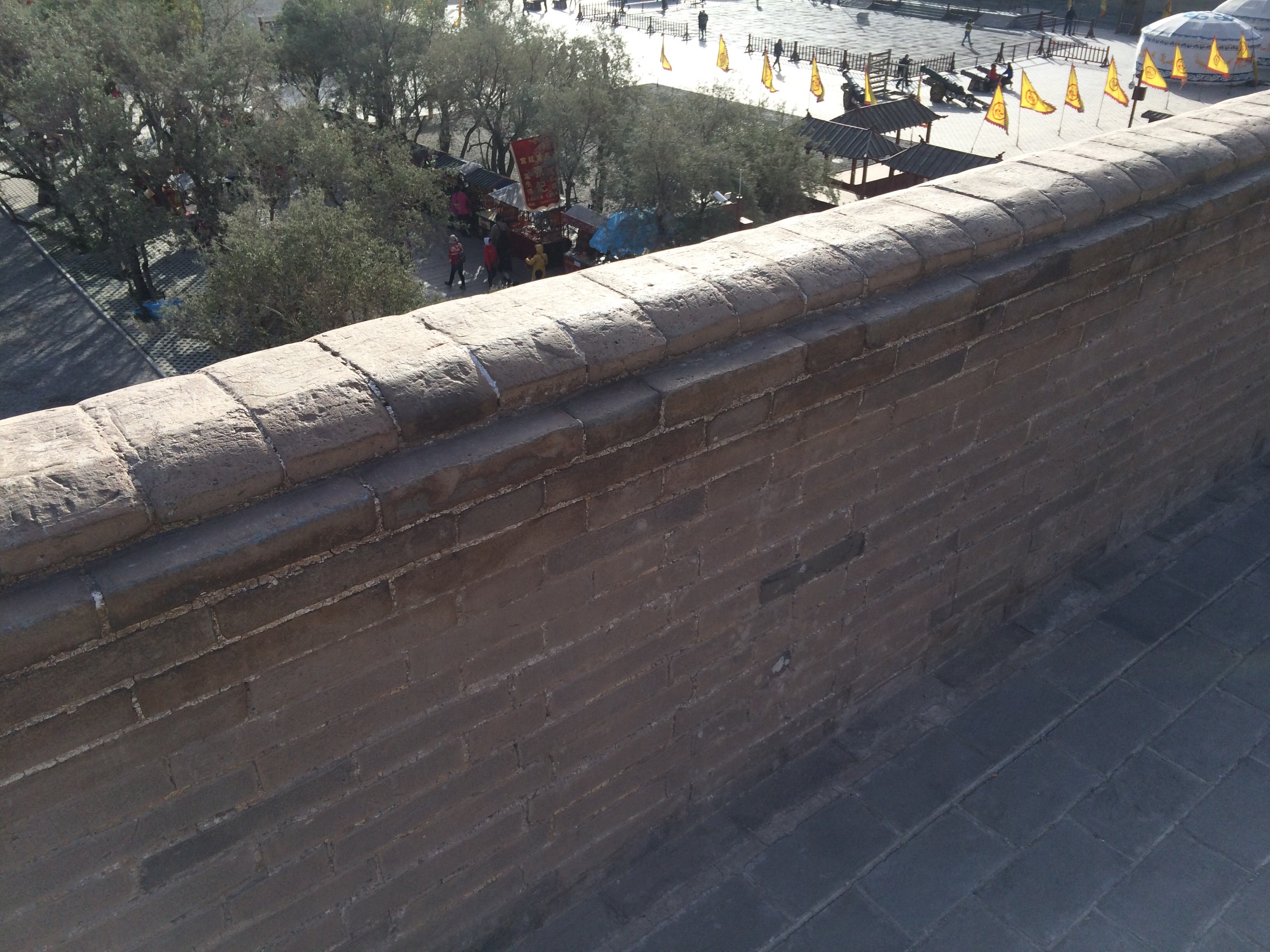 The gap between the inner and outer city seemed sufficient to discourage even the most heroic of jumps across.
The gap between the inner and outer city seemed sufficient to discourage even the most heroic of jumps across.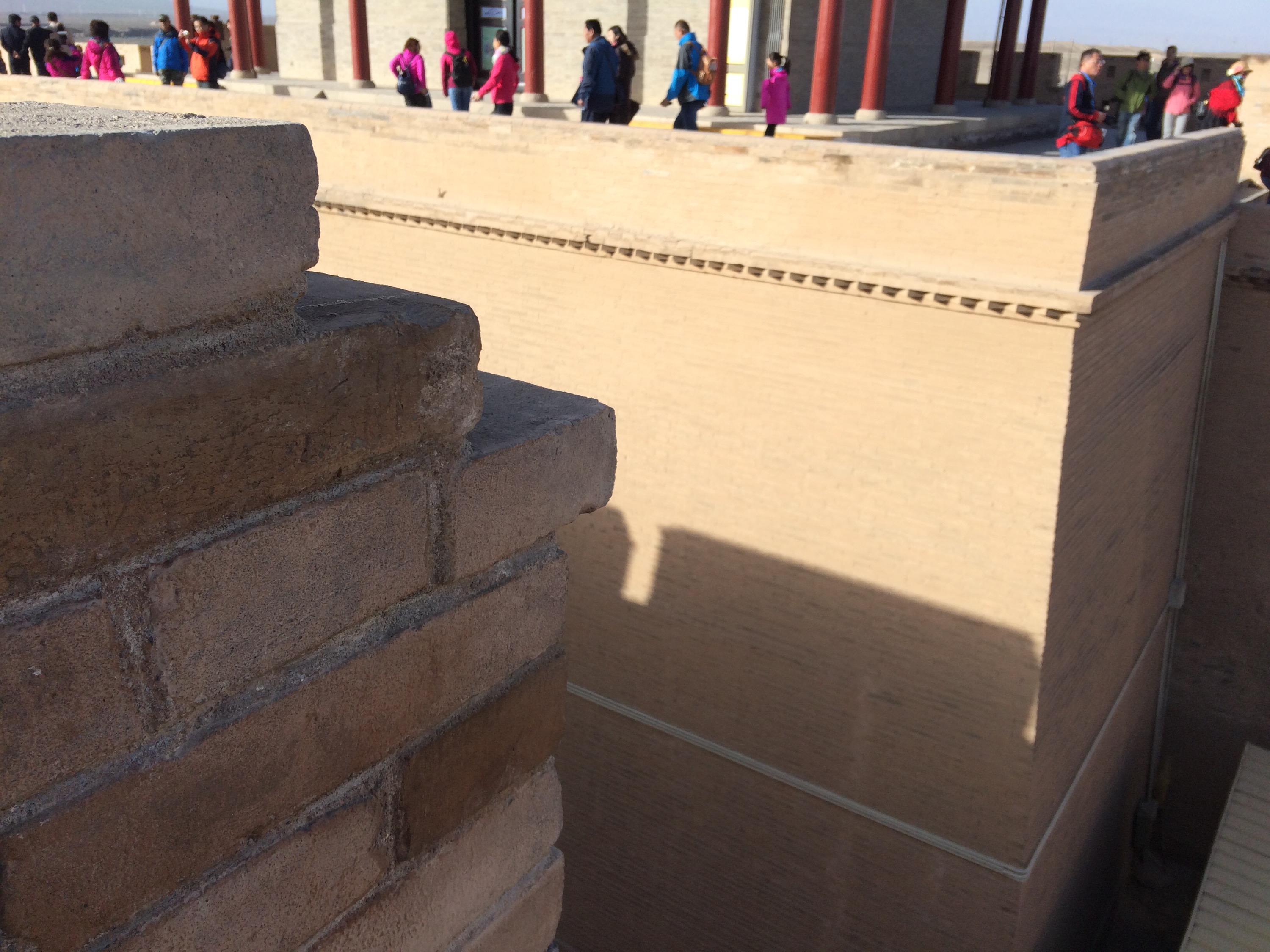 Snow-capped Qilian Mountains, hazy in the distance.
Snow-capped Qilian Mountains, hazy in the distance. 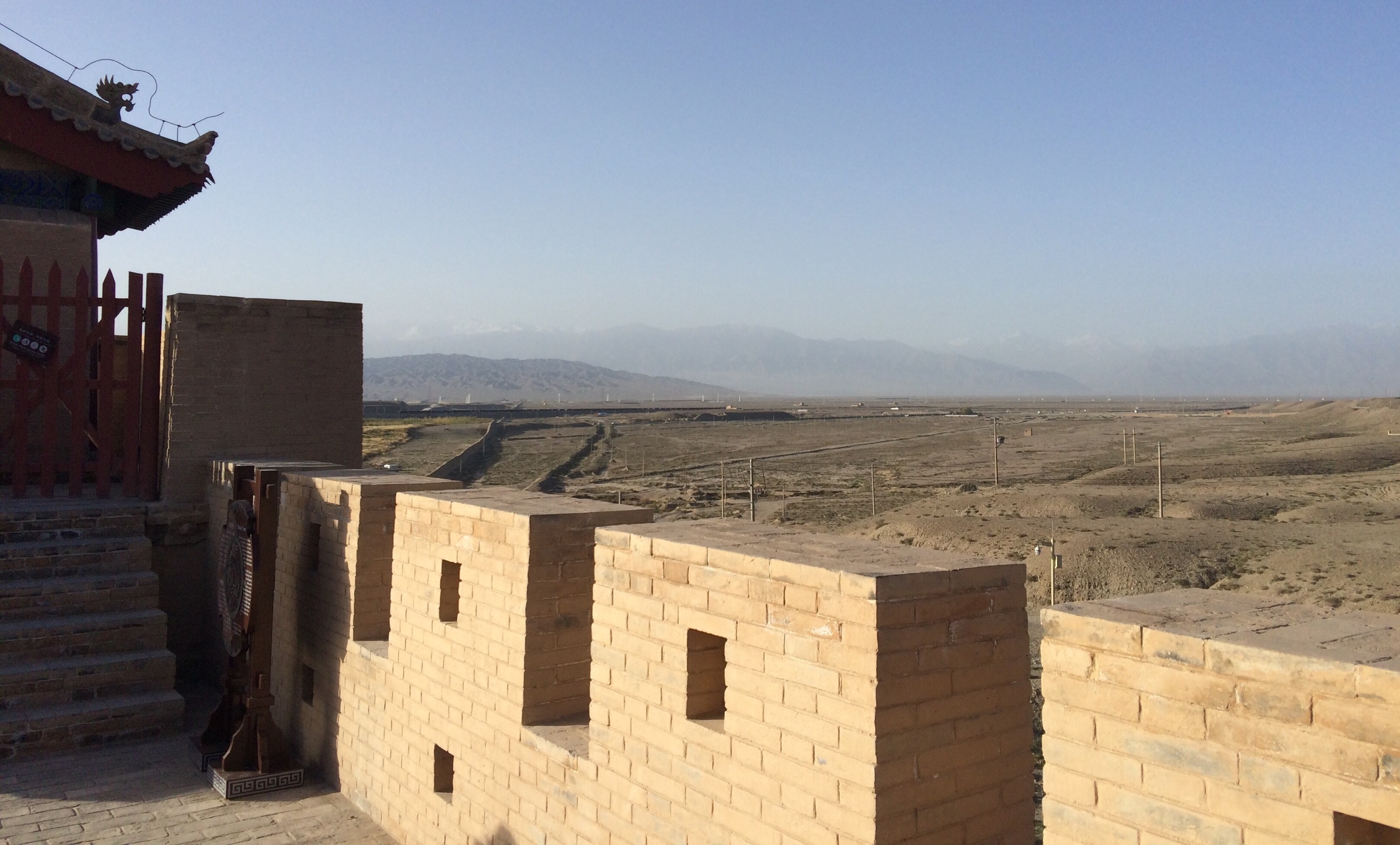
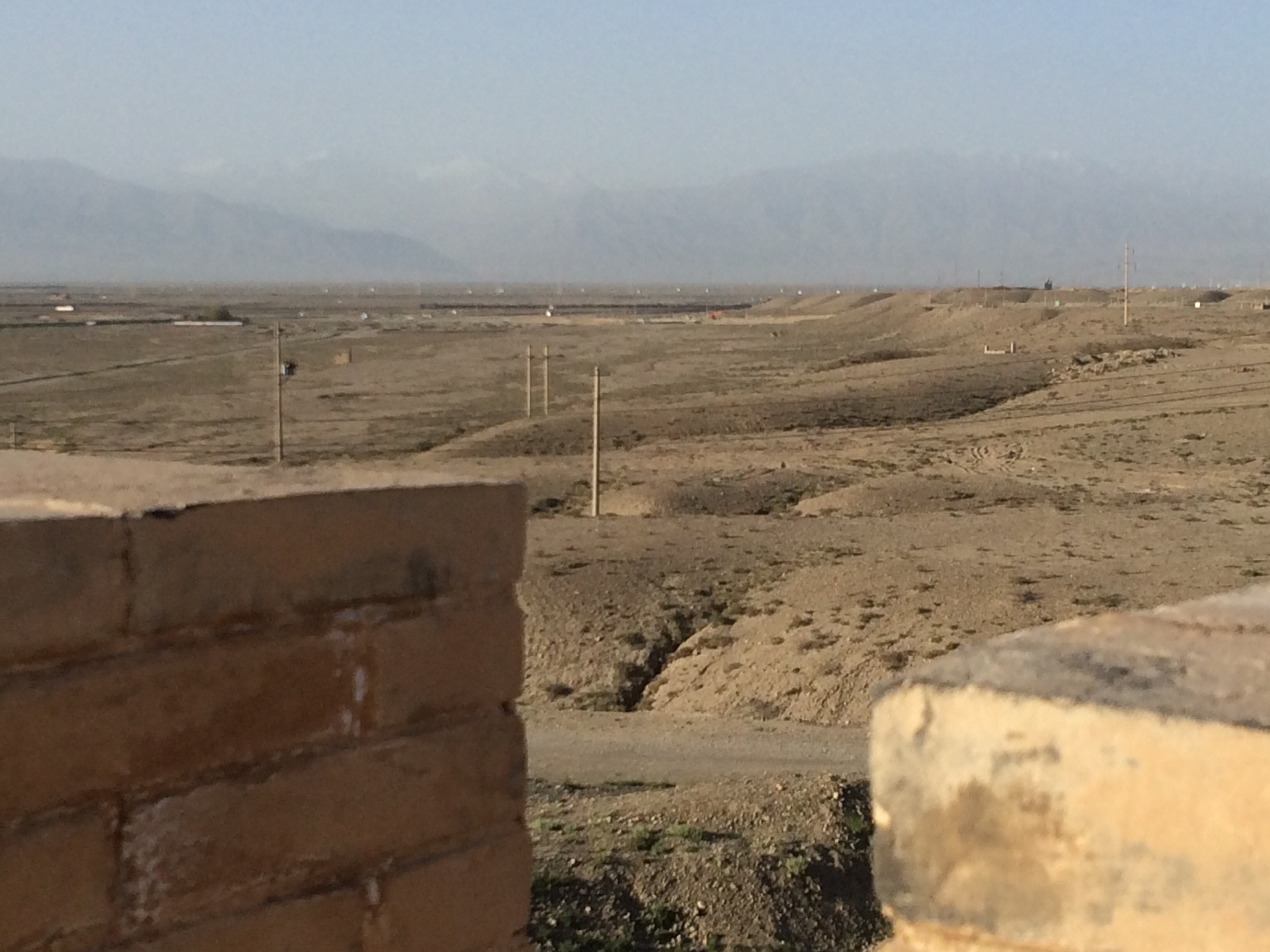
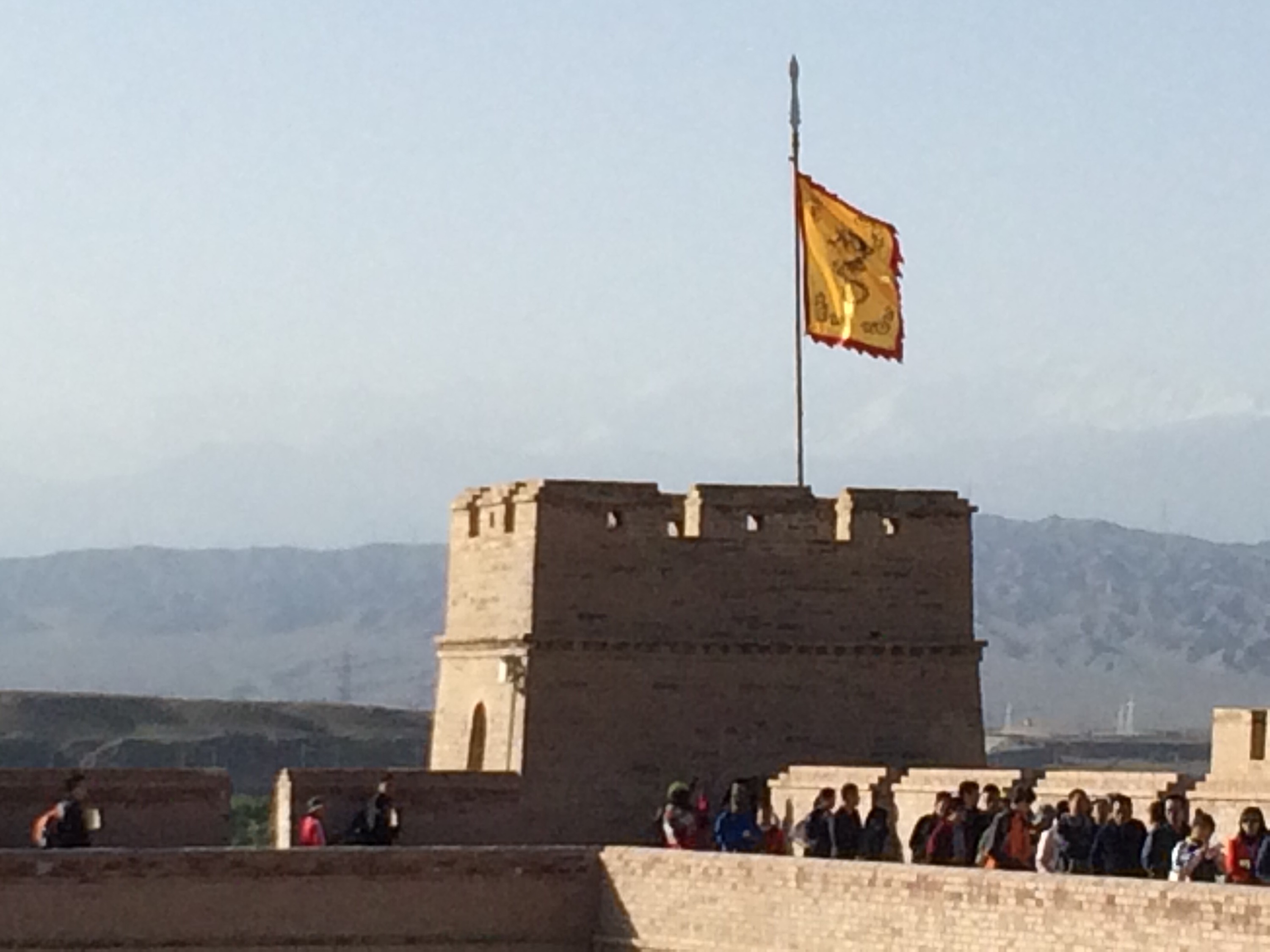 And the Hei Shan Mountains on the horizon behind the Jiayuguan Pass Tower.
And the Hei Shan Mountains on the horizon behind the Jiayuguan Pass Tower. 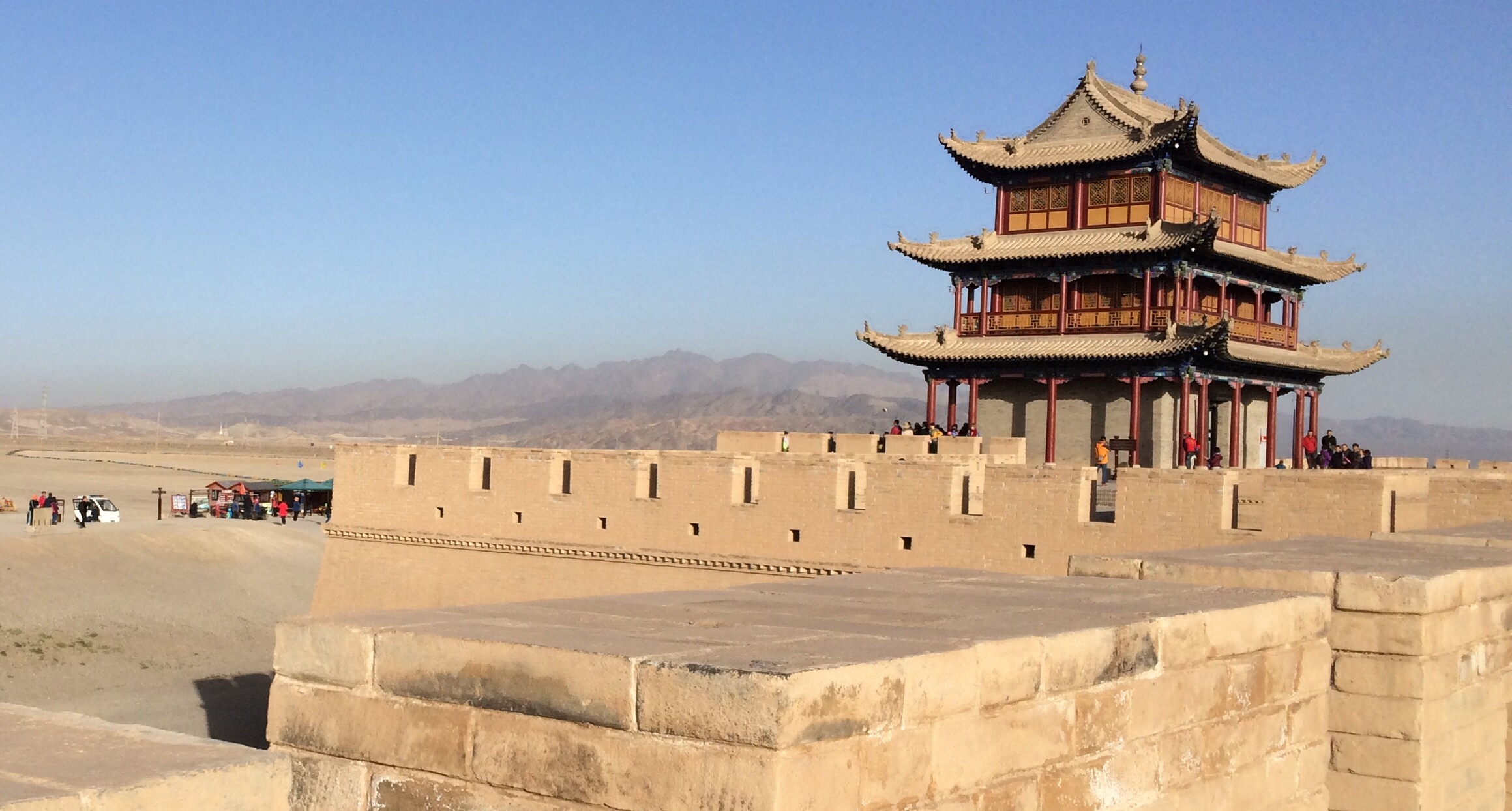 The dry moat surrounding the outer city.
The dry moat surrounding the outer city.
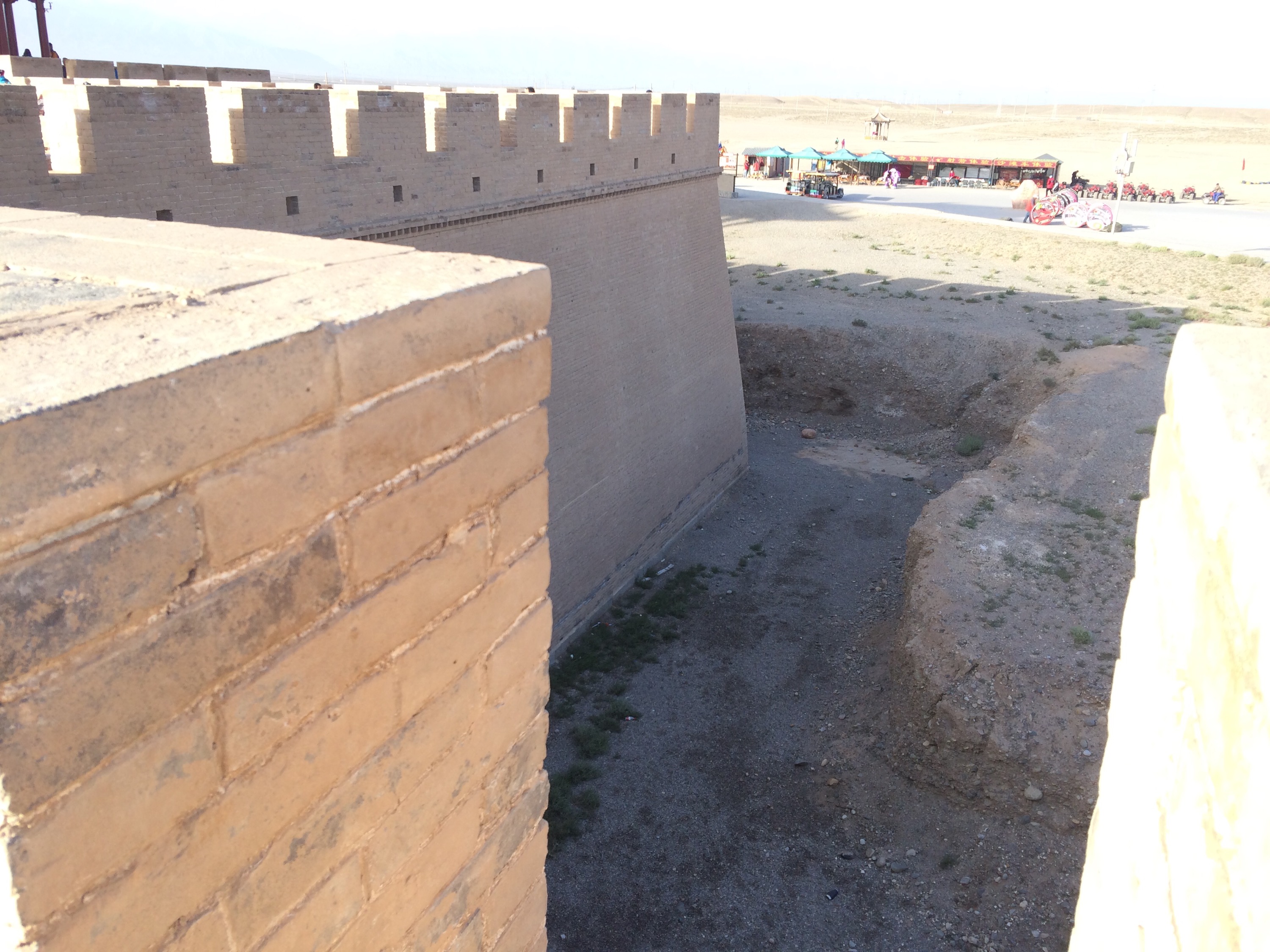
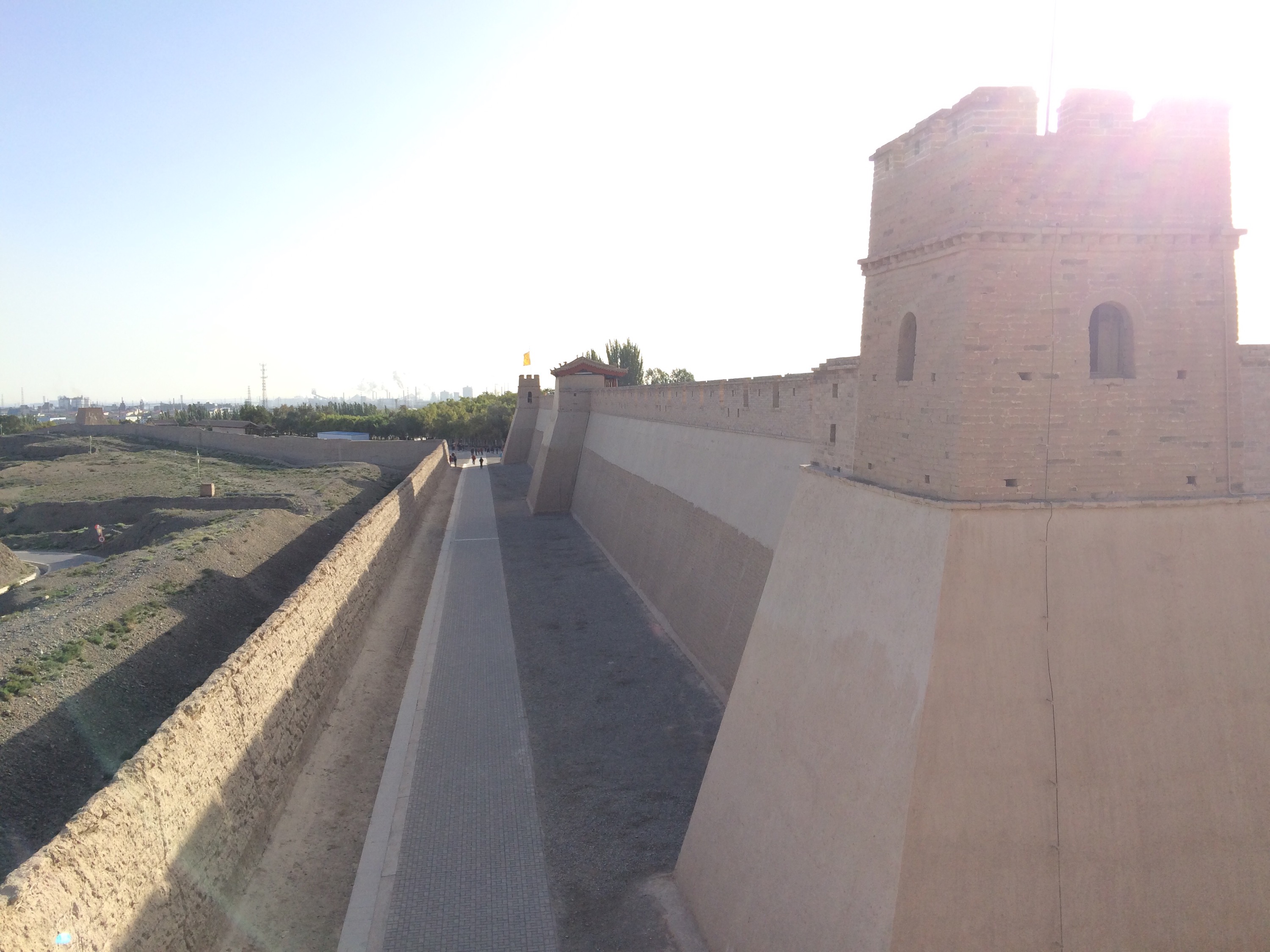
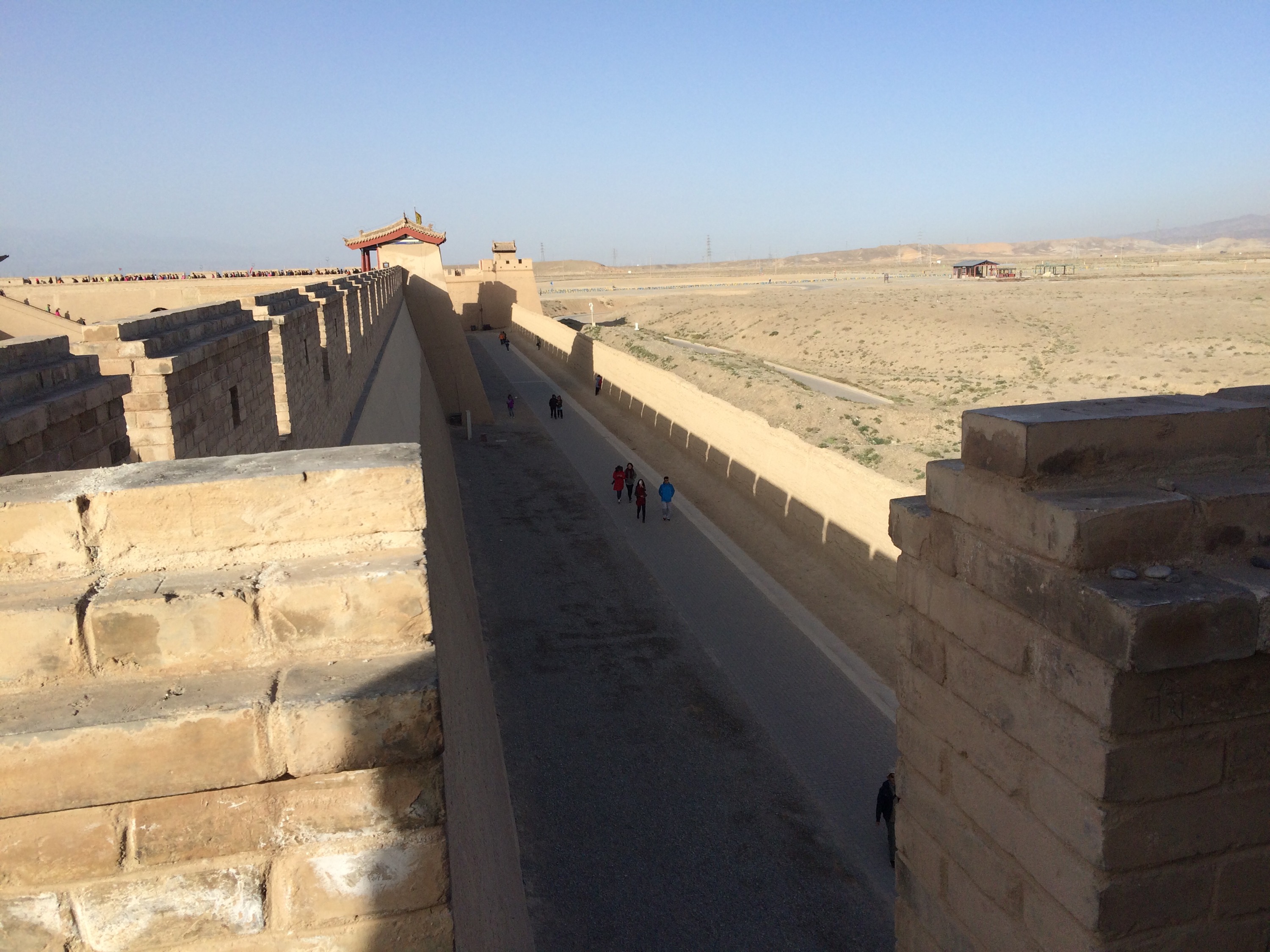
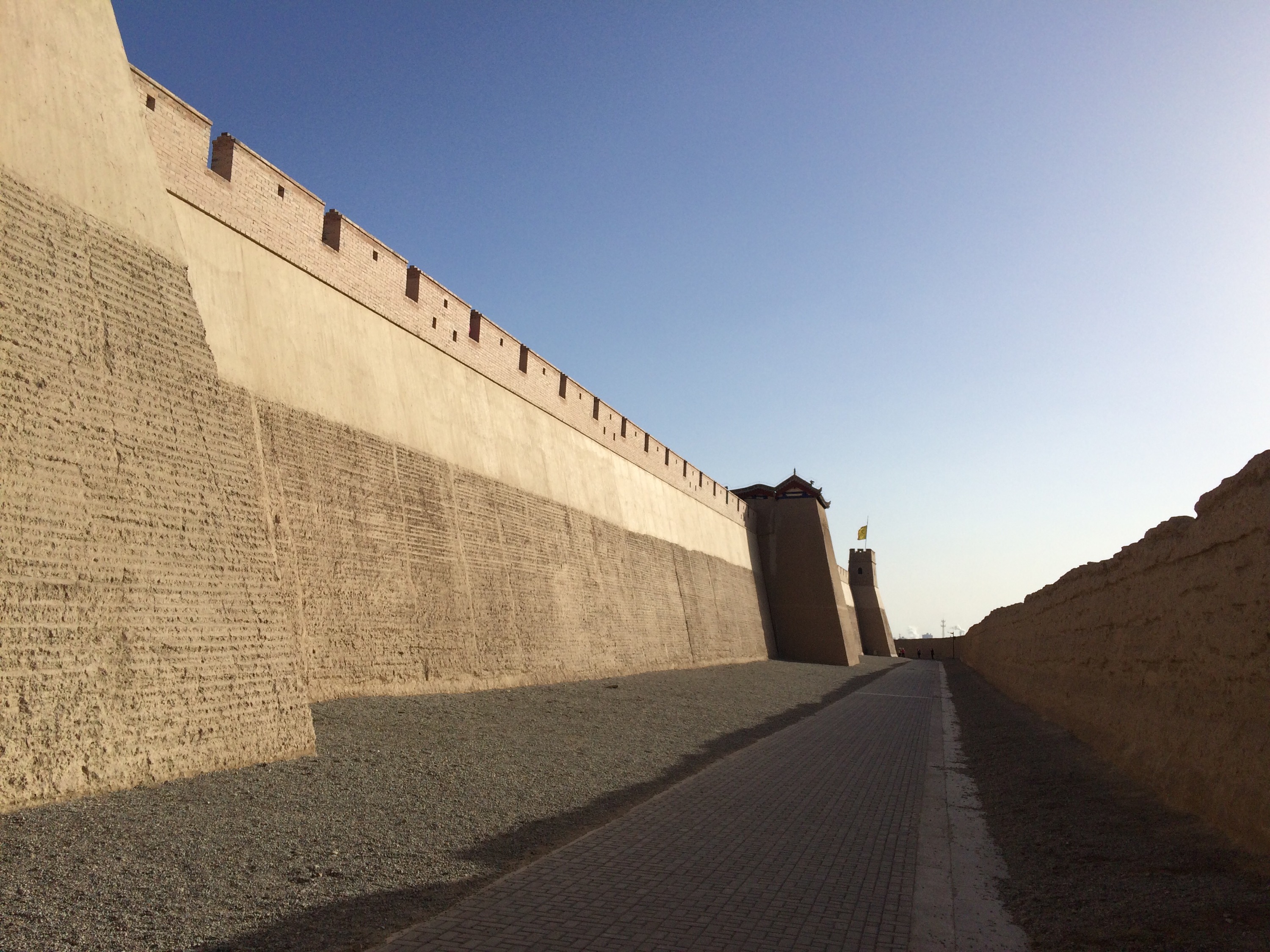 This is the Beijian Tower where sentries would watch for beacon fires along the Great Wall.
This is the Beijian Tower where sentries would watch for beacon fires along the Great Wall.
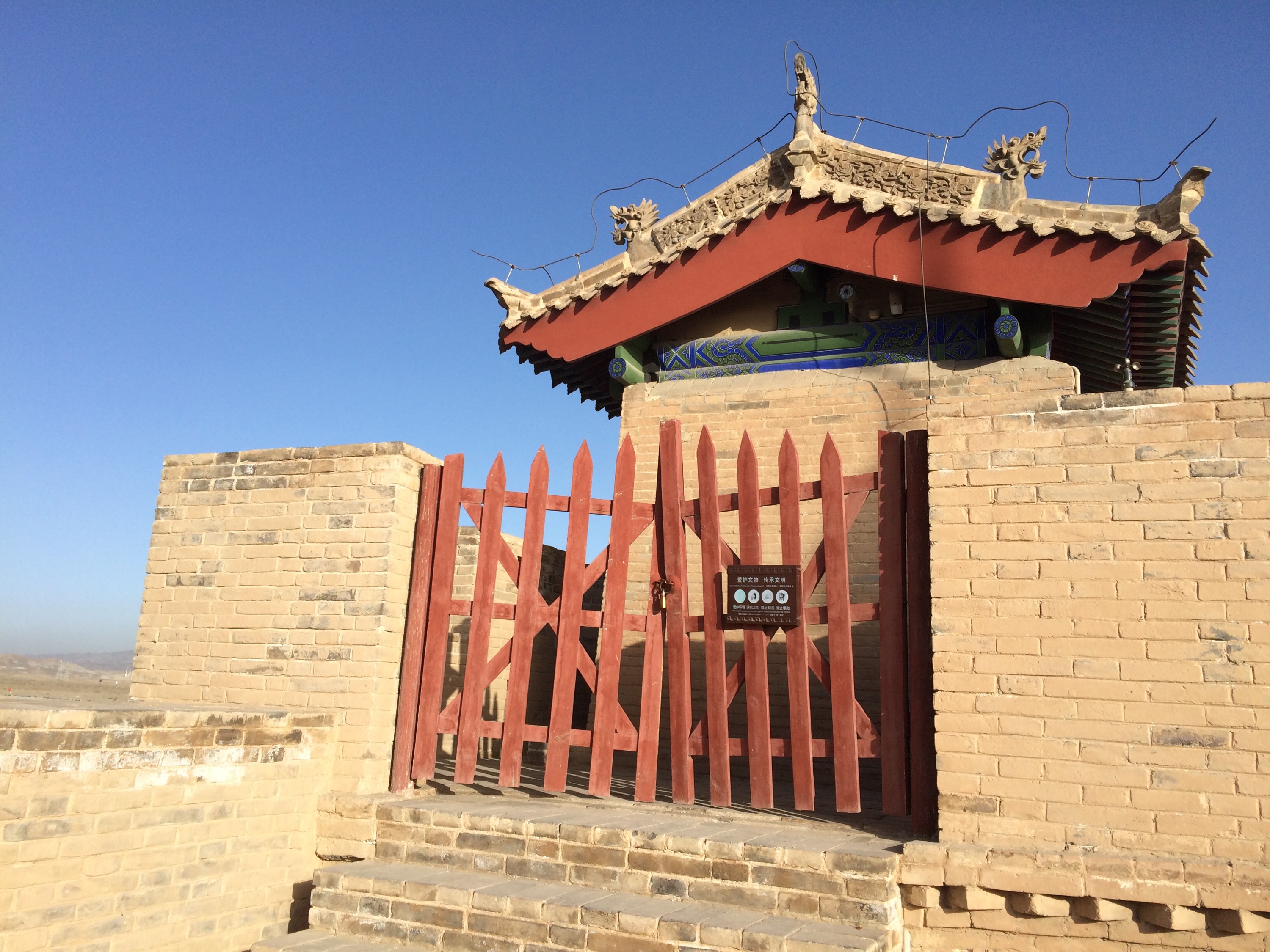 A banner, flying in the wind.
A banner, flying in the wind. 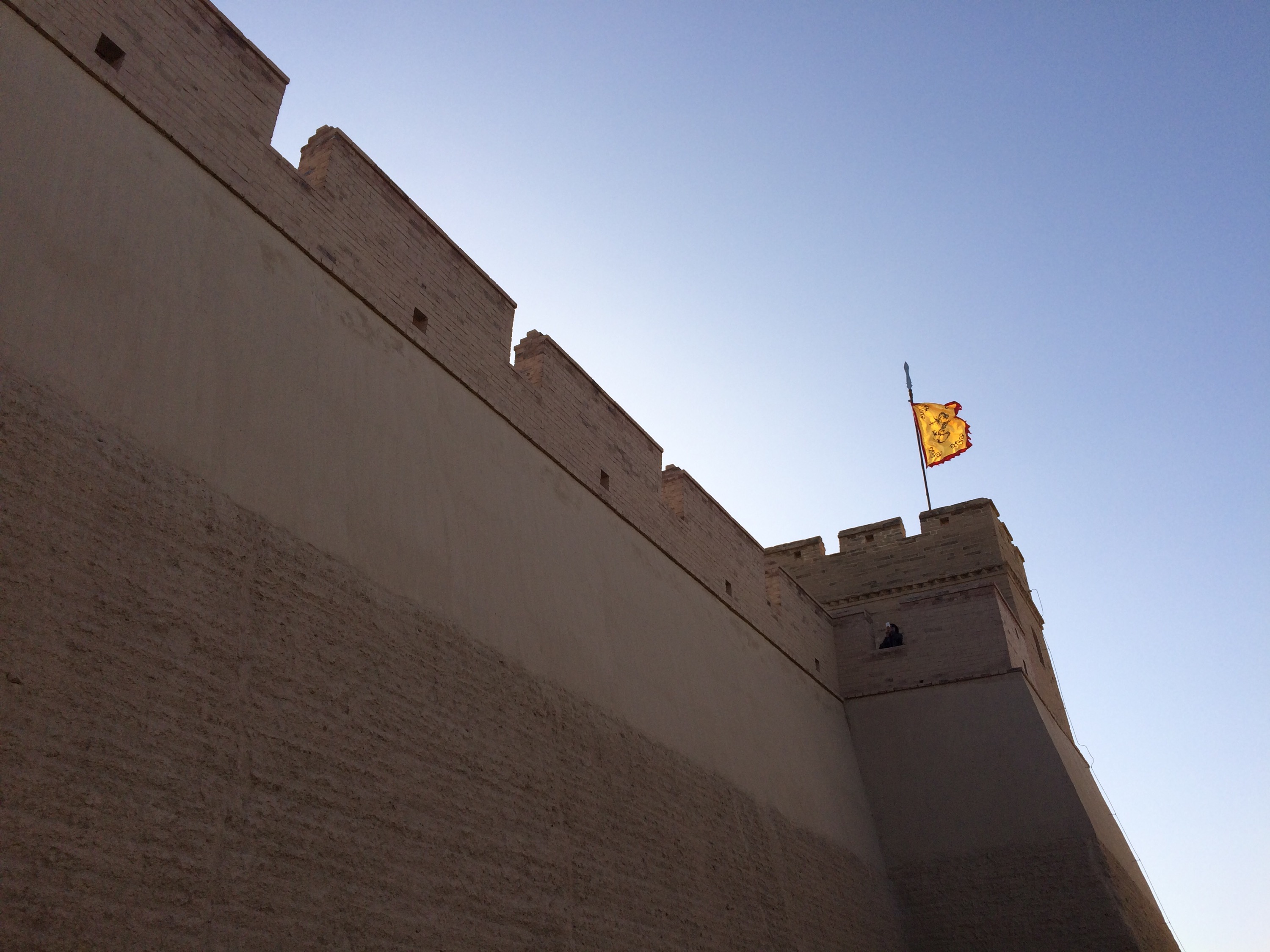 The gate under the Jiayu Pass Tower and out into the wilderness beyond.
The gate under the Jiayu Pass Tower and out into the wilderness beyond.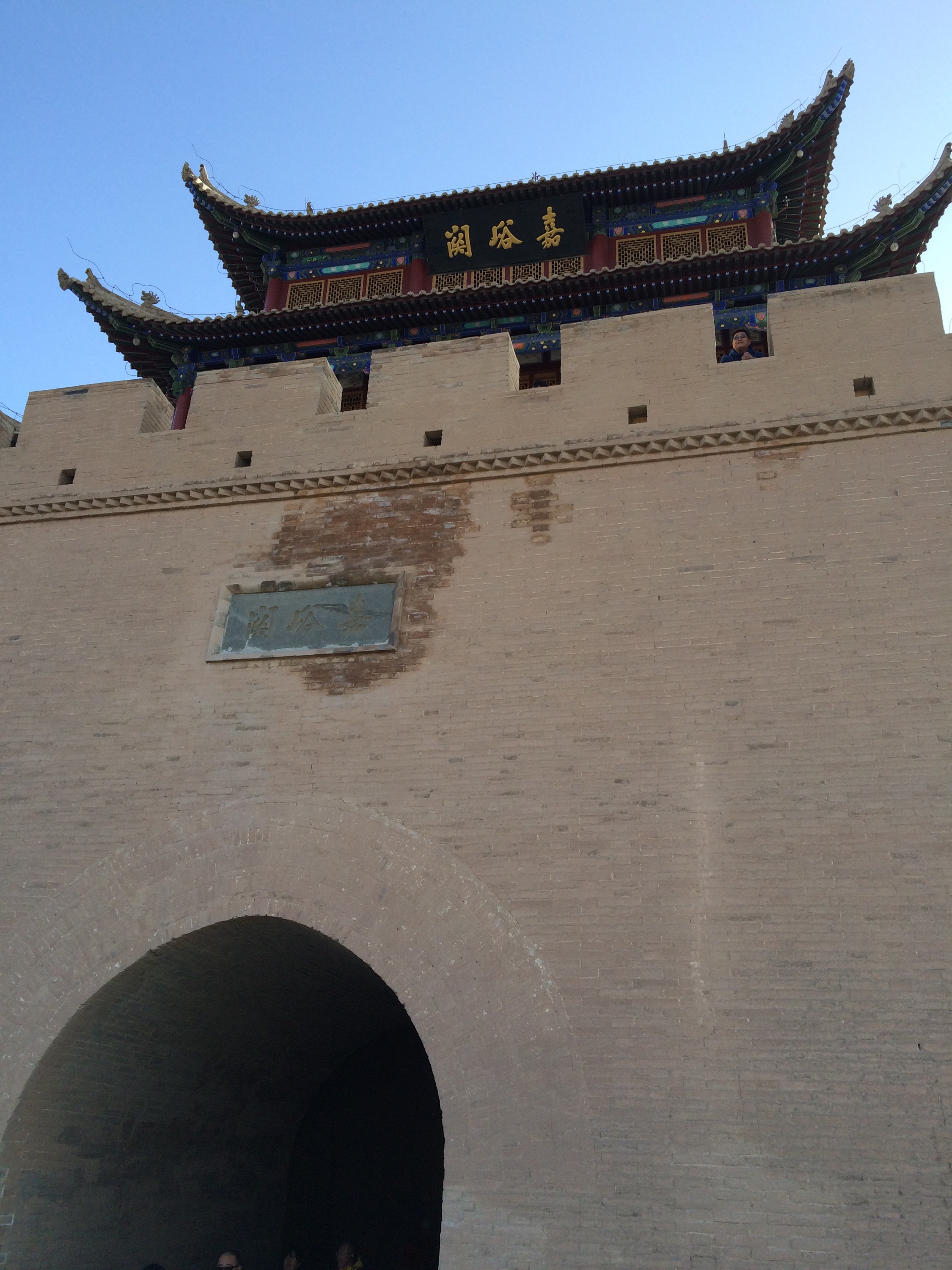 There was mock procession of soldiers, officials, and concubines marching out of the fort under a Ming banner. (Yes, the soldiers are armed with gē!)
There was mock procession of soldiers, officials, and concubines marching out of the fort under a Ming banner. (Yes, the soldiers are armed with gē!)
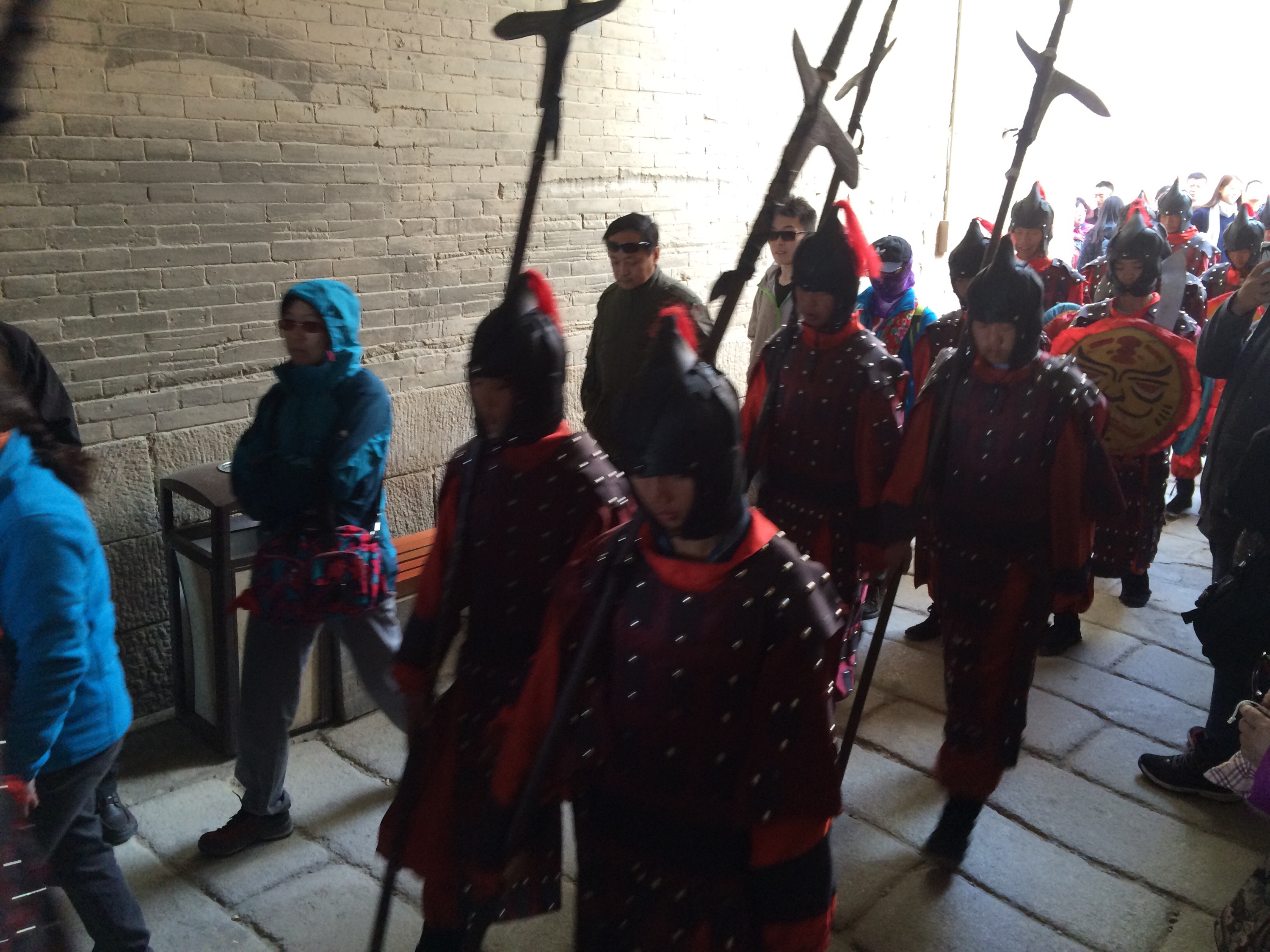
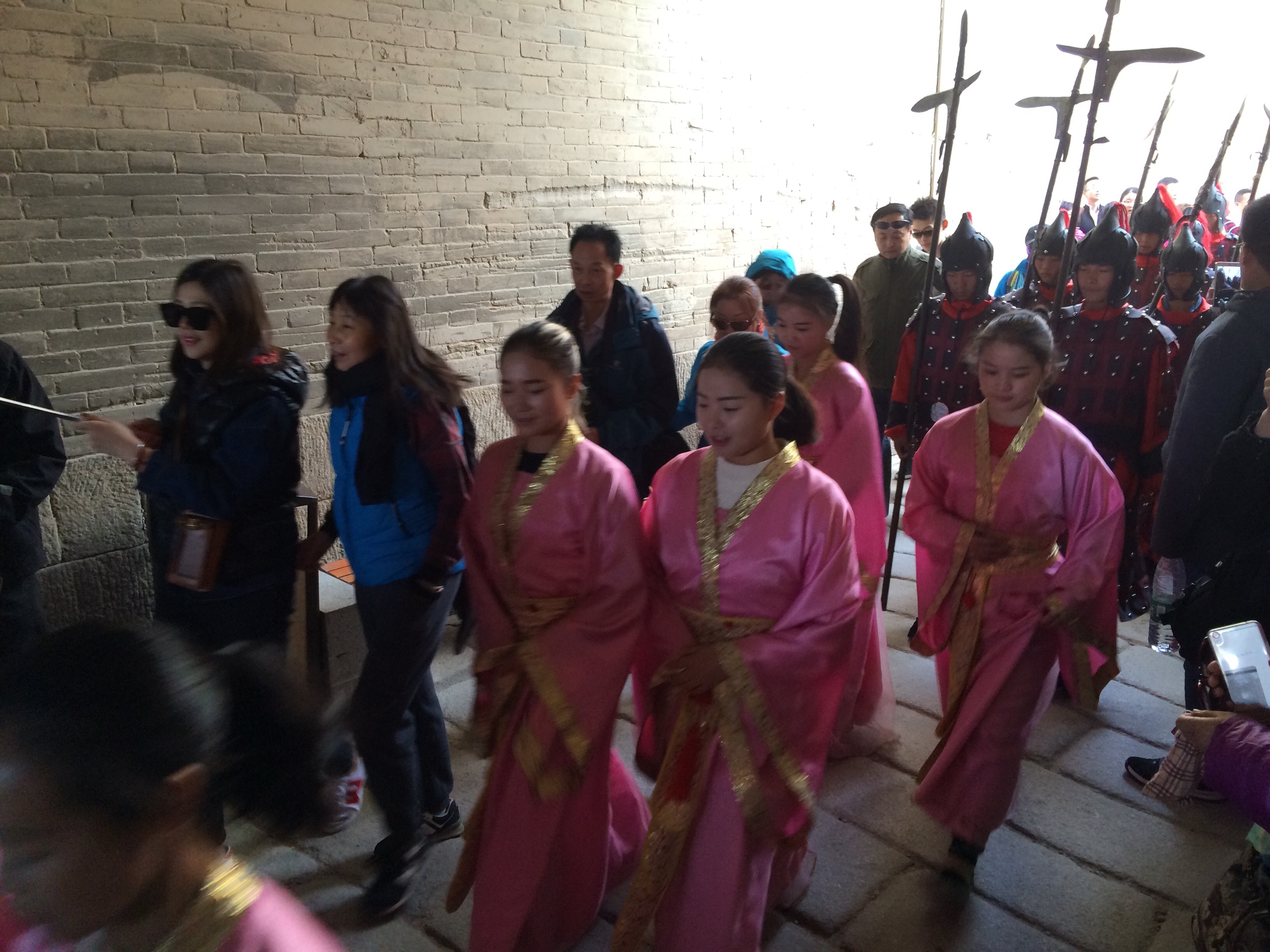 Outside the fort, looking back at it with the low autumn sun rising behind it.
Outside the fort, looking back at it with the low autumn sun rising behind it.
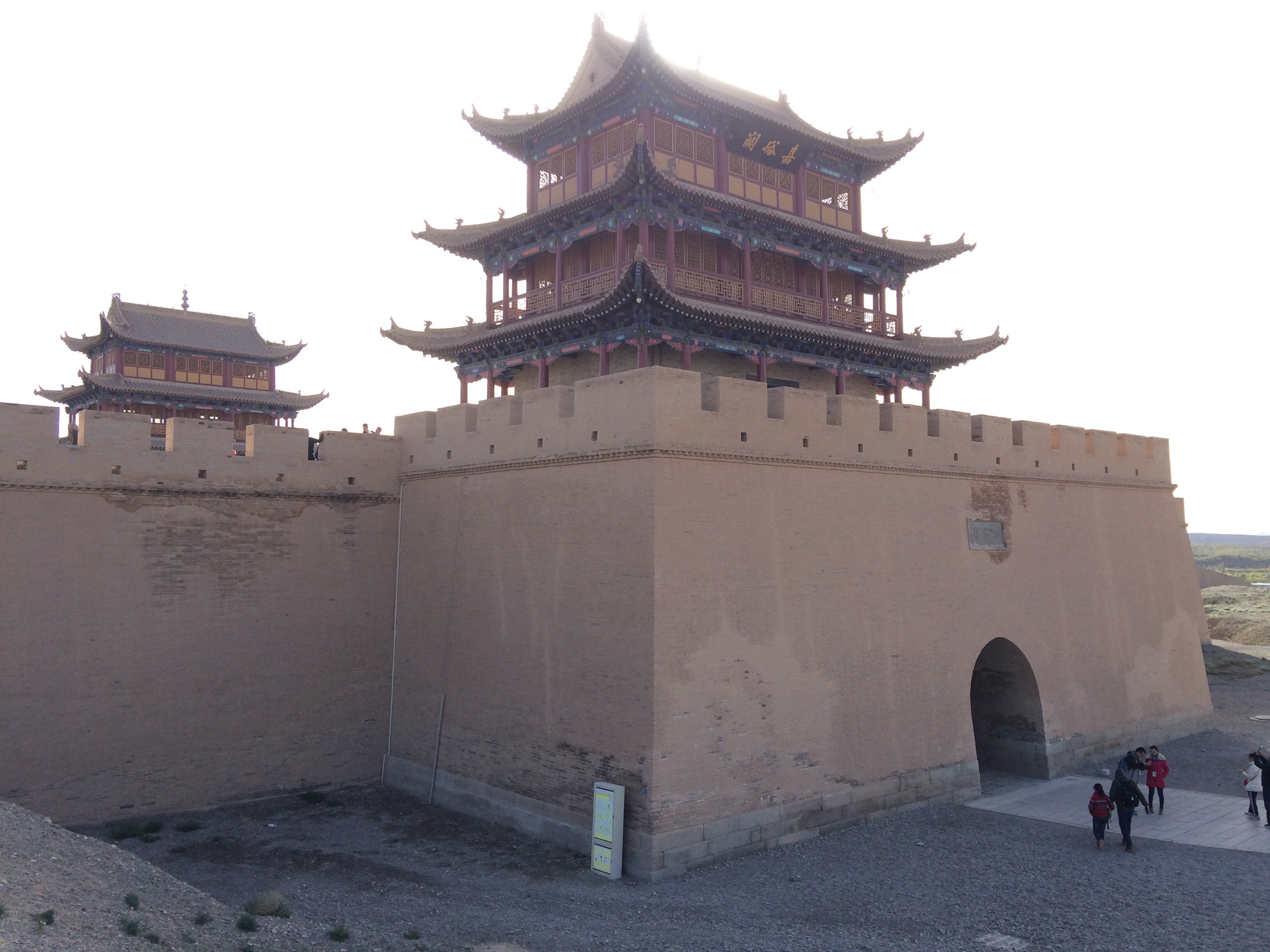 Looking out into the west and the wilderness. In Imperial times, this is where exiles were sent off, off the edge of the civilized world.
Looking out into the west and the wilderness. In Imperial times, this is where exiles were sent off, off the edge of the civilized world.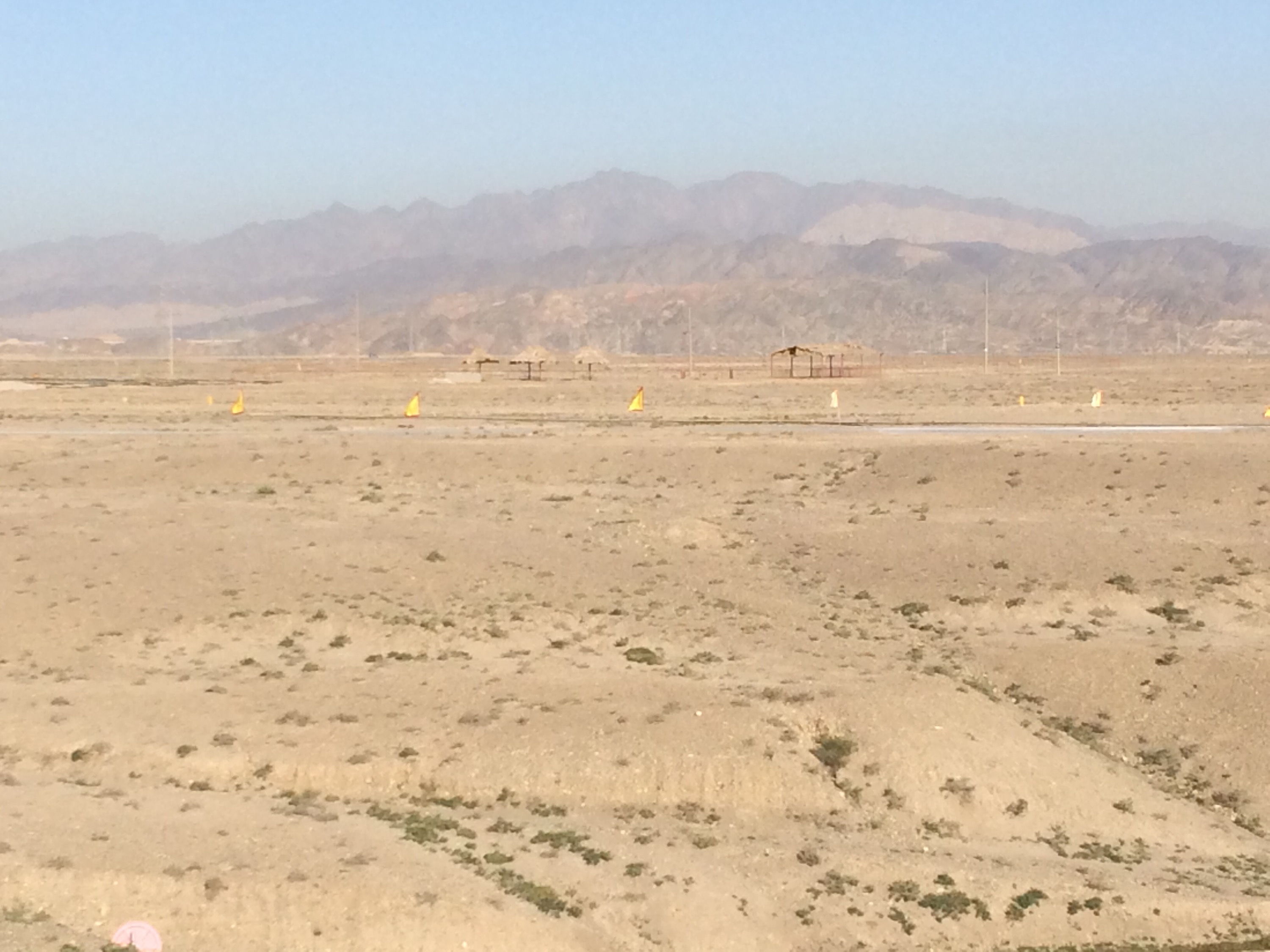
 There was no direct flight from Jiayuguan to Shanghai that arrived at a reasonable hour, so I decide to stay over in Xi’an. (Yes. My fifth visit to Xi’an, my third in a week.)
There was no direct flight from Jiayuguan to Shanghai that arrived at a reasonable hour, so I decide to stay over in Xi’an. (Yes. My fifth visit to Xi’an, my third in a week.)

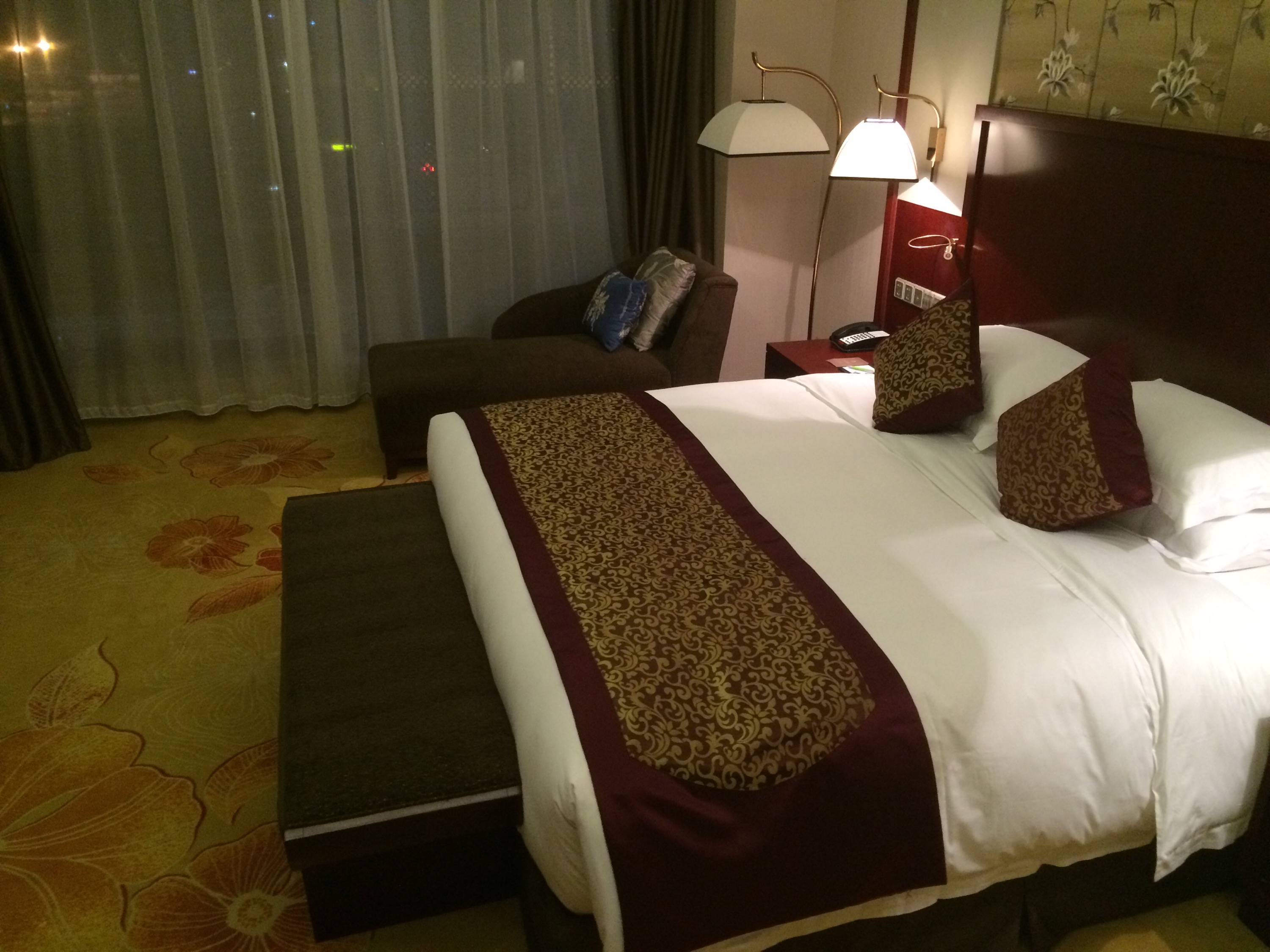

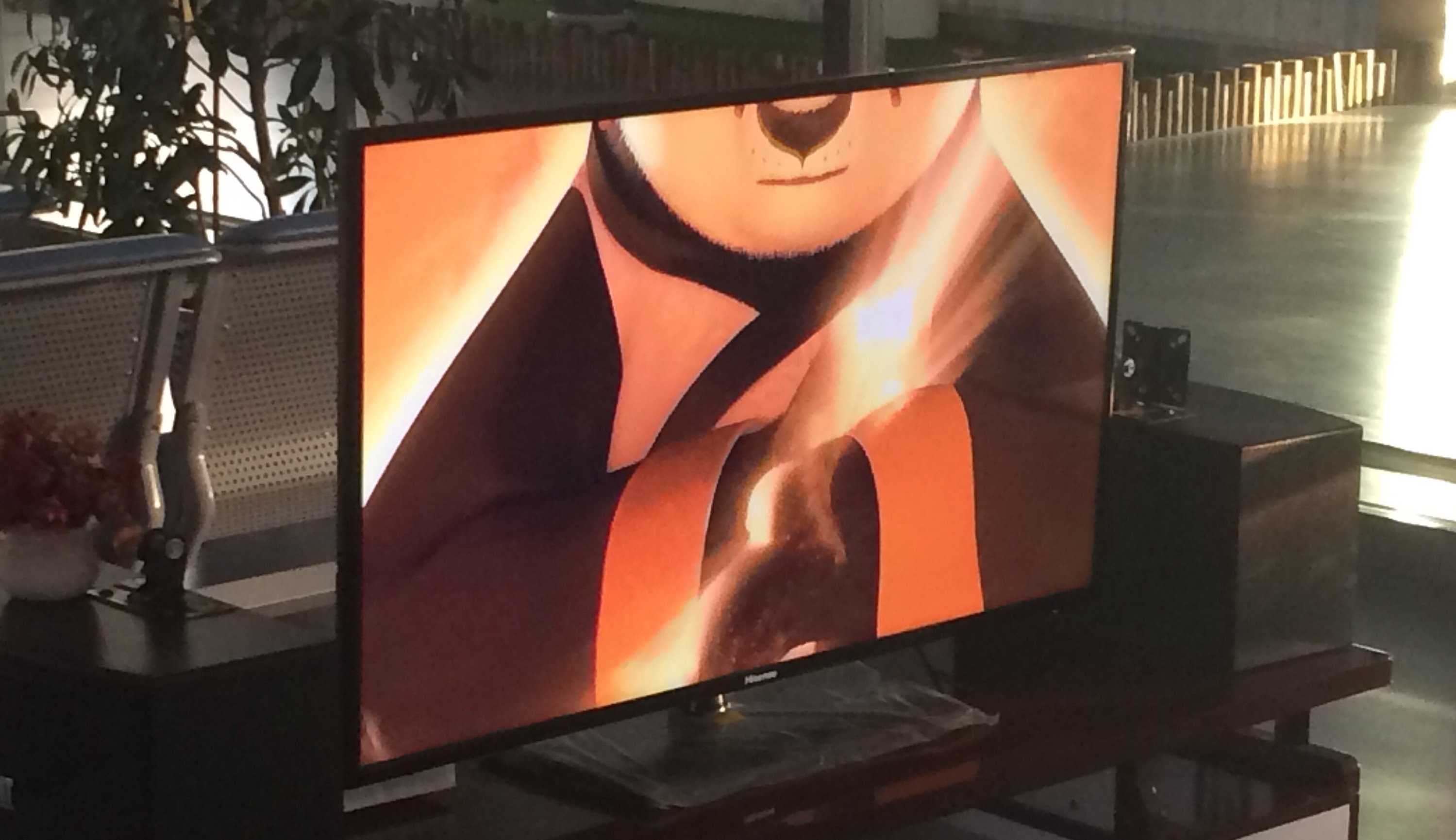
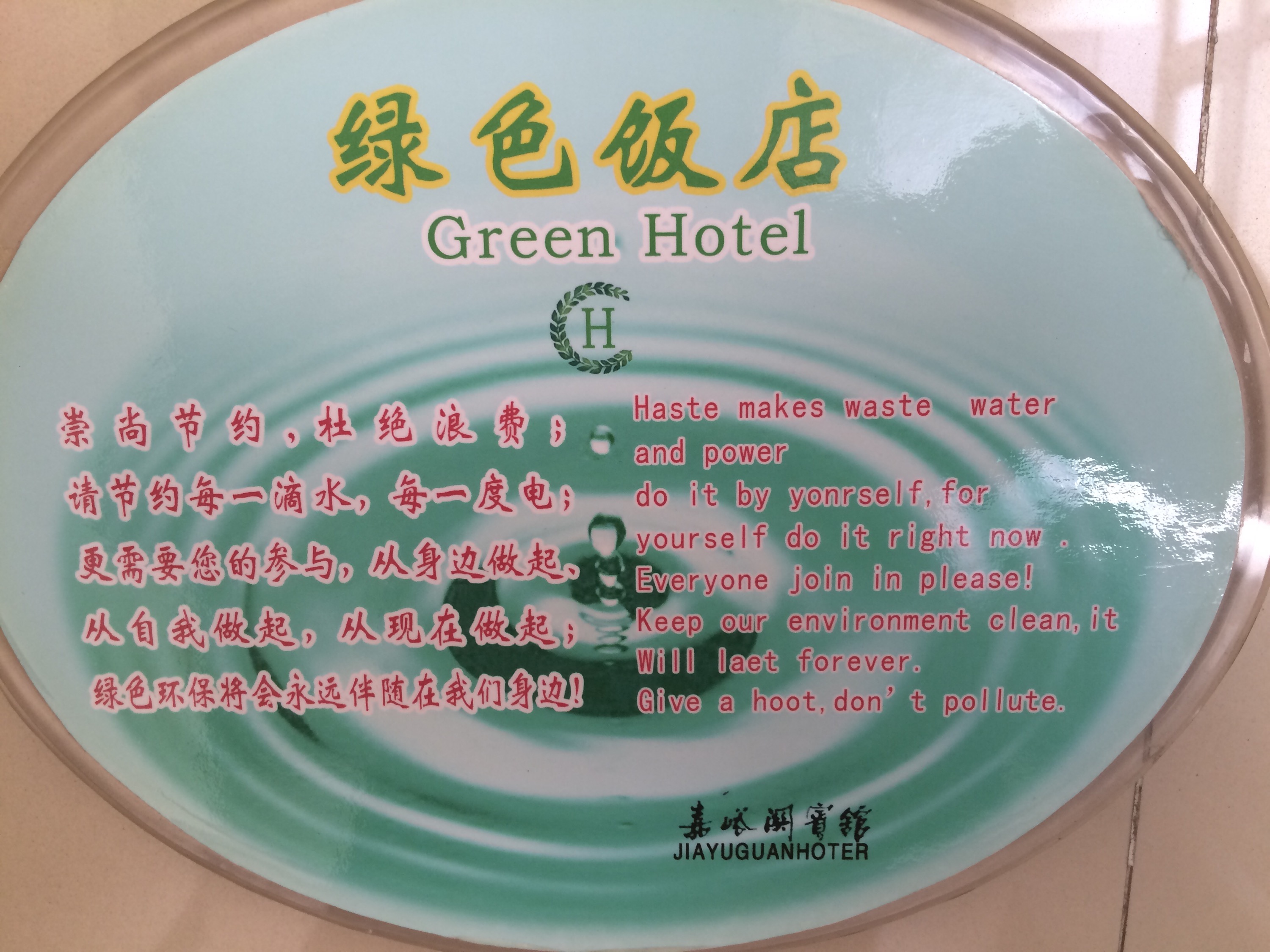

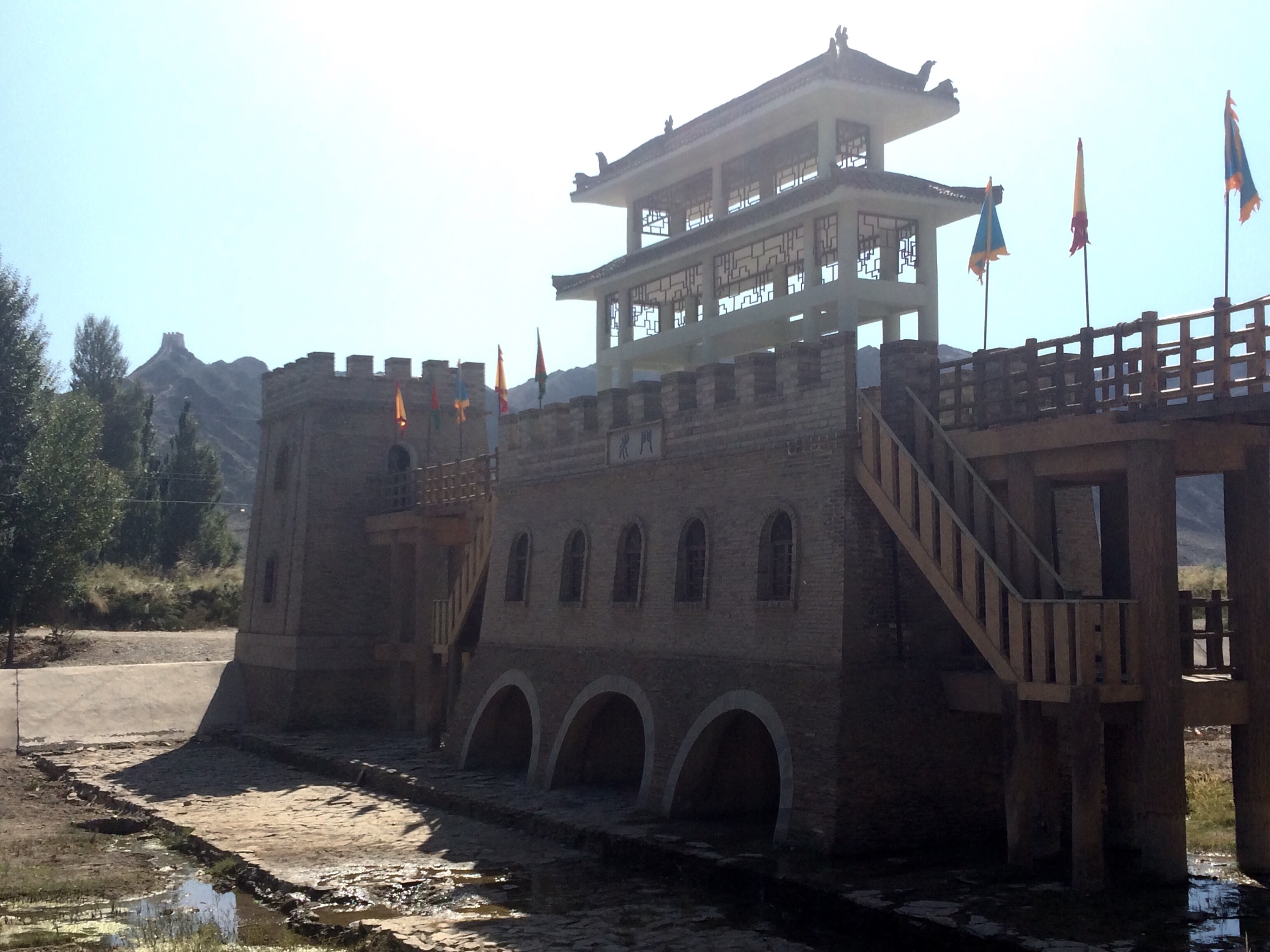

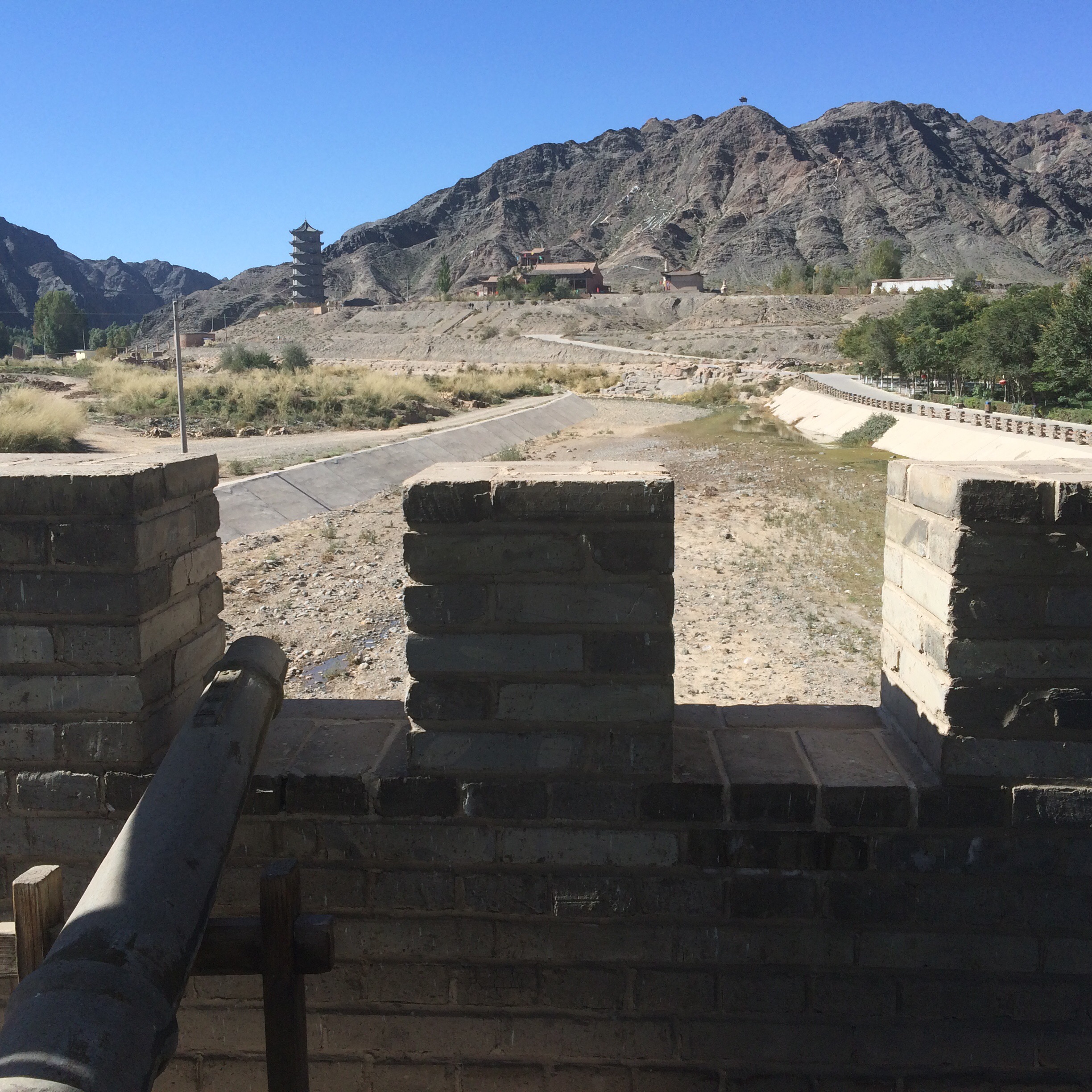

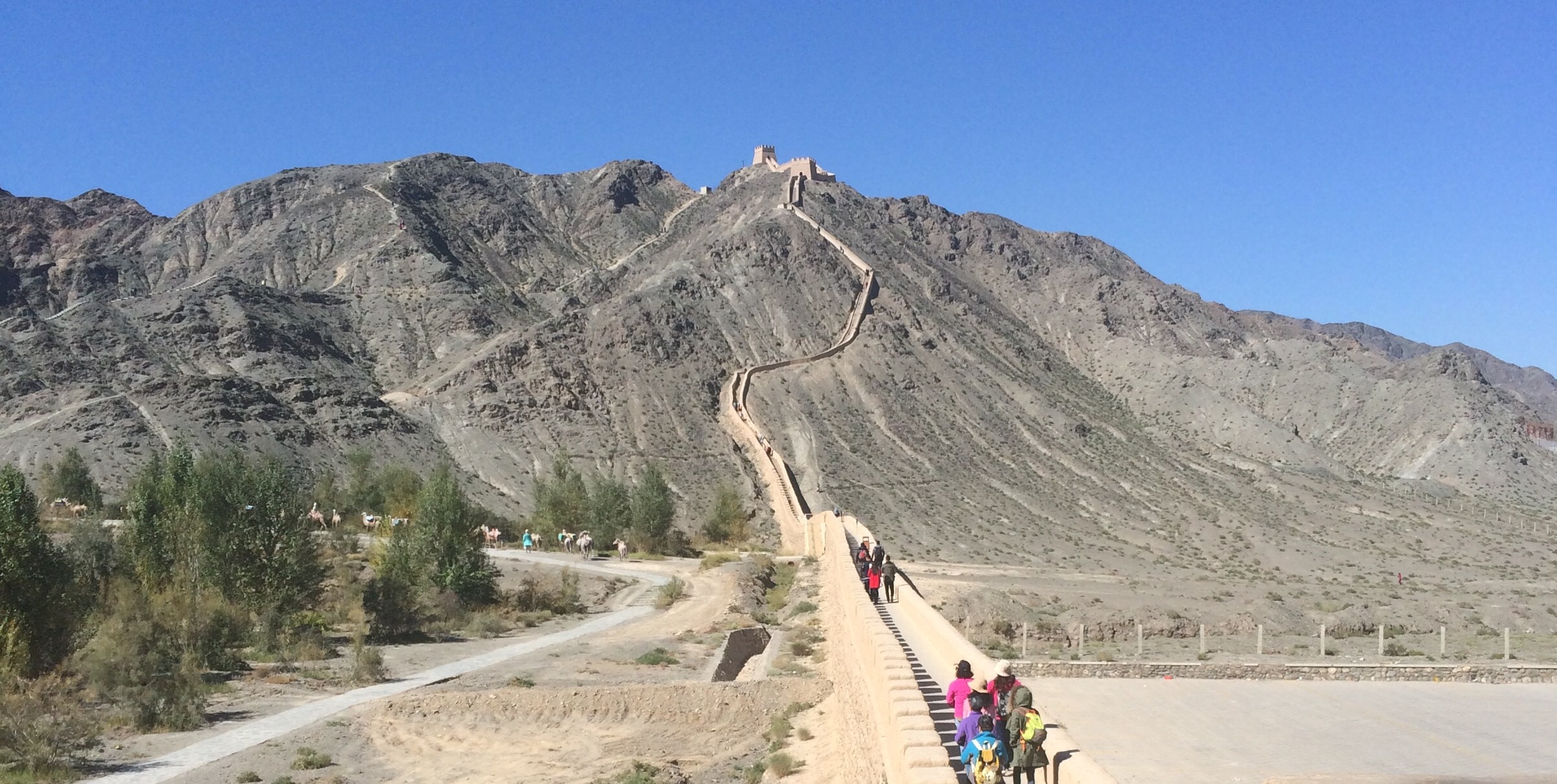
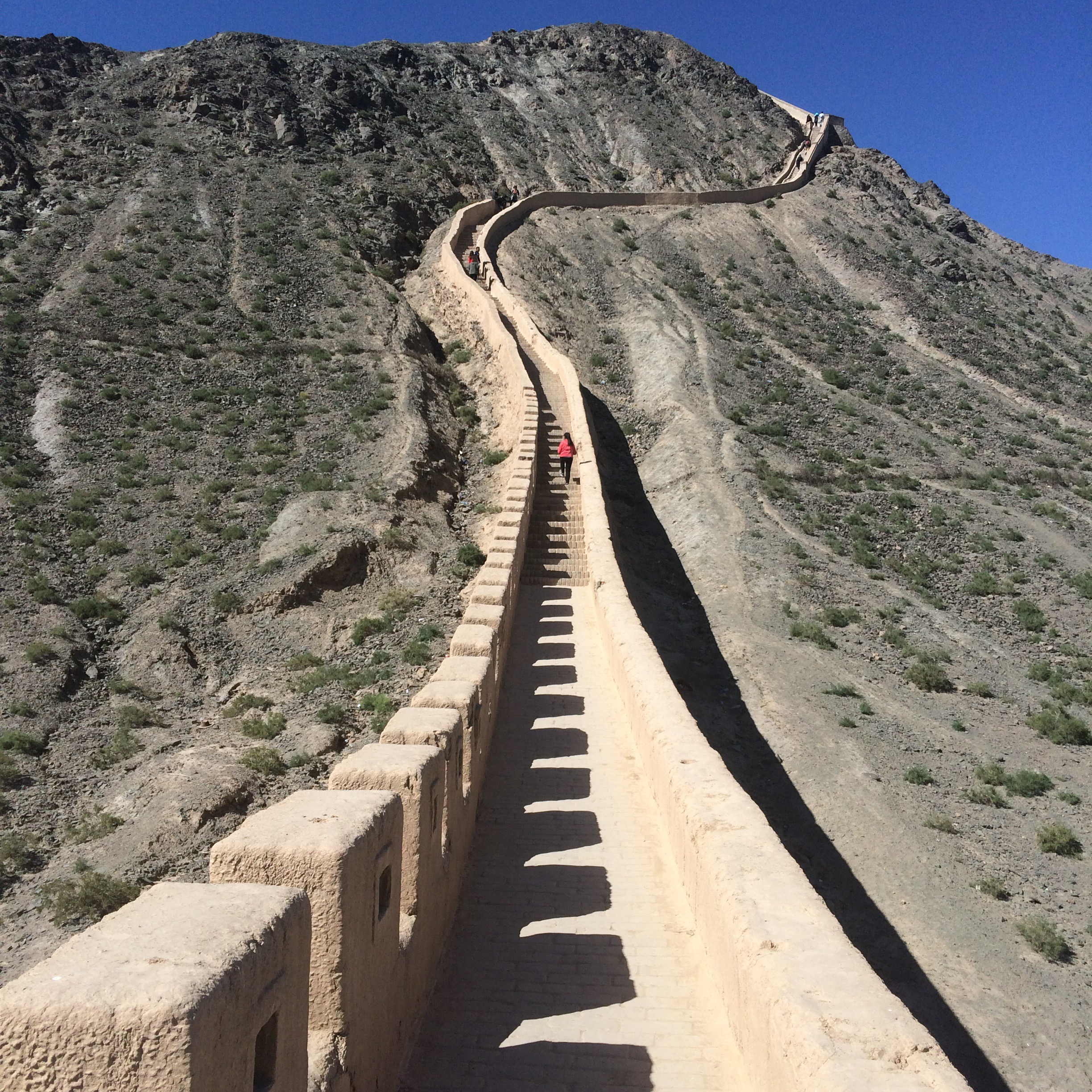
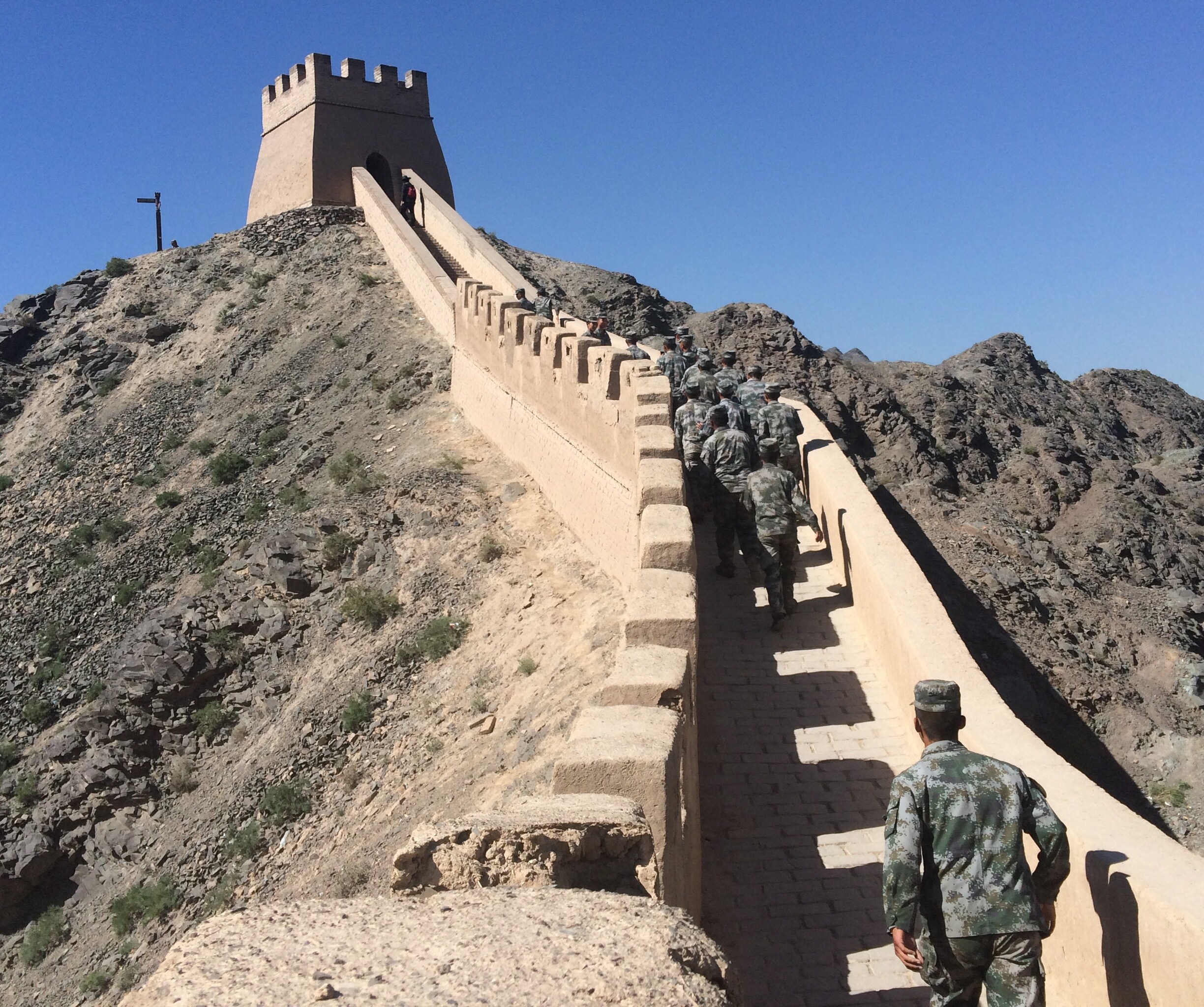

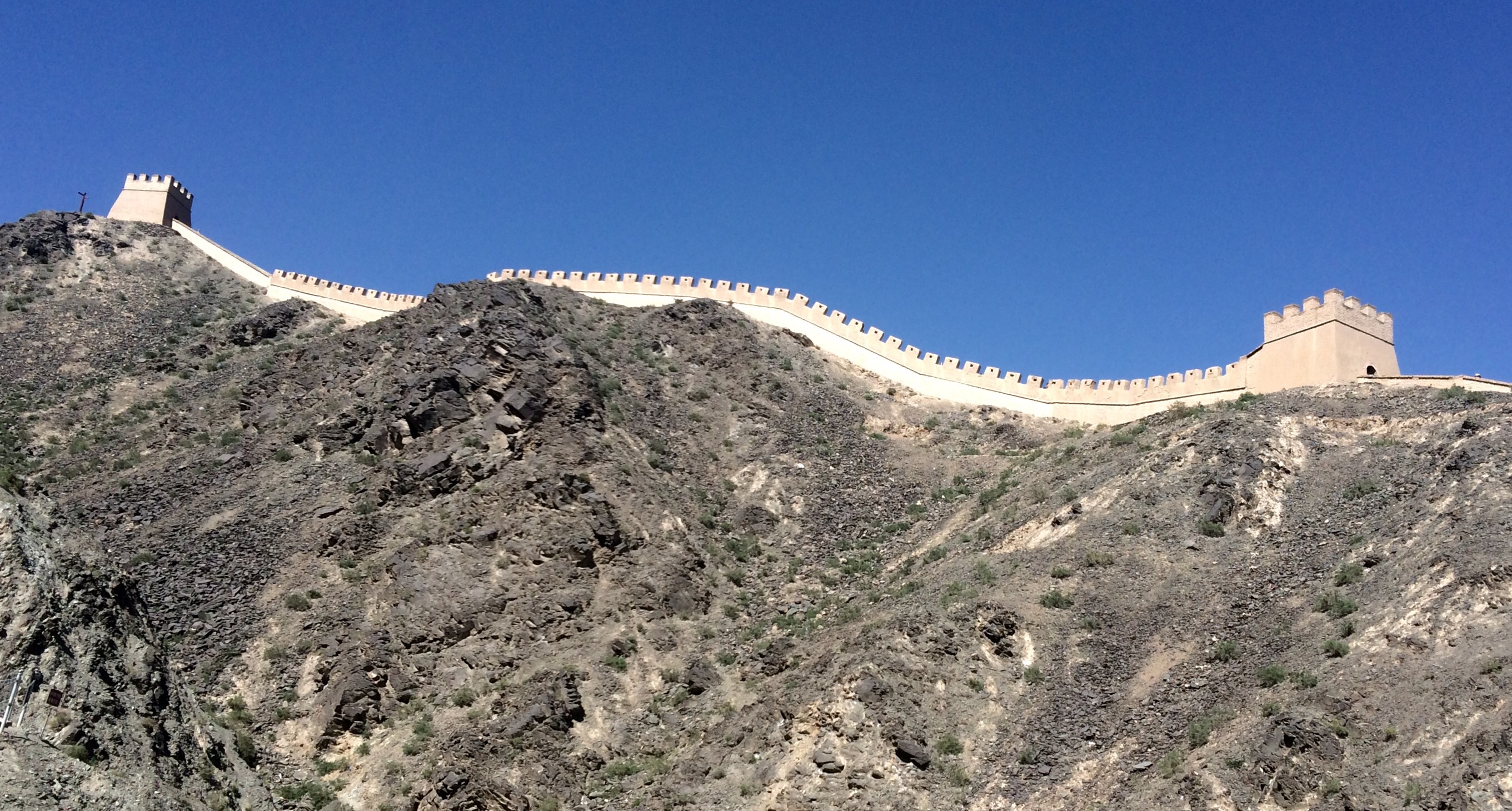

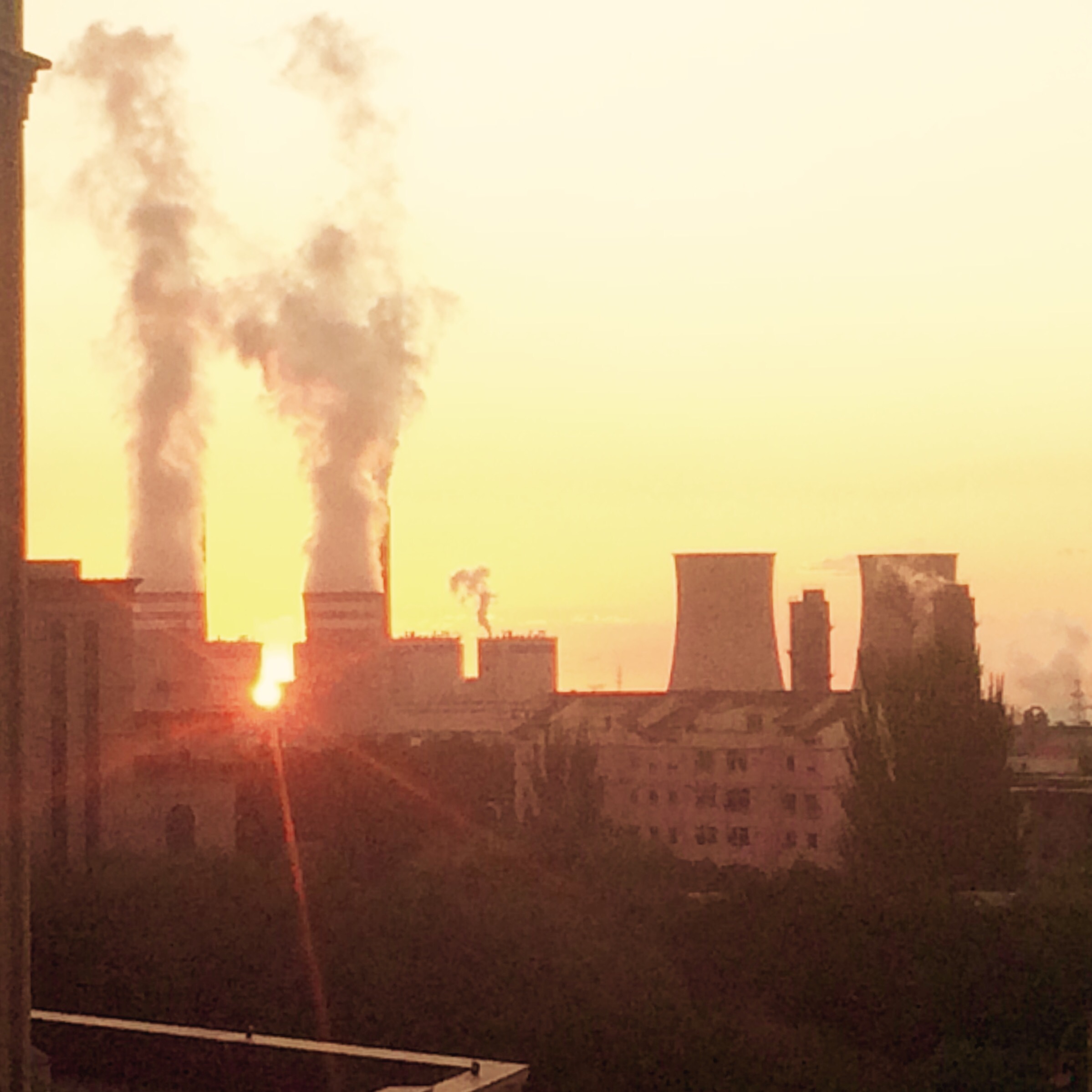
 Something about this poster for the third and final Wolverine movie with Hugh Jackman almost moves me to tears.
Something about this poster for the third and final Wolverine movie with Hugh Jackman almost moves me to tears.
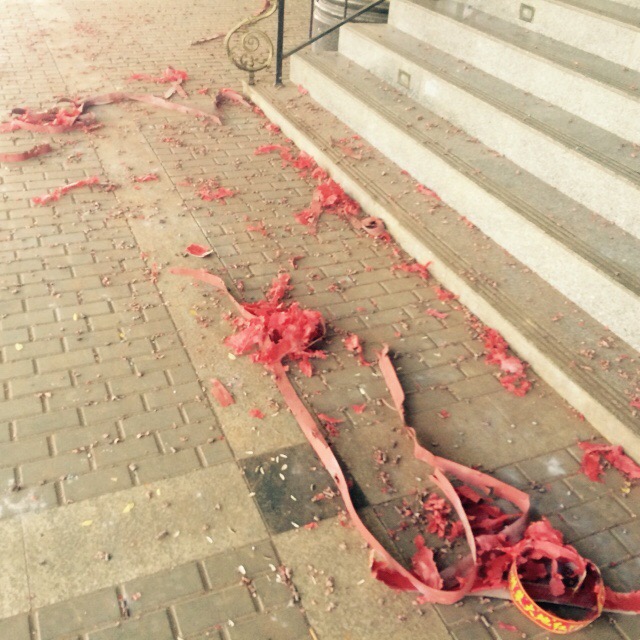
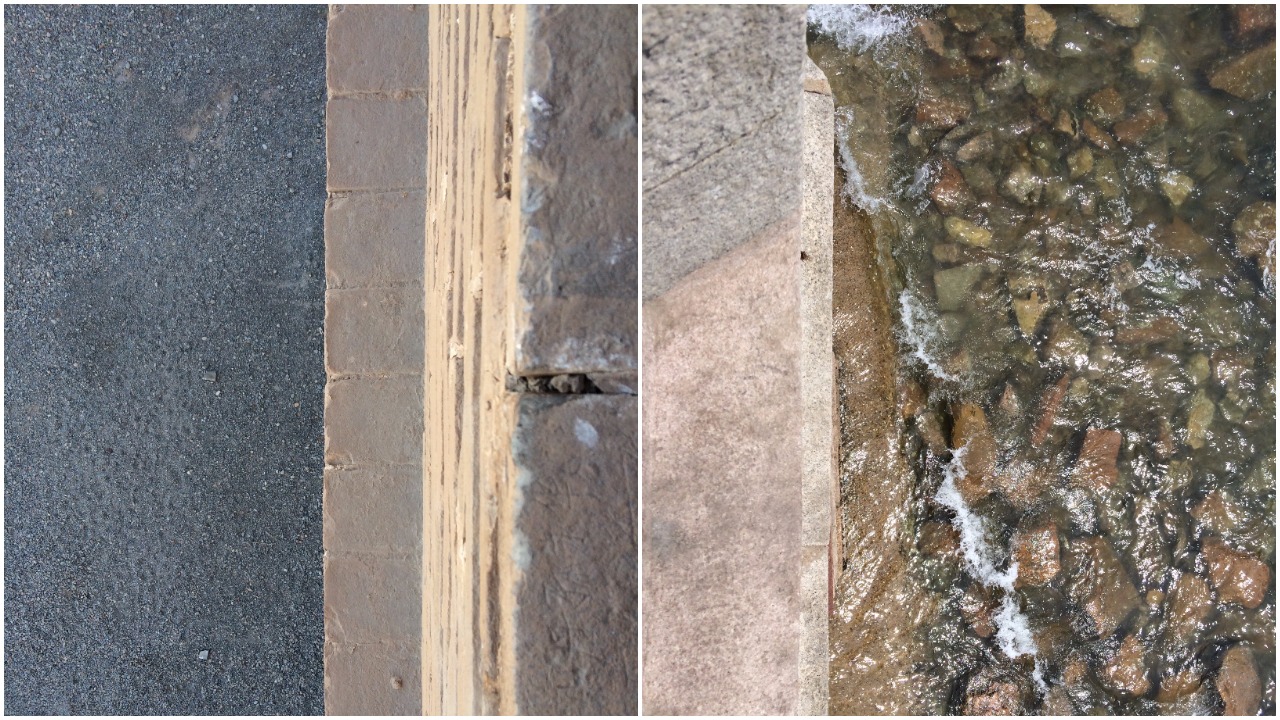

































 Snow-capped Qilian Mountains, hazy in the distance.
Snow-capped Qilian Mountains, hazy in the distance. 









 There was mock procession of soldiers, officials, and concubines marching out of the fort under a Ming banner. (Yes, the soldiers are armed with
There was mock procession of soldiers, officials, and concubines marching out of the fort under a Ming banner. (Yes, the soldiers are armed with 



